|
The Film

Woody Allen: Seven Films—1986-1991
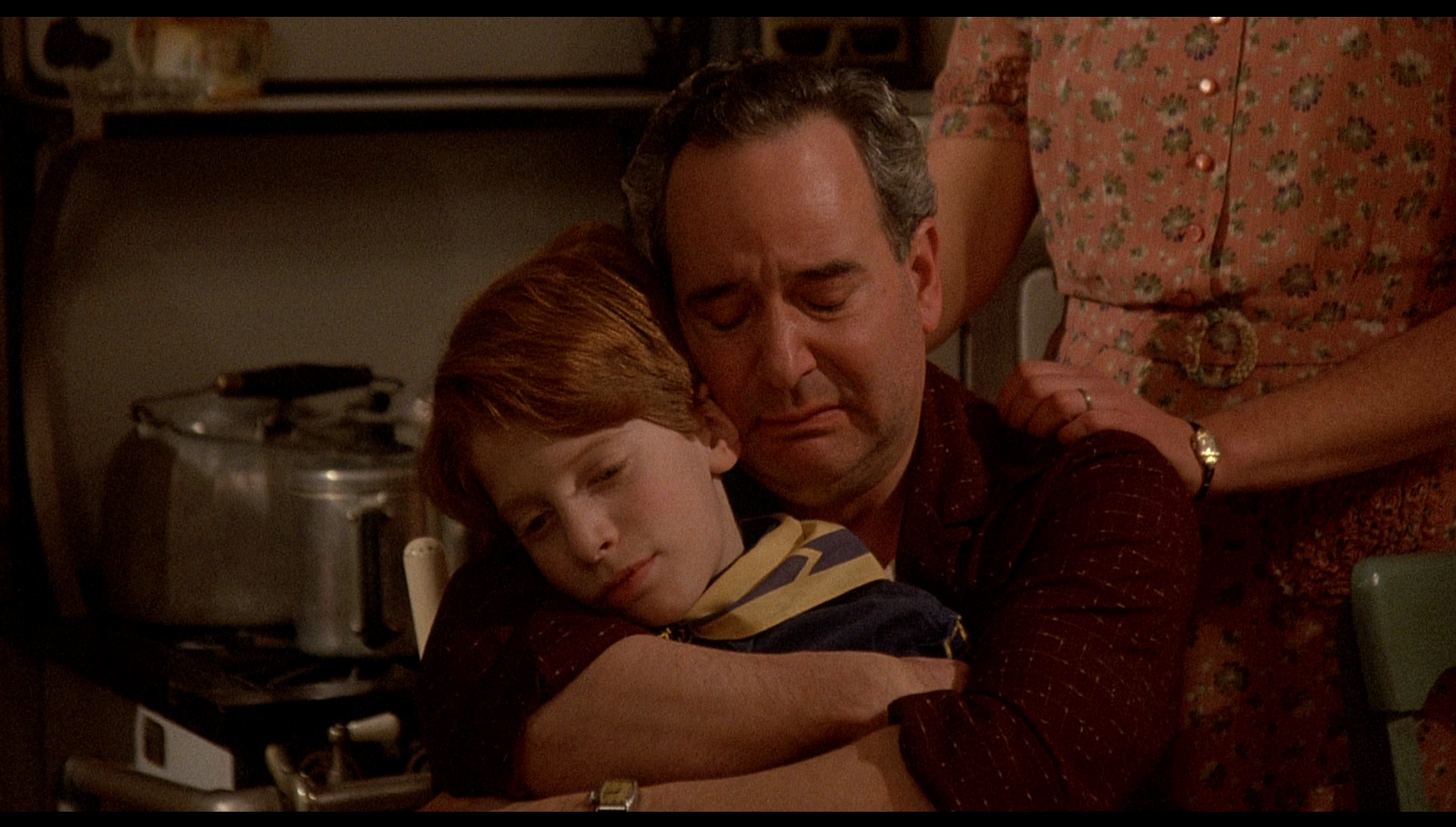 Radio Days (1987) Radio Days (1987)
Radio Days begins with offscreen narration by Woody Allen, who plays Joe; Joe is reflecting on his childhood in Rockaway during the 1930s. Young Joe (Seth Green) grows up listening to the adventure stories of The Masked Avenger and recognising the centrality of the radio to the lives of the members of his extended family. Via a series of vignettes, Joe tells us the story of his youth; all of these stories revolve around the impact of the radio. We are shown Joe’s Aunt Bea (Dianne West), for example, on a date where her suitor runs away in fear after they listen to Orson Welles’ famous War of the Worlds broadcast – leaving Bea to have to walk six miles home.
The stories of Joe’s family members are offset by the story of Sally (Mia Farrow), a cigarette girl who is abducted by gangster Rocco (Danny Aiello) after Sally witnesses a murder that he has committed. Sally and Rocco are surprised to discover that they are from the same neigbourhood. (‘You know, this is a funny coincidence’, Rocco declares, ‘I don’t meet anybody from the old neighbourhood in years. I finally do and I have to kill them’.) After Rocco’s mother (Gina DeAngeles) takes pity on Sally and suggests that Rocco should help her rather than kill her, Sally is set on the path of becoming a radio star.
A largely autobiographical film narrated by Allen himself, Radio Days is structured as a series of vignettes. Allen’s voice guides the film and links the various narratives presented in the picture, with his introduction to the film offering a level of self-referentiality similar to Allen’s opening moments of narration in his earlier pictures Manhattan and Annie Hall: as Radio Days opens, Allen asks the viewer to forgive him for his tendency to ‘romanticise the past’, and though his hometown ‘wasn’t always as stormy and windswept as this [referring to the opening shots of the film], I remember it that way because that was it at its most beautiful’.
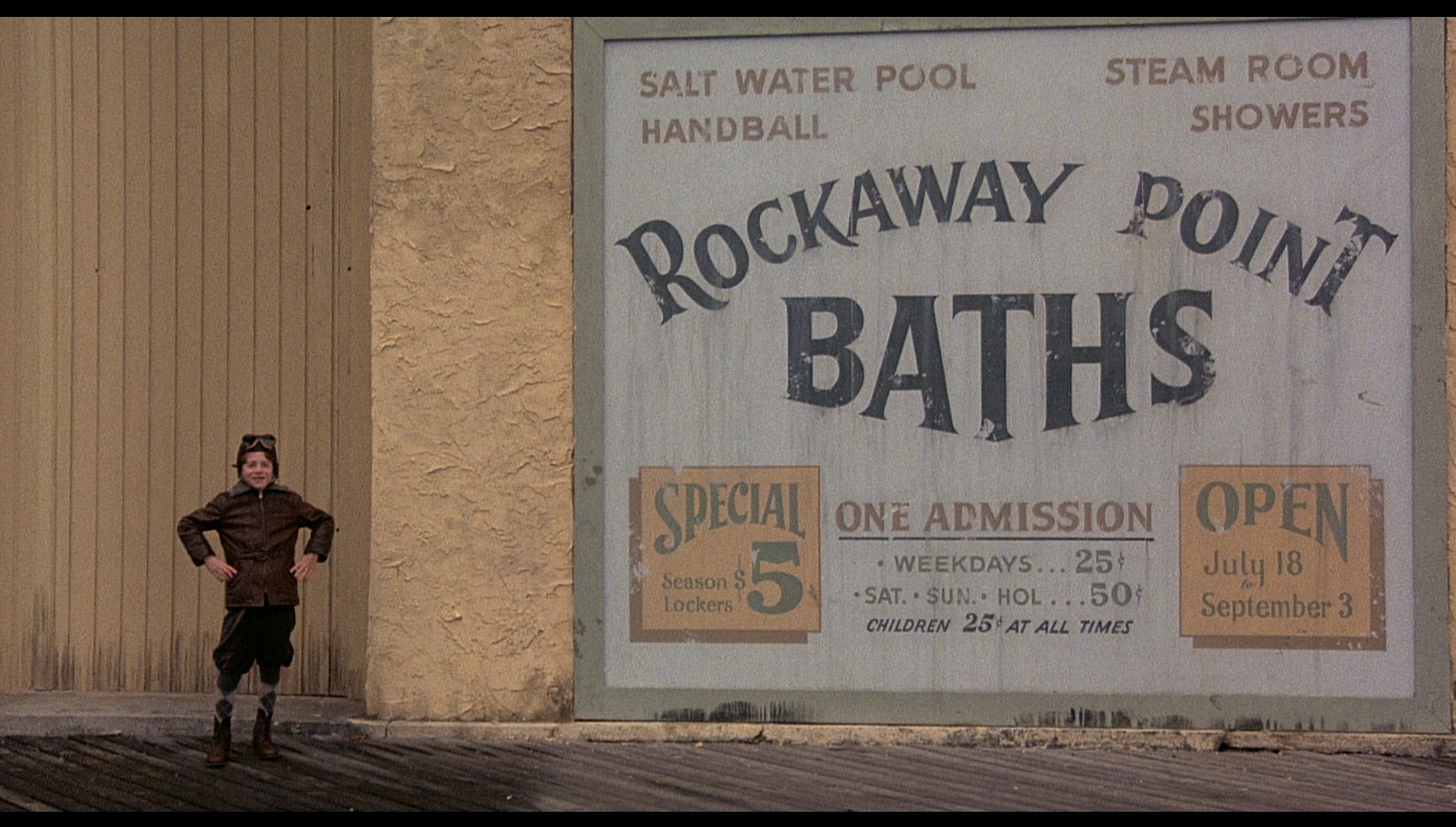 With his opening narration, Allen reinforces for the viewer the sense that what we watch unfold is guided by the narrator’s voice, a visualisation of his memories and prejudices, rather than an ‘accurate’ representation of the past. The narrator, and by extension the camera which visualises the narrator’s memories for the audience, admits that his account is highly subjective and may not be reliable, and as the film unfolds the viewer is offered a nostalgic representation of the titular days of radio; the sense of nostalgia is rife throughout the picture, to the extent that even scenes in which Joe is subjected to physical punishment (for example, his mother, father and their rabbi clouting Joe round the ear whilst arguing over his parents’ use of corporal punishment in the raising of their son; and later, Joe’s father using the belt on Joe) are presented as comic interludes. In this sense, at the time of its original release Radio Days had a strange bedfellow in the form of Stand By Me (1986), Rob Reiner’s adaptation of Stephen King’s 1982 novella The Body; Reiner’s picture is a film that also took a nostalgic look at the past (in the case of Stand By Me, the late 1950s rather than the 1930s and 1940s) and foregrounded the potential unreliability of its adult narrator who, as the film begins, reflects on his adolescence in small-town America. As in Stand By Me, there’s a sadness inherent in the narrator’s recollections of his childhood and relationships which have long since dissolved: ‘Now, I love old radio stories and I’ve collected a million of ‘em’, Allen narrates at the start of the film, ‘I’ve collected ‘em down through the years, like a hobby [….] Now it’s all gone, except for the memories’. At the end of the film, Joe revisits this concept, stating ‘I’ve never forgot any of those people or the voices we used to hear on the radio. Though the truth is, with the passing of each New Year’s Eve, those voices do seem to grow dimmer and dimmer’. With his opening narration, Allen reinforces for the viewer the sense that what we watch unfold is guided by the narrator’s voice, a visualisation of his memories and prejudices, rather than an ‘accurate’ representation of the past. The narrator, and by extension the camera which visualises the narrator’s memories for the audience, admits that his account is highly subjective and may not be reliable, and as the film unfolds the viewer is offered a nostalgic representation of the titular days of radio; the sense of nostalgia is rife throughout the picture, to the extent that even scenes in which Joe is subjected to physical punishment (for example, his mother, father and their rabbi clouting Joe round the ear whilst arguing over his parents’ use of corporal punishment in the raising of their son; and later, Joe’s father using the belt on Joe) are presented as comic interludes. In this sense, at the time of its original release Radio Days had a strange bedfellow in the form of Stand By Me (1986), Rob Reiner’s adaptation of Stephen King’s 1982 novella The Body; Reiner’s picture is a film that also took a nostalgic look at the past (in the case of Stand By Me, the late 1950s rather than the 1930s and 1940s) and foregrounded the potential unreliability of its adult narrator who, as the film begins, reflects on his adolescence in small-town America. As in Stand By Me, there’s a sadness inherent in the narrator’s recollections of his childhood and relationships which have long since dissolved: ‘Now, I love old radio stories and I’ve collected a million of ‘em’, Allen narrates at the start of the film, ‘I’ve collected ‘em down through the years, like a hobby [….] Now it’s all gone, except for the memories’. At the end of the film, Joe revisits this concept, stating ‘I’ve never forgot any of those people or the voices we used to hear on the radio. Though the truth is, with the passing of each New Year’s Eve, those voices do seem to grow dimmer and dimmer’.
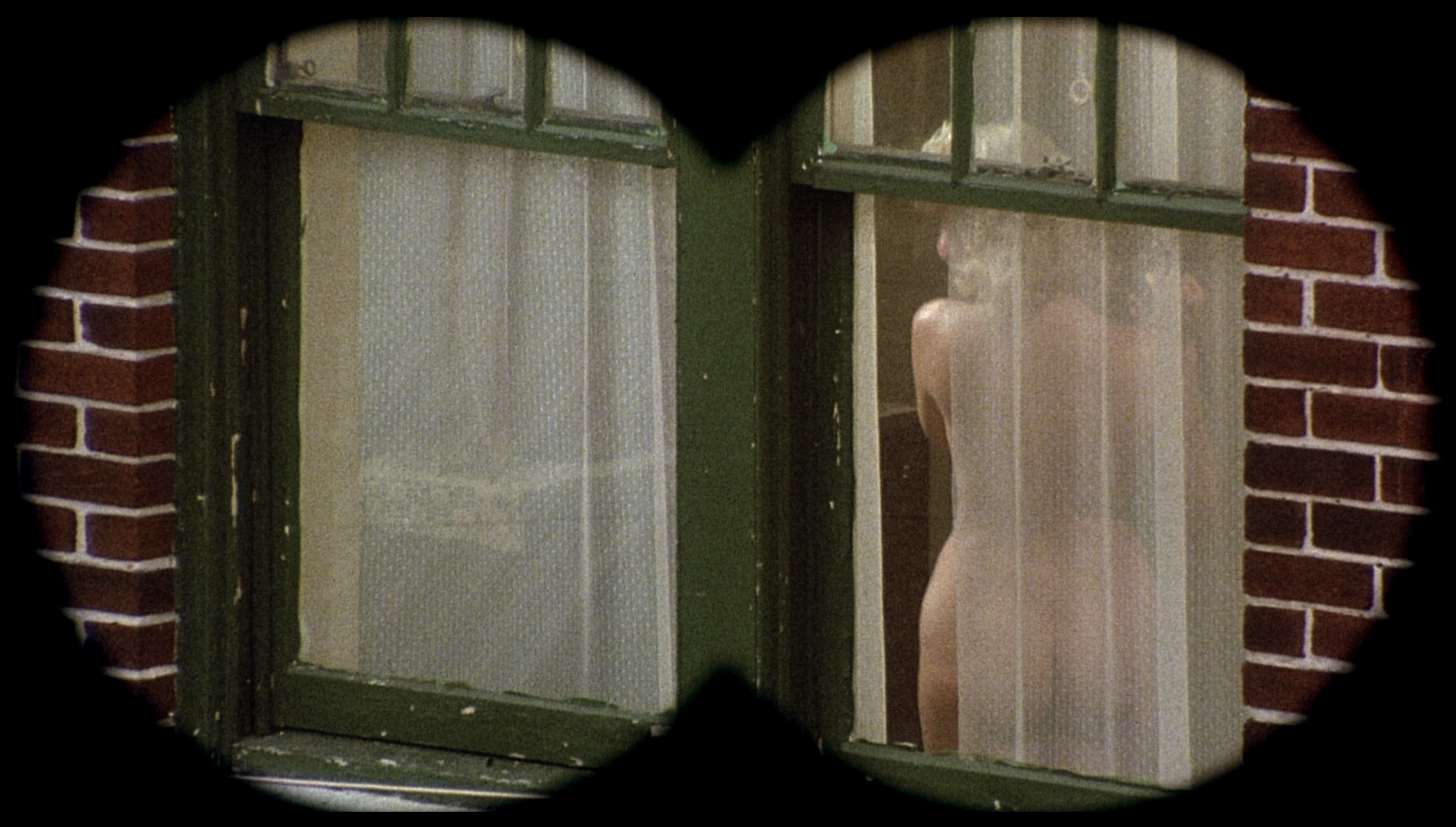 Ultimately, Radio Days is episodic, like a series of sketches sewn together with the loosest of narrative threads, and sometimes treads into the ribald realm of the Fellini-esque – or given the nostalgic depiction of the past and emphasis on the theme of ‘coming of age’, perhaps Tinto Brass’ 1980s films might be a better comparison. In one particular sequence, following the attack on Pearl Harbor, Joe and his friends stand on a rooftop and use a pair of binoculars in an attempt to spot German U-Boats; instead, they spy a naked woman dancing alone in her apartment, the woman’s fuller figure recalling the seductresses in Tinto Brass’ pictures. Later, the woman is revealed to be a substitute teacher who ‘fills in’ for Joe’s class teacher, her appearance in the classroom provoking embarrassment in Joe and his friends. Ultimately, Radio Days is episodic, like a series of sketches sewn together with the loosest of narrative threads, and sometimes treads into the ribald realm of the Fellini-esque – or given the nostalgic depiction of the past and emphasis on the theme of ‘coming of age’, perhaps Tinto Brass’ 1980s films might be a better comparison. In one particular sequence, following the attack on Pearl Harbor, Joe and his friends stand on a rooftop and use a pair of binoculars in an attempt to spot German U-Boats; instead, they spy a naked woman dancing alone in her apartment, the woman’s fuller figure recalling the seductresses in Tinto Brass’ pictures. Later, the woman is revealed to be a substitute teacher who ‘fills in’ for Joe’s class teacher, her appearance in the classroom provoking embarrassment in Joe and his friends.
The very fact that Allen’s narrator doesn’t introduce himself or name himself as a child also reinforces the sense that the film is, to a greater or lesser extent, autobiographical – a personal memoir by Allen. However, though the film draws on memories held by Allen, which have sometimes been cited in interviews with the director, the picture as a whole is a fabrication – a fictional narrative with its origins in its author’s memories. The film juxtaposes its narrator’s reminiscences about his past with stories of the people involved in making radio – in particular, the narrative of cigarette girl Sally’s transition, via her chance encounter with a mobster (played by Danny Aiello), into the hostess of a radio show. Whilst the family listen to a New Year’s Eve party broadcast attended by Sally on the radio, the scene intercut with Joe’s family listening to it via the broadcast, Joe’s mother observes that ‘There are those of us who drink champagne at nightclubs, and those of us who listen to them drink champagne on the radio’.
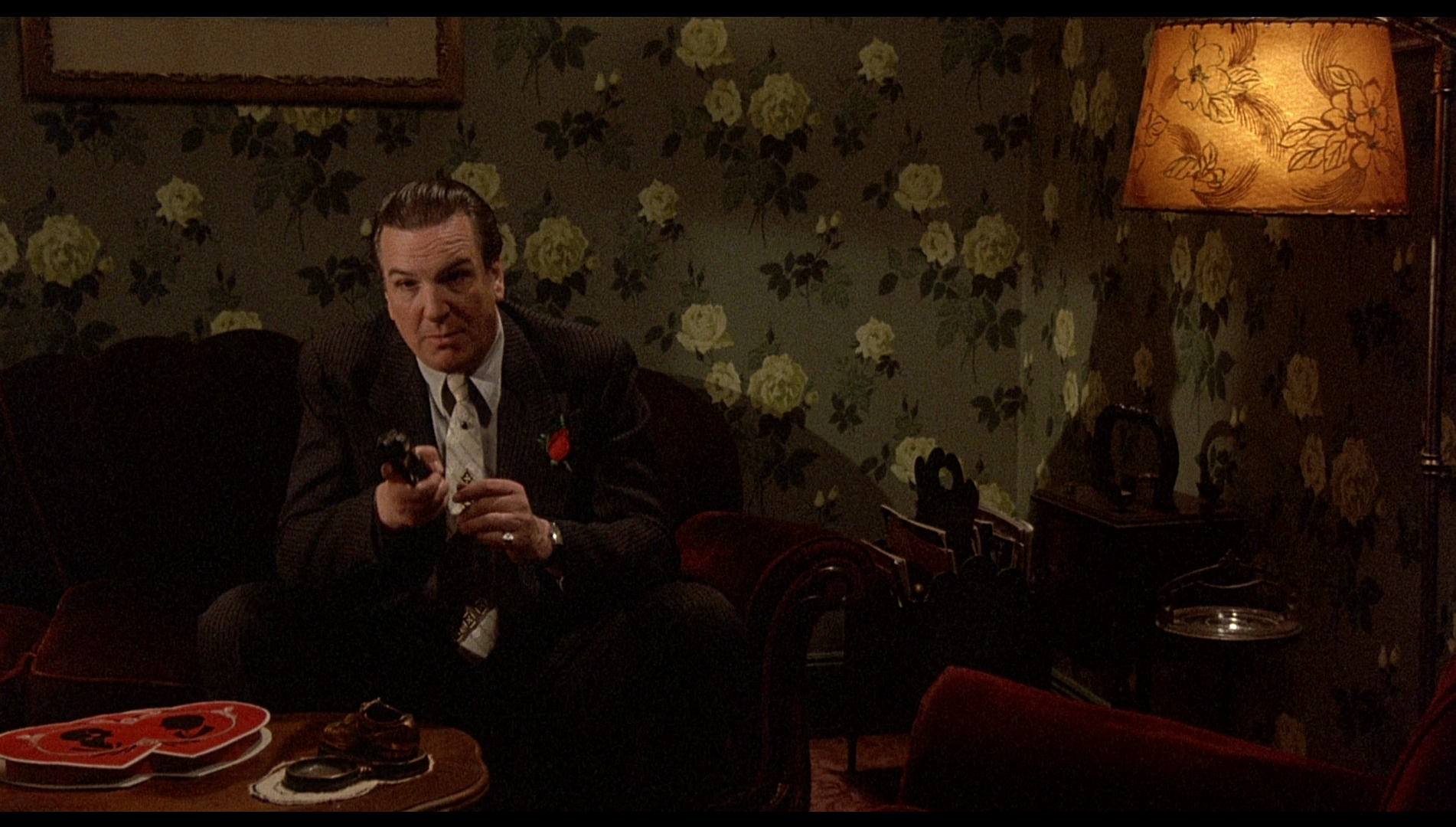 The medium of radio has its own narrative trajectory in the film, which reflects its protagonist’s movement towards adulthood: in the early sequences, the radio is a source of pleasure, characterised by the exciting adventure stories that Joe loves so much, whereas towards the end of the picture the radio becomes associated with the transmission of news stories about the Second World War and the death of Polly Phelps, the young girl who is trapped in a well and whose plight becomes the object of fascination of thousands of listeners to the live radio broadcasts detailing the attempts to rescue her. The former event results in a paradigmatic shift that is recognised by the young Joe: ‘Now it was the Japanese and the Germans who were the villains’, the adult Joe narrates, ‘My friends and I hung on Biff Baxter’s every word, and when he said to keep a sharp eye out for […] submarines off the coast, our parents laughed that we took his words dead seriously’. The medium of radio has its own narrative trajectory in the film, which reflects its protagonist’s movement towards adulthood: in the early sequences, the radio is a source of pleasure, characterised by the exciting adventure stories that Joe loves so much, whereas towards the end of the picture the radio becomes associated with the transmission of news stories about the Second World War and the death of Polly Phelps, the young girl who is trapped in a well and whose plight becomes the object of fascination of thousands of listeners to the live radio broadcasts detailing the attempts to rescue her. The former event results in a paradigmatic shift that is recognised by the young Joe: ‘Now it was the Japanese and the Germans who were the villains’, the adult Joe narrates, ‘My friends and I hung on Biff Baxter’s every word, and when he said to keep a sharp eye out for […] submarines off the coast, our parents laughed that we took his words dead seriously’.
In particular, Radio Days satirises the extent to which radio, the most popular and accessible medium of the era depicted in the film, was seen as a disruptive influence on the lives of the young. Joe’s parents, and especially his mother, continually criticise Joe’s fascination with the radio and cite it as a disruptive influence on his life and education. ‘Pay more attention to your schoolwork and less to the radio’, Joe’s mother tells him at the start of the film. ‘You always listen to the radio’, Joe responds. ‘It’s different. Our lives are ruined already’, his mother tells him. Radio is identified as having a negative impact on Joe’s behaviour and his intellect. ‘Listening to stories of foolishness and violence; this is no way for a boy to grow up’, Joe’s family’s rabbi asserts. (Interestingly, this dovetails and contrasts with Allen’s depiction of the world of television in two of the later films collected in this set, Crimes and Misdemeanors and Alice.)
 Hannah and Her Sisters (1986) Hannah and Her Sisters (1986)
Hannah and Her Sisters begins at a Thanksgiving party thrown by the family of Hannah (Mia Farrow), where Hannah’s husband Elliot (Michael Caine), a financial advisor, fawns over Hannah’s sister Lee (Barbara Hershey). Lee is involved with an older man, Frederick (Max Von Sydow); Frederick is an artist, and through his relationship with Lee, Frederick has developed within her a fascination with the world of art. Elliot and Frederick’s worlds collide when Elliot introduces Frederick to some of his clients who wish to purchase some of Frederick’s artworks; Frederick receives these clients bitterly, believing them to be uncultured and ignorant.
Hannah’s other sisters, April (Carrie Fisher) and Holly (Dianne West), compete for the affections of David (Sam Waterston). Meanwhile, television producer Mickey (Woody Allen), Hannah’s previous lover, visits a doctor after experiencing some hearing loss. The doctor refers Mickey to the hospital; this causes Mickey to panic, and he comes to believe that he has a brain tumour.
As Mickey’s concerns over his health escalate, and believing himself to be a terminal case he experiences a crisis of faith which leads him to experiment with different religions, Elliot begins an illicit affair with Lee. Via flashbacks, it is revealed that Mickey and Hannah’s relationship ended following their discovery that Mickey is infertile. (When Hannah suggests this infertility may be owing to ‘excessive masturbation’, Mickey fires back: ‘Don’t start knocking my hobbies now’.)
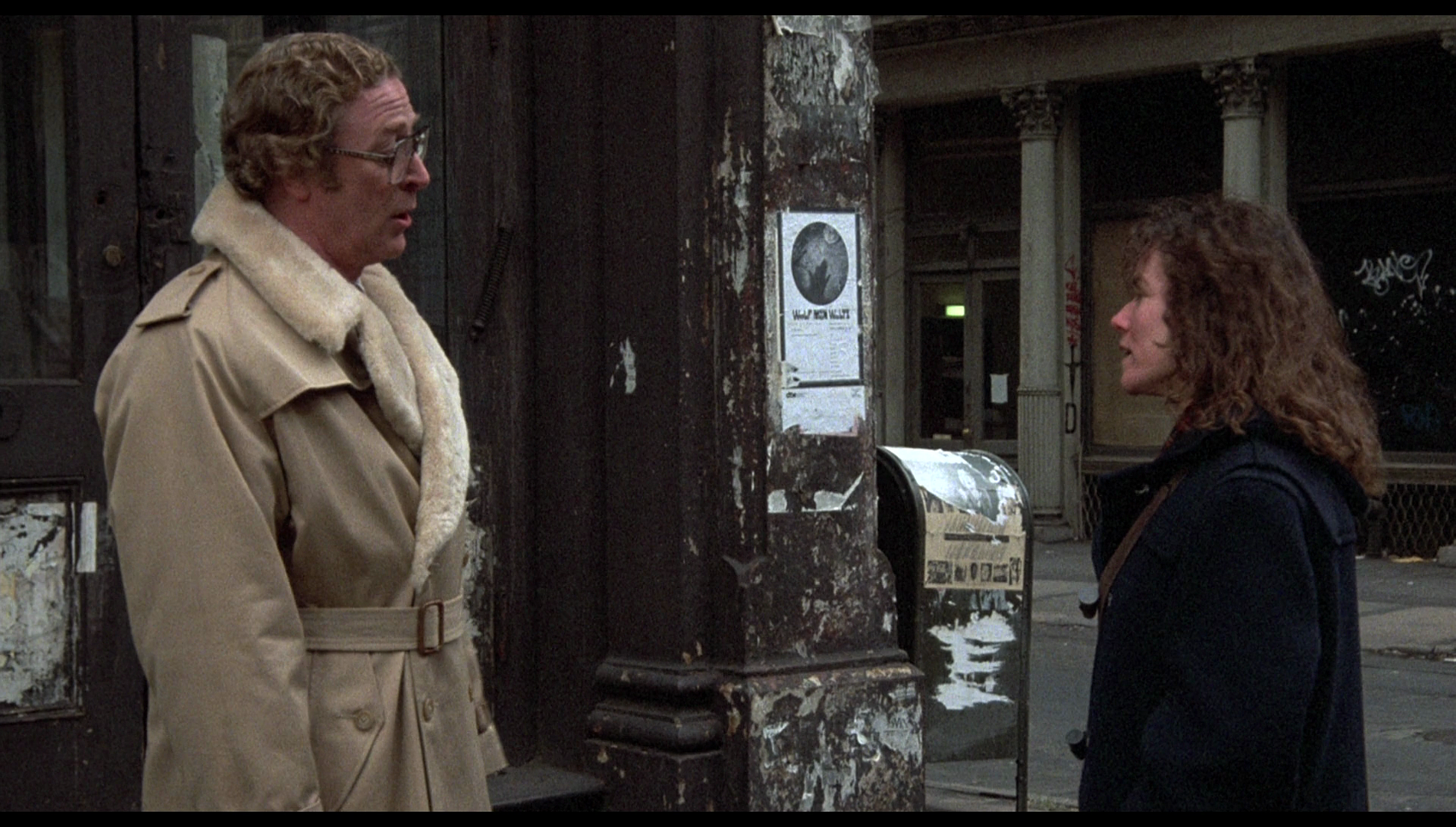 Filled with promises given to her Elliot, Lee ends her relationship with Frederick. However, riddled with guilt over his affair with Lee and reminded of his love for Hannah, Elliot struggles with his conscience and decides to end his relationship with Lee. Filled with promises given to her Elliot, Lee ends her relationship with Frederick. However, riddled with guilt over his affair with Lee and reminded of his love for Hannah, Elliot struggles with his conscience and decides to end his relationship with Lee.
The film focalises its narrative through a number of characters, who narrate at different points in the film. The picture opens with Elliot’s perspective, at the Thanksgiving party thrown by Hannah’s family where Elliot fawns over Lee whilst narrating: ‘God, she’s beautiful’, he says, ‘I hear myself mooning over you, and it’s disgusting’. Following the Thanksgiving party, the film presents a number of scenes from the perspective of Lee as, in her narration, Lee reflects on Elliot’s fascination with her (‘Is it my imagination or does Elliot have a little crush on me?’, she asks). Elliot and Lee’s lover Frederick are worlds apart: in one of a number of unconventional romantic roles played by Michael Caine during the 1980s, Elliot is repressed and neurotic; by contrast, Frederick is expressive and misanthropic. When Lee asks Frederick why he didn’t go with her to her family’s Thanksgiving party, Frederick responds by telling her ‘I’m going through a period in my life where I just don’t want to be around people. I didn’t want to abuse anyone’. ‘You’re such a puzzle’, Lee tells him, ‘So sweet with me and so contemptuous of everyone else’. Later, watching a television documentary about Auschwitz, Frederick tells Lee that the question shouldn’t be ‘How could it possibly happen’ but rather, ’Given what people are, the question is: “Why doesn’t it happen more often?”’ Channel surfing, Frederick notes grimly that television allows on to ‘see the whole culture: Nazis, deodorant salesmen, wrestlers, beauty contests, the talk show. Can you imagine the level of the mind that watches wrestling, huh?’ Frederick speaks bitterly of Elliot, who is negotiating the purchase of some objets d’art for his clients, including amongst their number rock musicians, whom Frederick believes to be uncultured and solely interested in these artworks for their monetary value: ‘I’m sure those morons he handles have a great appreciation for art’, Frederick tells Lee sarcastically, ‘He’s a glorified accountant and he lusts after you’.
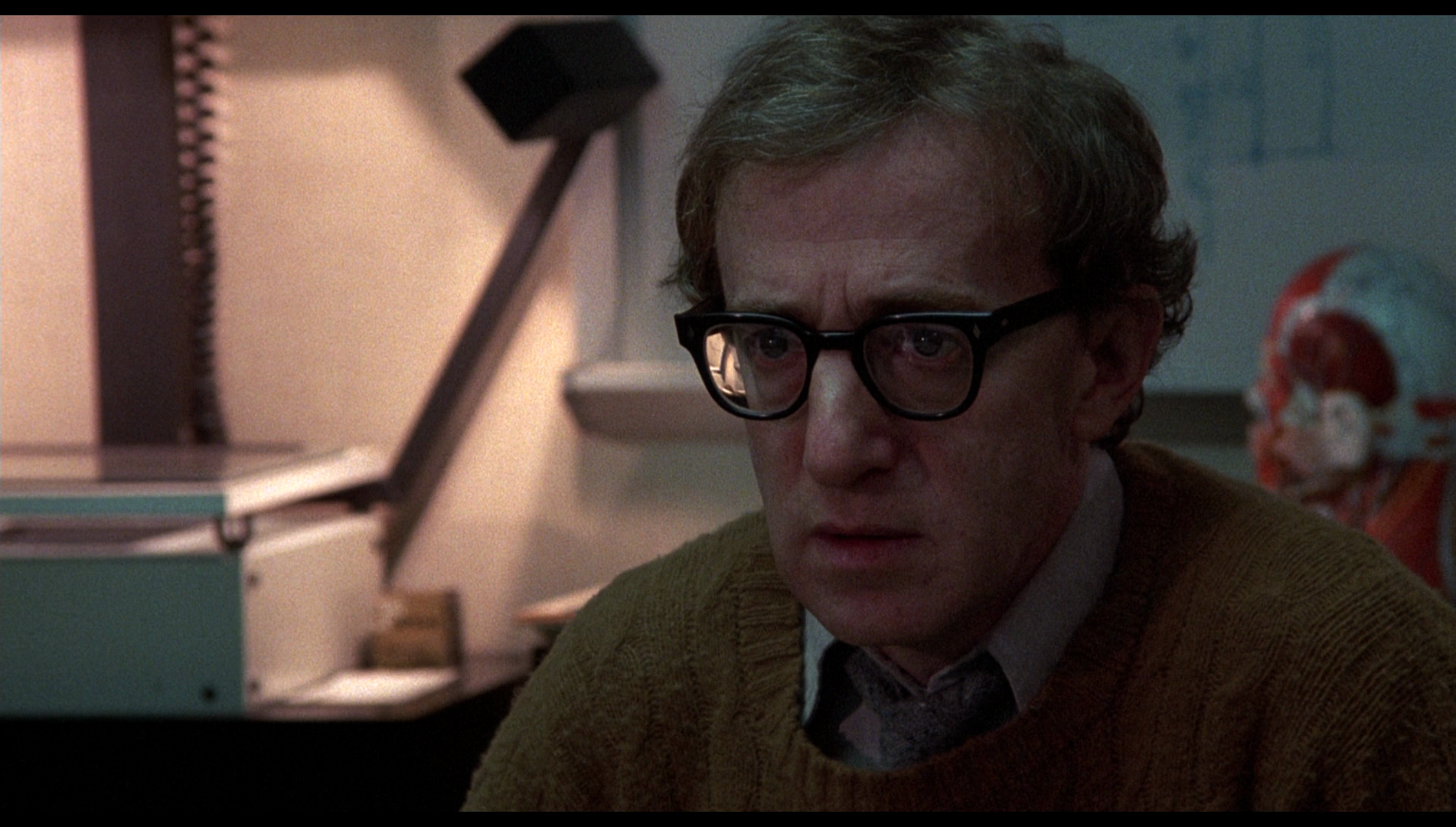 Where Frederick suggests Elliot’s clients have corrupted their comprehension of art through their association of it with money and status, during his existential crisis Mickey is able to pick and choose from religions as if shopping at a supermarket: in one dryly funny visual gag, Mickey returns from a shopping trip and unpacks from a paper shopping bag a crucifix and portrait of Christ alongside a loaf of Wonder Bread and a jar of mayonnaise. Mickey’s attempt at becoming a practising Catholic has been performed as simply as a change in diet. Where Frederick suggests Elliot’s clients have corrupted their comprehension of art through their association of it with money and status, during his existential crisis Mickey is able to pick and choose from religions as if shopping at a supermarket: in one dryly funny visual gag, Mickey returns from a shopping trip and unpacks from a paper shopping bag a crucifix and portrait of Christ alongside a loaf of Wonder Bread and a jar of mayonnaise. Mickey’s attempt at becoming a practising Catholic has been performed as simply as a change in diet.
Mickey, a television producer and former lover of Hannah’s, is introduced in a more assertive position than most characters Allen plays in his own pictures. In his introductory scene, Mickey is shown in an argument behind-the-scenes of a television production, in a conversation which has uncomfortable echoes of the allegations that would pursue Allen following the collapse of his relationship with Mia Farrow in 1992. ‘Child molestation is a dirty subject’, an assistant tells Mickey, explaining why their show hasn’t been commissioned. ‘But half the country’s doing it’, Mickey protests. ‘We can’t name names’, the assistant tells him. ‘We don’t name names’, Mickey argues, ‘We say “The Pope”’. As Mickey comes to believe that he has a brain tumour, he begins to look at his life differently: ‘I was miserable this morning’, he says, ‘I was happy but I just didn’t know I was happy’. When Mickey is told that he is, in the words of the doctor, ‘just fine’, he refuses to celebrate and becomes more depressed than ever: ‘Do you realise what a thread we’re hanging by?’, he asks his assistant when she questions why he isn’t happy at the news he has received, ‘Can you understand how meaningless everything is?’ ‘Yeah, but you’re not dying’, she reminds him. ‘I’m not dying now’, Mickey responds, but eventually I’m going to be in that position’. Mickey contemplates suicide but then thinks of the shame it would bring on his parents, so he would have to kill them first – and his aunts and uncles. ‘It’d be a bloodbath’, he opines in his narration.
Essentially, the film juxtaposes the worlds of Frederick Mickey (art) with that of Elliot (finance). The voiceovers by these two characters, and by the other characters who narrate the story, are conversational and confessional in tone – with a sense that the characters are unburdening themselves to the narratee. The film’s interweaving of these different narratives – Elliot’s infatuation with Lee; Mickey’s illness and the introspection and uncertainty this provokes; the lives of the sisters, their lovers and former lovers – is effortless, the use of intertitles fragmenting the narrative and drawing attention to its construction and organisation in a very formalised manner. Interestingly, the film’s explicit moments of analepsis are all guided by Mickey’s narration and presented from his point-of-view (the revelation of Mickey’s infertility; Mickey’s date with Holly).
 Hannah and Her Sisters was reputedly inspired by Tolstoy’s Anna Karenina (1873-7) and the novel’s opening assertion that ‘Happy families are all alike; every unhappy family is unhappy in its own way’. Certainly, Allen’s depiction of Hannah’s family has been said to have been heavily based on the family of Mia Farrow, Elliot’s erotic fascination with the sister of his wife having its roots in a peccadillo of Allen’s – in particular, his sexual interest in both Farrow’s sister Steffi and the sisters of Allen’s previous lover Diane Keaton. Hannah and Her Sisters was reputedly inspired by Tolstoy’s Anna Karenina (1873-7) and the novel’s opening assertion that ‘Happy families are all alike; every unhappy family is unhappy in its own way’. Certainly, Allen’s depiction of Hannah’s family has been said to have been heavily based on the family of Mia Farrow, Elliot’s erotic fascination with the sister of his wife having its roots in a peccadillo of Allen’s – in particular, his sexual interest in both Farrow’s sister Steffi and the sisters of Allen’s previous lover Diane Keaton.
Made during a decade when Hollywood was producing a number of films about families and the tensions within them (from Robert Redford’s Ordinary People, 1980, to Adrian Lyne’s Fatal Attraction, 1987), Hannah and Her Sisters depicts life as a very solipsistic pursuit, something which is reinforced by the fllm’s use of narration by the various characters: their voices, and their lives, are separate but often intersect and overlap. Hannah and Her Sisters depicts family life as interweaving and intersecting, mostly at parties. The film’s narrative is structured around three Thanksgiving parties held by Hannah’s family, the parties offering a point of repetition around which everything else rotates, the other narrative events functioning as satellites which orbit these ritualistic family gatherings. At the first of these Thanksgiving parties, Elliot moons over Lee; at the second party depicted in the film, Elliot acknowledges that – despite the devastation he’s caused to Lee’s life in his pursuit of his desire for her – he is willing to reassert his relationship with his wife.
Perhaps because of its channeling of American cinema’s fascination with families during the 1980s, its use of the Thanksgiving dinner as a centerpiece, and the manner in which the various narrative strands are oh-so-easily resolved in the final sequence (something which Allen would later suggest that he regretted), Hannah and Her Sisters was a critical and commercial success for the director – and was nominated for seven Academy Awards including Best Picture, winning three (Best Original Screenplay, Best Supporting Actor and Best Supporting Actress). Certainly, regardless of Allen’s reservations about the film’s ending, the picture contains some of the funniest lines in any of the director’s films: for example, the aforementioned discussion between Mickey and Hannah regarding the former’s infertility; and Mickey comparing his date with Holly, to see a punk rock band he is ‘frightened that after they sing they’re gonna take hostages’, with the Nuremberg trials. The film also contains some of the most pointed dialogue in Allen’s films: Mickey’s realisation towards the end of the picture that ‘For all my education, accomplishments and so-called wisdom, I can’t fathom my own heart’ may in some ways be taken as a summation of the themes of Allen’s cinema.
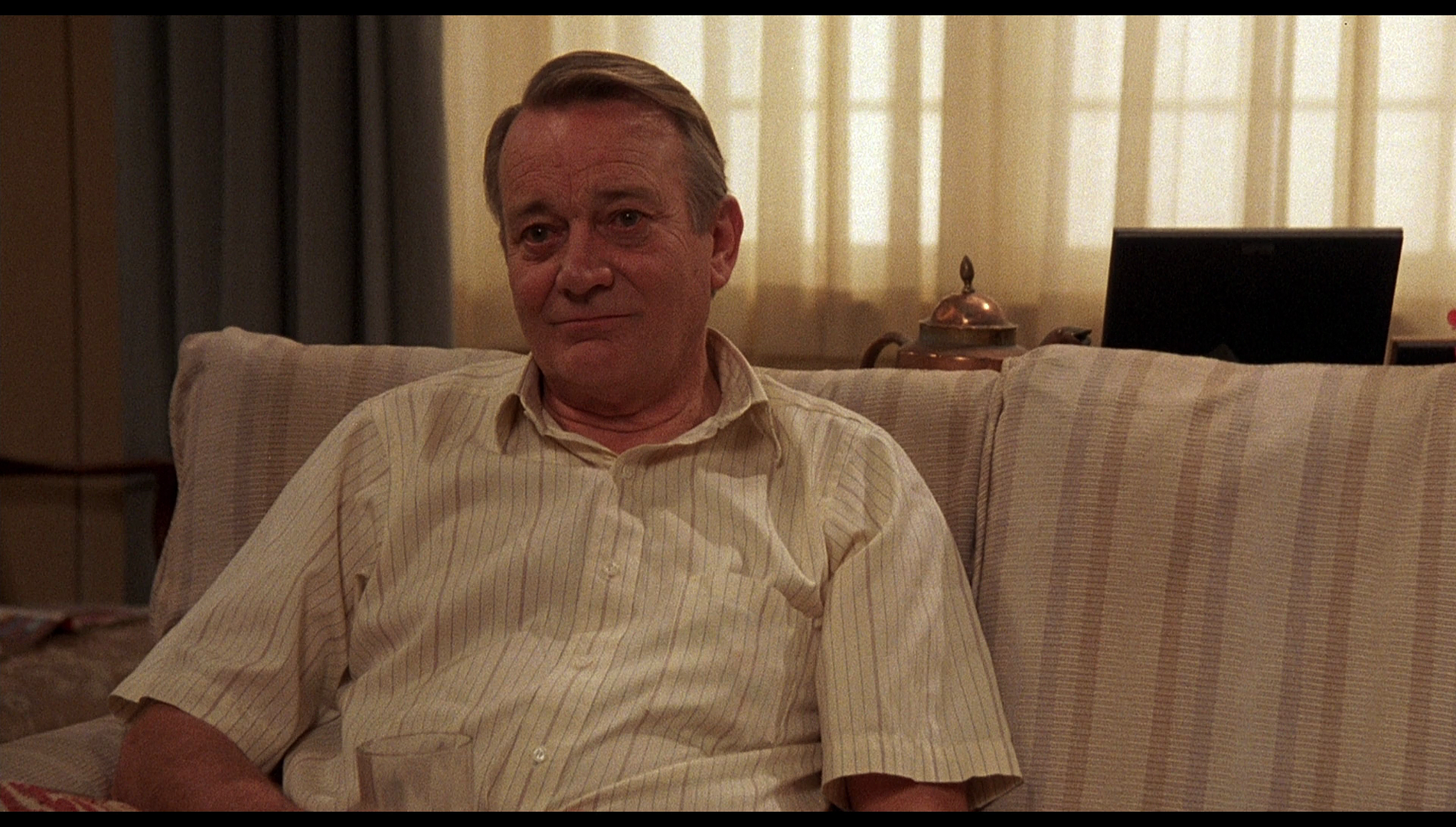 September (1987) September (1987)
In September, Lane (Mia Farrow) is preparing to sell her house to move to New York; she intends to restart her life after having been incarcerated for an indeterminate amount of time following the killing of her mother Diane’s (Elaine Stritch) violent gangster lover when Lane was fourteen years old. Lane wants to pursue a life involved in the arts, and sees New York as ripe with potential for her to do this. She also intends to pursue a relationship with Peter (Sam Waterston), a writer of advertising copy for a Madison Avenue company who has been staying at Lane’s house in the hopes of finding the peace and solitude he needs to write his first book; this is an endeavour in which Peter seems to have been largely unsuccessful.
Unbeknownst to Lane, she has become an object of infatuation for her ageing neighbour Howard (Denholm Elliott), who hopes that Lane will change her mind and decide not to move to New York. Lane, Howard and David gather at her house for a party, along with Lane’s mother Diane and Diane’s husband Lloyd (Jack Warden). Diane is a former starlet who was involved in a number of high profile affairs during her youth; the violent gangster with whom Diane was involved was simply one in a long line of sordid high profile affairs, before Diane settled down with the distinctly deeply grounded physicist Lloyd. However, now in her twilight years Diane yearns for the glamour of her past, and she approaches Peter with the intention of him perhaps writing a biography of Diane – including coverage of the incident in which her gangster lover was shot and killed. Lane is dead set against this.
 Meanwhile, Peter begins to make clear his desire not for Lane but for her friend Steffi (Dianne West), who is married with children. As the characters orbit one another, teasing out their secrets and desires, Peter’s desire for Steffi and Howard’s obsession with Lane threaten to erupt – as does an even more powerful secret concerning Lane and her mother. Meanwhile, Peter begins to make clear his desire not for Lane but for her friend Steffi (Dianne West), who is married with children. As the characters orbit one another, teasing out their secrets and desires, Peter’s desire for Steffi and Howard’s obsession with Lane threaten to erupt – as does an even more powerful secret concerning Lane and her mother.
September is very much in the vein of Allen’s previous picture Interiors (1978) and the later Another Woman; it’s a film influenced by Allen’s fascination with Ingmar Bergman. With its limited sets and small cast, September is very theatrical and clearly a ‘chamber piece’; the small group of characters are confined within Lane’s house and the condensed narrative unfolds in what feels almost like ‘real time’ (though it isn’t). Allen was influenced by Russian theatre and ‘the kind of stories by Turgenev and Chekhov, which have a certain kind of comedy in them. It’s not real comedy but, I guess, comedy of desperation and anxiety’ (Allen, quoted in Lax, 1987). Allen originally shot parts of the film with Christopher Walken playing Peter, before deciding Walken was wrong for the role and replacing him with Sam Shepard. Allen completed the film with Shepard playing Peter, Maureen O’Sullivan as Diane, Denholm Elliott as Lloyd and Charles Durning as Howard. However, after seeing an assembly of the finished film he decided to reshoot it entirely with a different cast (though retaining Denholm Elliott and casting him as Howard instead of Lloyd). Where Maureen O’Sullivan, who was unable to act in the reshot picture owing to illness, invested Diane with a sense of vulnerability, Elaine Stritch ‘was more in charge’ (Lax, op cit.).
Diane’s relationship with Lane is tense, their subtle antagonism grounded in Lane’s feelings about her mother’s past and the incident which ended in Lane shooting Diane’s previous lover. For her part, obsessed with the glamour of her past Diane chastises Lane’s dowdy dress sense: ‘You’re young, you’re lovely’, Diane says before adding, ‘Of course, you dress like a Polish refugee’. Diane continues by observing, ‘It’s hell getting older, especially when you feel twenty-one inside. All the strengths that sustain you through your life just vanish one by one. And you study your face in the mirror and you notice something is missing, and you realise it’s your future’.
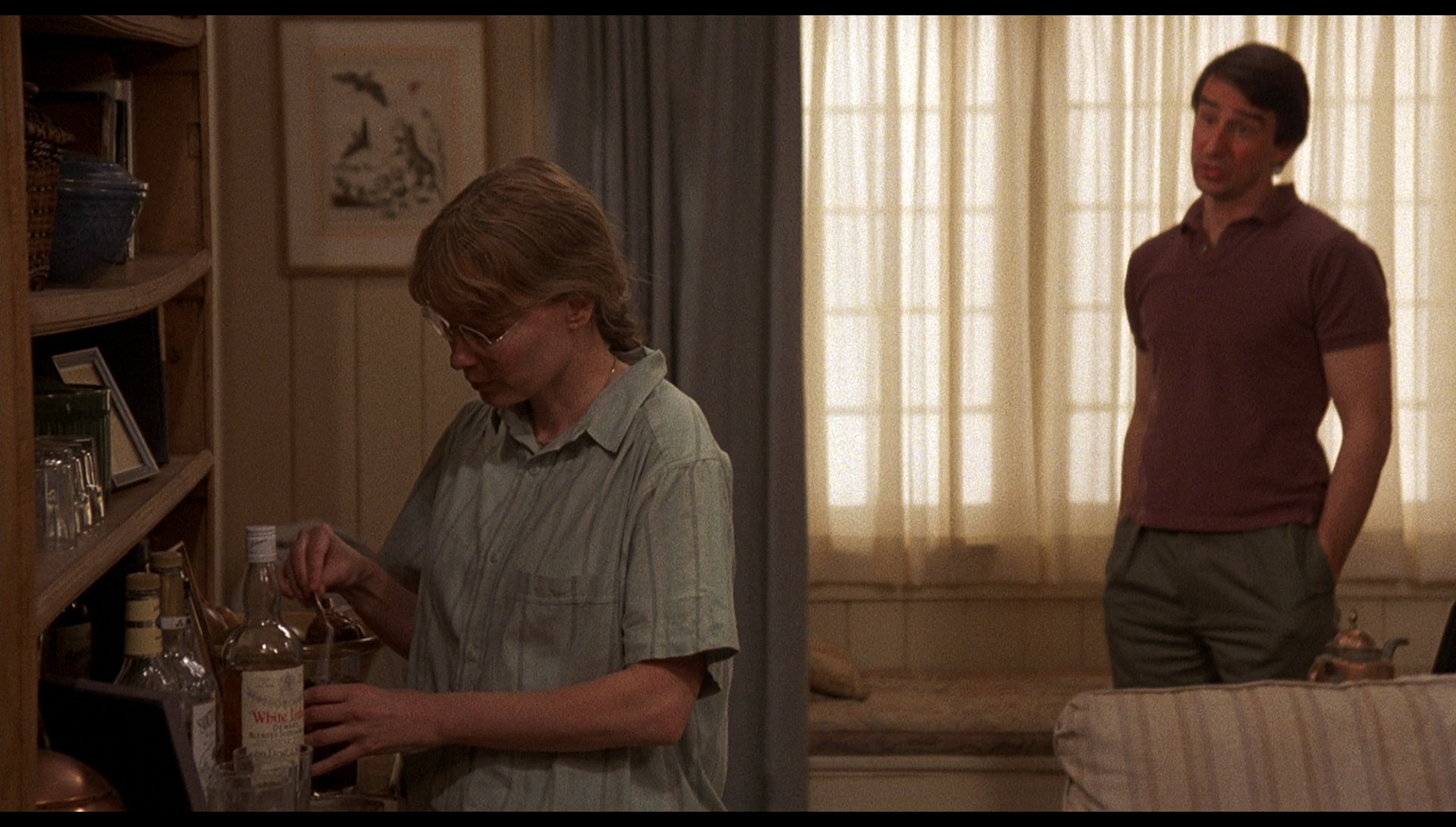 The film’s dialogue is often philosophical, characters reflecting constantly on the perceived meaningless of existence (the film’s characters repeatedly assert that they find themselves ‘floundering’) and the randomness of life. At one point, Peter asks Lloyd, ‘Is there anything more terrifying than the destruction of the world?’ In response, Lloyd asserts ‘Yes, the realisation that it doesn’t matter one way or another’: Lloyd tells Peter that the stars are ‘vaguely evocative of some deep truth that keeps slipping away’, and that everything is really ‘haphazard, morally neutral and unimaginably violent’. All of the characters are riddled with doubt of one form or another: an advertising copy writer, Peter doubts his ability to transfer his talent to writing a book, realising that although both activities involve writing the skills and motivation required in each endeavour is very different; alienated from the glamour of her youth, Diane doubts her entire existence; riddled with love for Lane, Howard is insecure in expressing his feelings towards her; and following Peter’s approaches towards her, Steffie begins to doubt her marriage. Desire, whether for a person or a pursuit in life, is here depicted as self-destructive and almost wholly misplaced. As Peter observes near the beginning of the film, ‘Some people are survivors, and some people allow life’s tragedies to annihilate them. This is just one of the cruelties of living’. The film’s dialogue is often philosophical, characters reflecting constantly on the perceived meaningless of existence (the film’s characters repeatedly assert that they find themselves ‘floundering’) and the randomness of life. At one point, Peter asks Lloyd, ‘Is there anything more terrifying than the destruction of the world?’ In response, Lloyd asserts ‘Yes, the realisation that it doesn’t matter one way or another’: Lloyd tells Peter that the stars are ‘vaguely evocative of some deep truth that keeps slipping away’, and that everything is really ‘haphazard, morally neutral and unimaginably violent’. All of the characters are riddled with doubt of one form or another: an advertising copy writer, Peter doubts his ability to transfer his talent to writing a book, realising that although both activities involve writing the skills and motivation required in each endeavour is very different; alienated from the glamour of her youth, Diane doubts her entire existence; riddled with love for Lane, Howard is insecure in expressing his feelings towards her; and following Peter’s approaches towards her, Steffie begins to doubt her marriage. Desire, whether for a person or a pursuit in life, is here depicted as self-destructive and almost wholly misplaced. As Peter observes near the beginning of the film, ‘Some people are survivors, and some people allow life’s tragedies to annihilate them. This is just one of the cruelties of living’.
The characters circle one another like satellites, and the film’s theme of unfulfilled desire and ambition, and a lack of meaningful and positive social connections seems like a validation of E M Forster’s plea at the end of his 1910 novel Howards End: ‘Only connect’. The most unpleasant character here is Peter, who seems cognisant of his conscious exploitation of Lane’s infatuation with him, expressing awareness of this to Steffie as a prelude of his attempted seduction of her. Like Elliot in Hannah and Her Sisters, Peter knowingly manipulates a fragile woman into desiring him before rejecting her; he’s a particularly insidious creature. Instinctively protective of Lane, Howard is cynical of Peter’s stated ambition of writing a book about ‘survival’: ‘We don’t need another book about survival’, Howard says, ‘We already have the Boy Scout Manual [….] Writing beer commercials and deodorant ads is more within his grasp’.
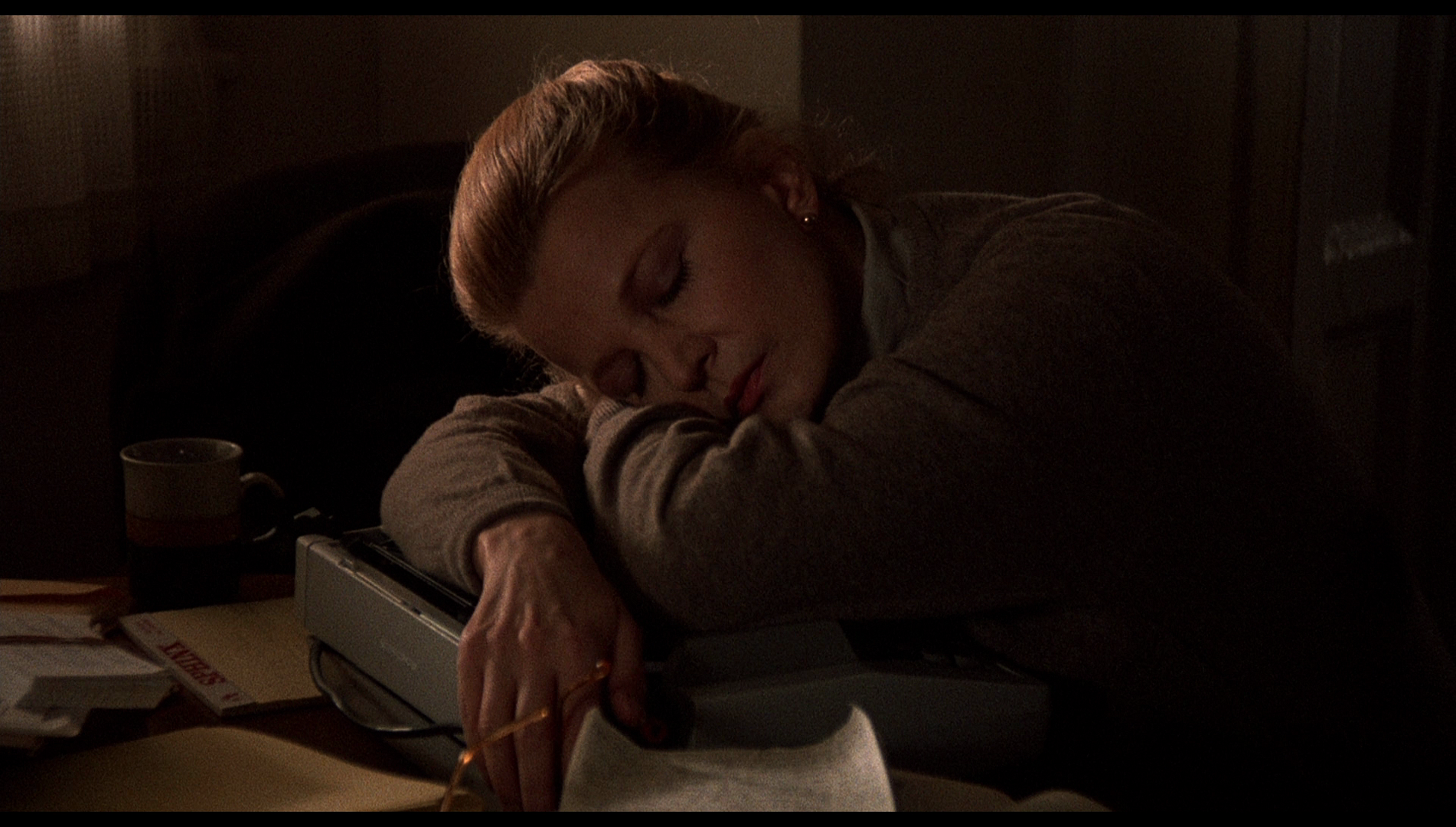 Another Woman (1988) Another Woman (1988)
A fifty-something Director of Undergraduate Studies in Philosophy ‘at a very fine women’s college’, Marion Post (Gena Rowlands) is ‘on a leave of absence to begin writing a book’. To achieve this, Marion rents a one-room apartment in the city which she uses as an office, and during the daylight hours she visits this apartment and, reveling in the solitude (‘shut[ting] myself off from everything but the work’) endeavours to write her book.
Through the ventilation system, Marion overhears some of the conversations taking place in the rooms next door; these rooms belong to a therapist, and Marion begins to eavesdrop casually on some of the conversations that take place between the therapist and his clients. She becomes fascinated with the therapy sessions conducted with a specific client, a pregnant woman named Hope (Mia Farrow). Hope, it seems, has contemplated suicide owing to a deepening sense of alienation from her husband and a growing dissonance between her expectations of life and the realities of her existence.
With what she hears of Hope’s therapy sessions acting as a catalyst, Marion begins to look more critically at her own life. She begins to feel estranged from her husband Ken (Ian Holm), and via flashbacks it is revealed that Ken was married to another woman, Kathy (Betty Buckley), when he began his relationship with Marion. Meanwhile, for her part Marion was engaged in a relationship with Ken’s PhD supervisor and friend Larry Lewis (Gene Hackman).
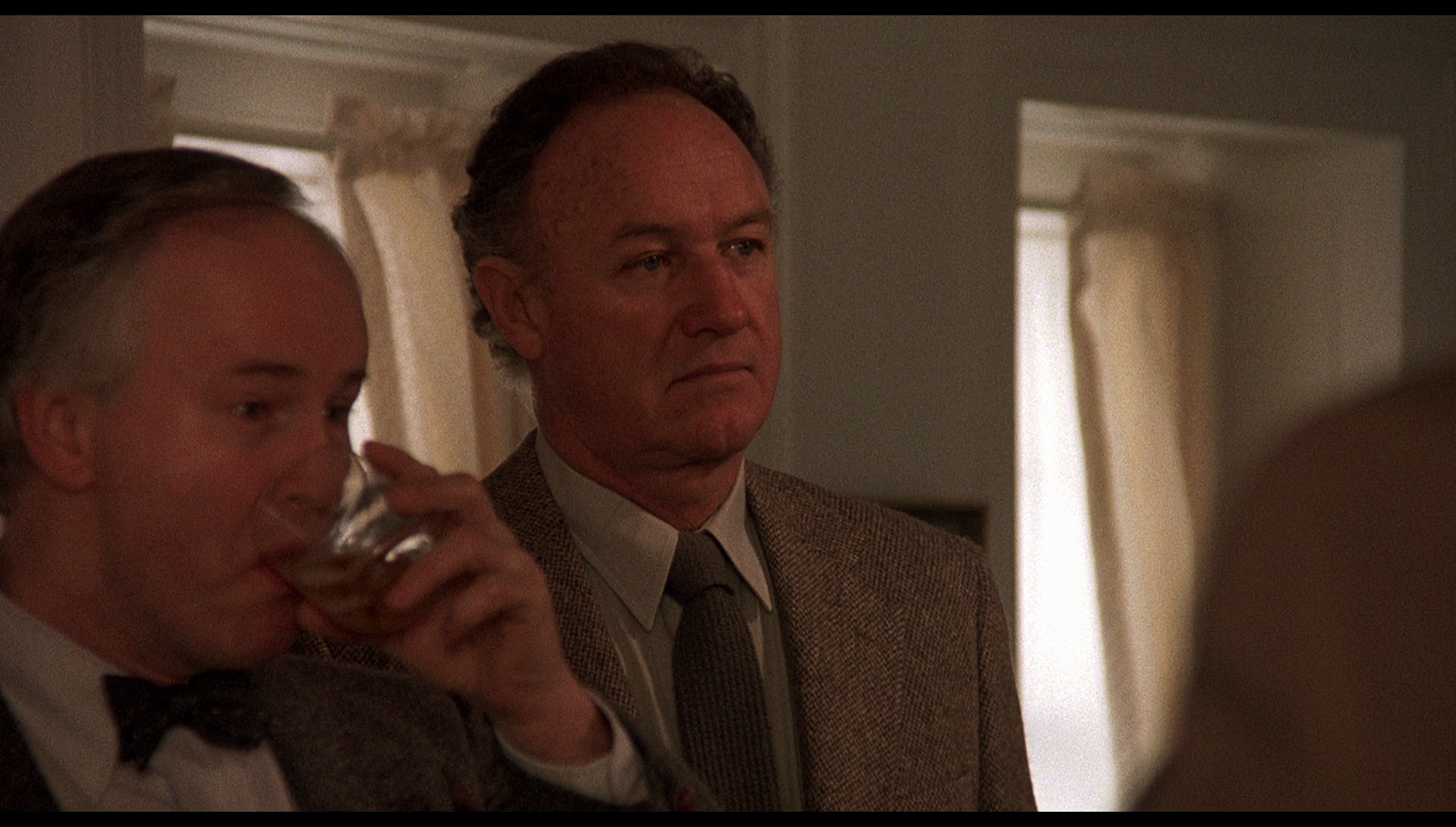 Marion visits her father (John Houseman), an accomplished historian, who lives alone following the recent death of Marion’s mother. Marion’s father chastises her for giving money to her layabout brother Paul (Harris Yulin). Where Marion takes after her rational father, it seems that Paul takes after their mother, a rootless and romantic spirit. Marion visits her father (John Houseman), an accomplished historian, who lives alone following the recent death of Marion’s mother. Marion’s father chastises her for giving money to her layabout brother Paul (Harris Yulin). Where Marion takes after her rational father, it seems that Paul takes after their mother, a rootless and romantic spirit.
Marion becomes obsessed with Hope, to the point that when she spots Hope on the street Marion follows her. Whilst following Hope, Marion bumps into her childhood friend Claire (Sandy Dennis) and her husband Jack (Jacques Levy). Claire reacts bitterly to Marion’s presence, and Marion wonders why until Claire reveals that she ended their friendship owing to the fact that when they were teenagers, Marion seduced Claire’s boyfriend. Marion then begins to doubt her relationship with Ken, realising that she has entered a pattern of forming relationships with men who already have romantic attachments with other women.
Following September, Another Woman is another chamber piece. Perhaps the most Bergman-esque of Allen’s 1980s films, Another Woman offers an intense study of a single character, Gena Rowlands’ Marion Post. In its focus on a woman at a time of crisis in her life, and the use of Mia Farrow’s character Hope as a psychological double or cipher for the doubts that assail Marion, Another Woman has a texture that is strikingly similar to Bergman’s Persona (1968), in particular. The similarities with Bergman’s films were so striking that in her review of Another Woman for The New Yorker, Pauline Kael wrote cruelly that ‘I didn’t much care for Wild Strawberries the first time’ (Kael, quoted in Girgus, 2002: 132). In fact, Another Woman marked the first of four collaborations between Allen and Bergman’s cinematographer Sven Nykvist.
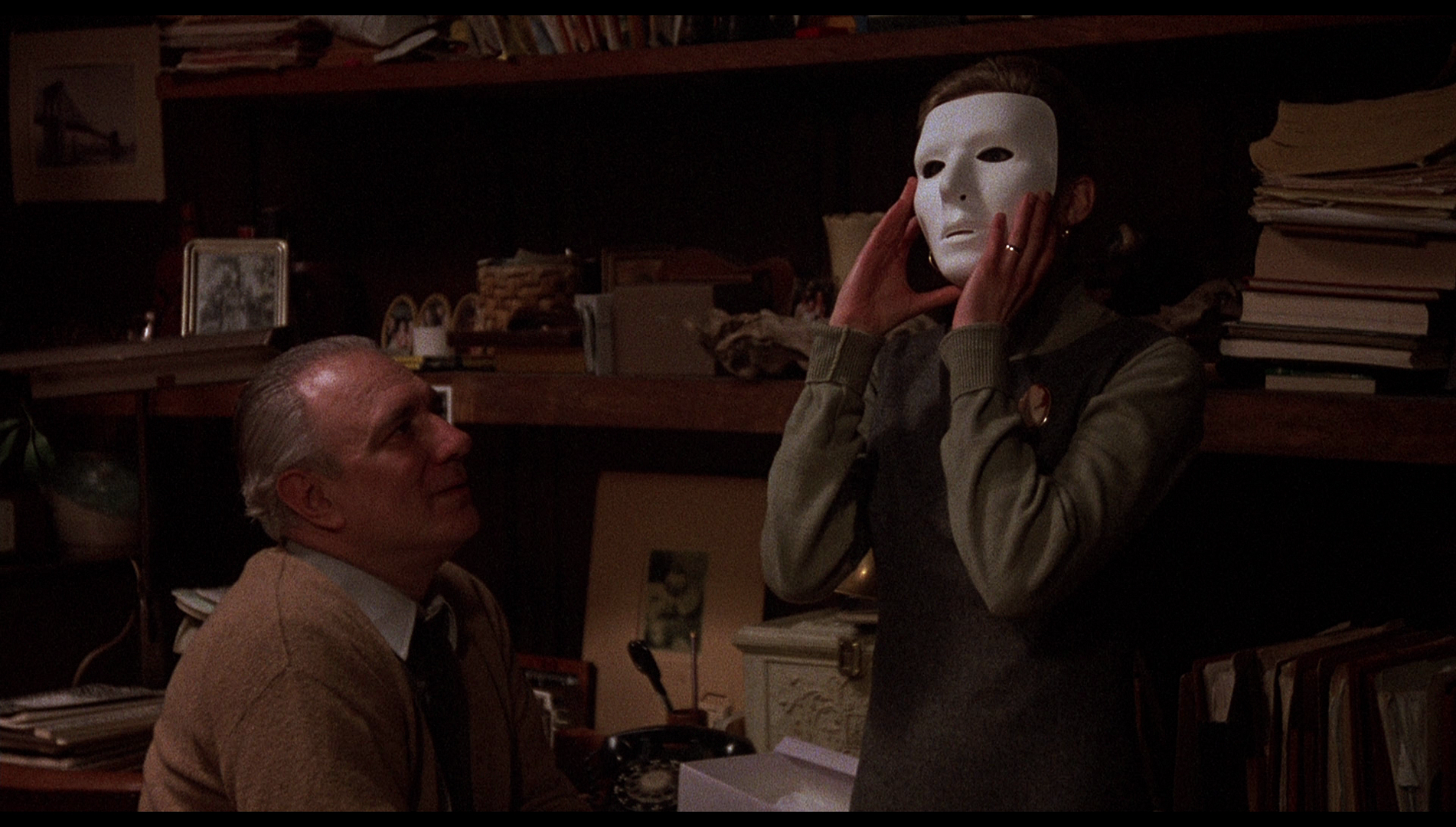 Marion’s narration is intense and confessional in tone, delivered in the past tense until the final moments – when we may presume, we are brought into Marion’s present. The film starts with Marion’s observation that ‘If somebody asked me, in my mid-50s, to assess my life, I would say that I’d reached a decent level of fulfillment both personally and professionally. Beyond that, I would say “I don’t choose to delve”. [….] I always feel, if something seems to be working, leave it alone’. Marion’s narration is intense and confessional in tone, delivered in the past tense until the final moments – when we may presume, we are brought into Marion’s present. The film starts with Marion’s observation that ‘If somebody asked me, in my mid-50s, to assess my life, I would say that I’d reached a decent level of fulfillment both personally and professionally. Beyond that, I would say “I don’t choose to delve”. [….] I always feel, if something seems to be working, leave it alone’.
The film’s title is ambiguous: a casual observer might think the title refers to ‘another woman’ in the sense of a woman with whom a woman’s (Marion’s) husband is having an affair, though the title might also refer to Hope – ‘another woman’ who provokes Marion towards a greater realisation of her self, how she is regarded by others and her position in the world. The title might also suggest ‘another woman’ in the sense that Marion has potential to be someone different to who she has become. On the other hand, the title may also allude to Marion’s realisation of her own tendency to take the position of the ‘other woman’ who ‘steals’ men who are already in committed relationships.
Marion’s act of eavesdropping on Hope’s therapy sessions is represented through a number of sequences which feature Marion alone in her rented apartment, listening to the sounds that filter from the neighbouring therapist’s office through the ventilation system. Allen’s use of these disembodied voices is eerie; it’s unsettling and subtly frightening, something which is amplified by the film’s near-constant overlapping of dream and waking states to the point that the viewer (and perhaps Marion herself) may be confused which is which. In one sequence, the camera pans around Marion, alone in the apartment she has rented, to show her observing a conversation between Ken’s daughter Laura (Martha Plimpton) and her boyfriend Scott, with Laura criticising Marion’s ‘judgemental’ and haughty attitude. Later, Marion falls asleep in the apartment and finds herself in a dream in which she walks into the therapist’s office. She also dreams of a theatre where, on a minimalist set, Claire plays Marion in a play about Marion’s marriage to Ken.
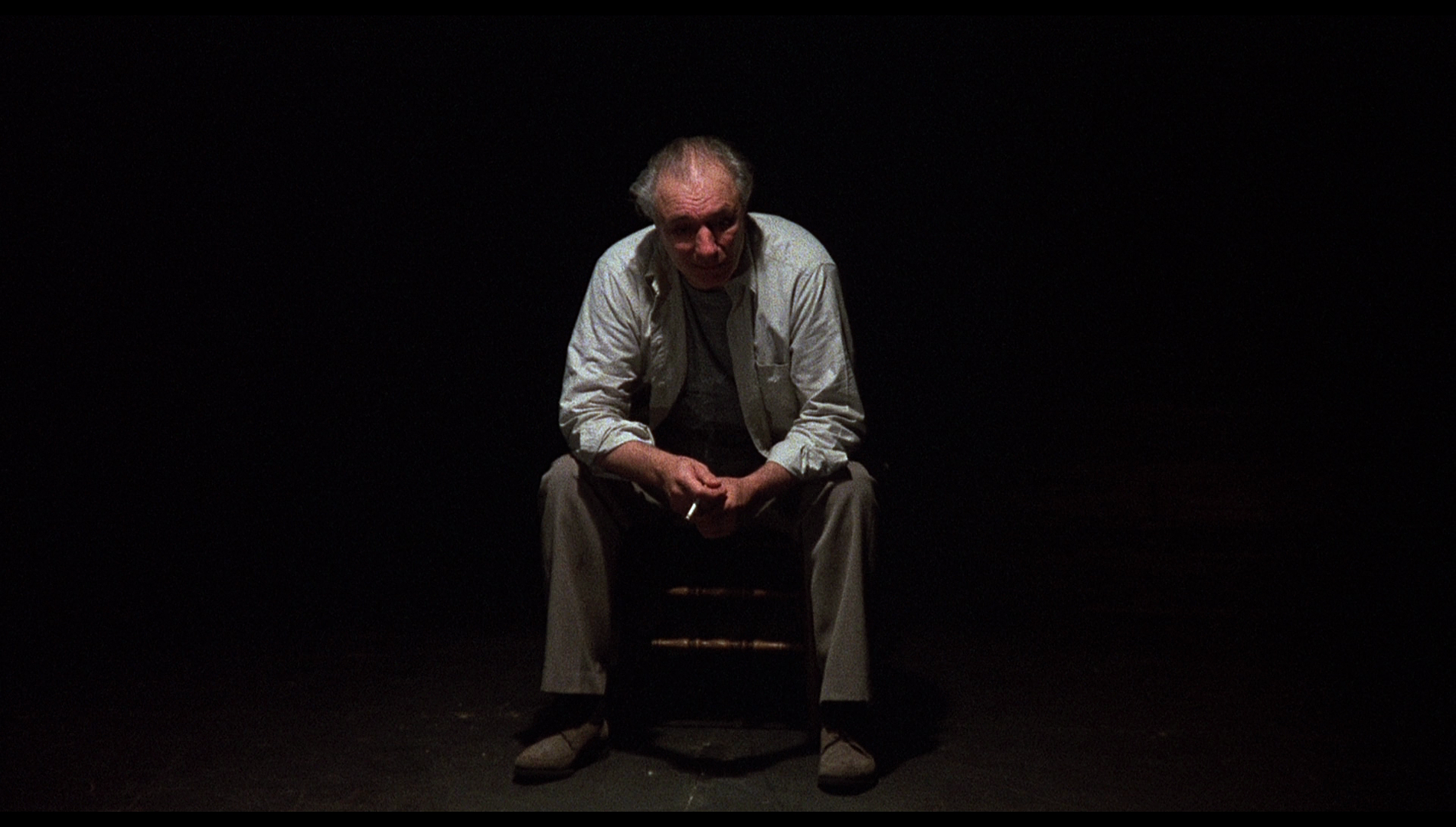 In its emphasis on the symbolic potential of the act of eavesdropping, and the manner in which this fascinates the film’s protagonist to the point that it overwhelms her sense of self, Another Woman has some striking similarities with Francis Ford Coppola’s The Conversation (1974) and perhaps even Hitchcock’s Rear Window (1954). Like The Conversation’s Harry Caul (Gene Hackman), Marion spends much of her time in a lonely apartment, isolated from the rest of the world, which becomes something of a metaphor for her soul. Given the later revelation that Marion had previously been pregnant with the child of her first husband Sam (Philip Bosco) but aborted the child, thus – it is suggested – precipitating Sam’s death by suicide, the symbolism of the empty, lonely apartment becomes even more potent. In its emphasis on the symbolic potential of the act of eavesdropping, and the manner in which this fascinates the film’s protagonist to the point that it overwhelms her sense of self, Another Woman has some striking similarities with Francis Ford Coppola’s The Conversation (1974) and perhaps even Hitchcock’s Rear Window (1954). Like The Conversation’s Harry Caul (Gene Hackman), Marion spends much of her time in a lonely apartment, isolated from the rest of the world, which becomes something of a metaphor for her soul. Given the later revelation that Marion had previously been pregnant with the child of her first husband Sam (Philip Bosco) but aborted the child, thus – it is suggested – precipitating Sam’s death by suicide, the symbolism of the empty, lonely apartment becomes even more potent.
With her eavesdropping on Hope’s therapy sessions acting as a catalyst, as the narrative progresses Marion comes to understand how she is perceived by others – as coldly rational and uncaring. She realises that she is more like her father than her artistic, rootless and romantic mother: Marion’s brother has inherited their mother’s traits, instead. However, an extended flashback shows Marion remembering the warning her father gave her towards the end of her life: ‘Even though I achieved some eminence in my field, I asked too little of myself’, he says, also noting that ‘I have only regrets’. Via a series of flashbacks, the film juxtaposes Marion with her brother Paul: the former is depicted as diligent, grounded, stable and responsible, whereas the latter is a dreamer and drifter, irresponsible and living a hand to mouth existence. Marion’s father chastises her for supporting Paul via a series of handouts (‘He’s had the same chances you’ve had [….] One day, he’ll defraud someone with those “business ventures” of his, and he’ll go to jail’, their father tells Marion), but towards the end of the picture Marion comes to some sort of reconciliation with her brother. Marion’s story ends on a question, delivered via her narration: ‘I wondered if a memory is something you have or something you’ve lost’.
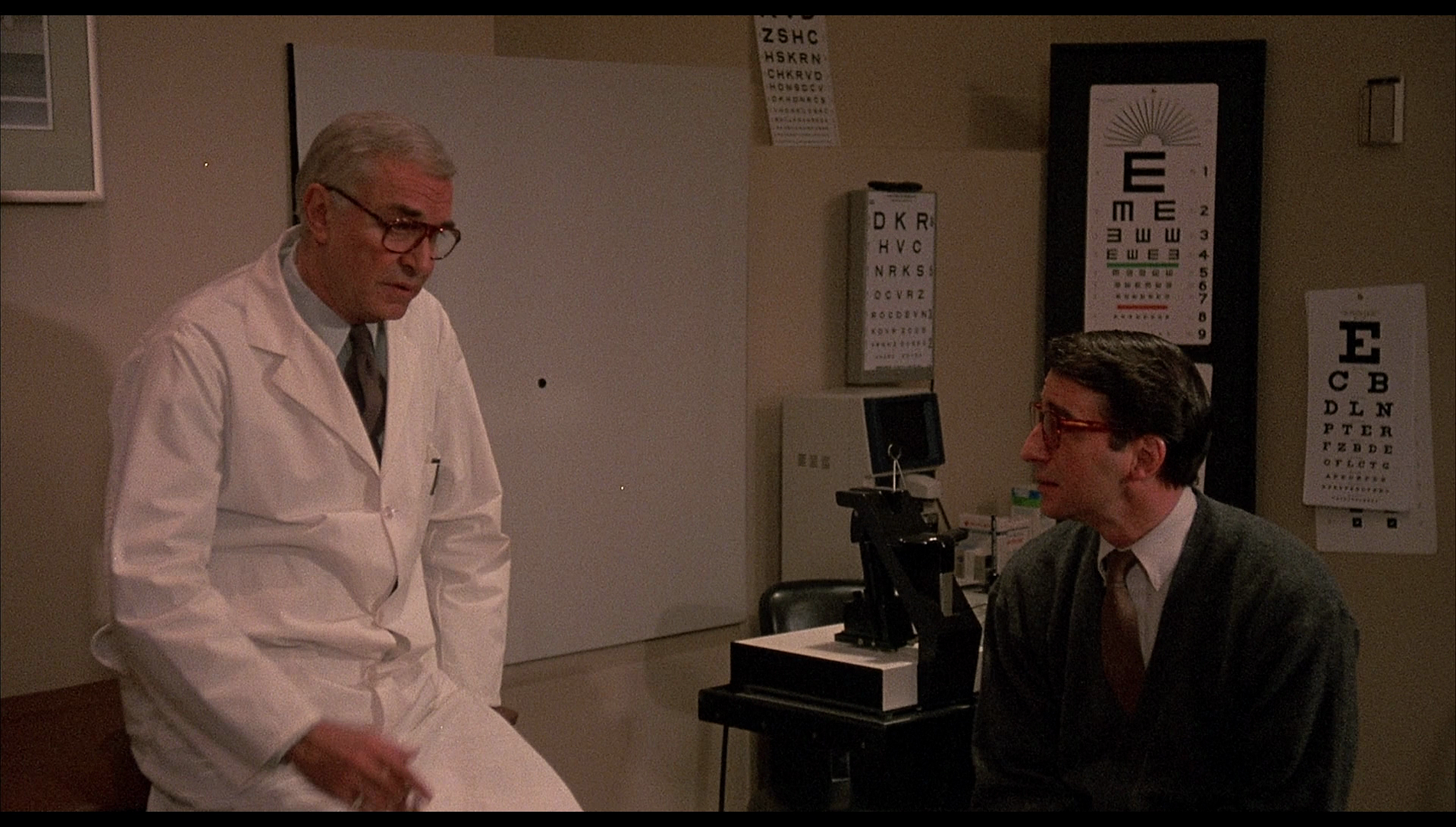 Crimes and Misdemeanors (1989) Crimes and Misdemeanors (1989)
Married opthalmologist and philanthropist Judah Rosenthal (Martin Landau) has been conducting a secret affair with air hostess Dolores Paley (Angelica Huston). When Dolores threatens to make their relationship public and also suggests that she can prove that Judah has embezzled money from the various charities with which he is associated, Judah realises that these revelations will destroy both Judah’s relationship with his wife Miriam (Claire Bloom) and his public image, Judah is distraught. He turns to his patient Ben (Sam Waterston), a rabbi, for guidance; he also seeks out his estranged criminal brother Jack (Jerry Orbach), who suggests Judah have Dolores killed. Judah initially baulks at this idea but gradually comes to see it as the only solution to his problem, and he commissions Jack to find an out-of-town killer to assassinate Dolores. However, after sneaking into Dolores’ apartment following her murder to remove incriminating evidence, and encountering her corpse there, Judah becomes overwhelmed by the finality of death and suffers a crisis of conscience. Judah approaches Jack and tells his brother that he plans to confess to his part in the murder of Dolores, but Jack reminds Judah that ‘The time to confess was to Miriam about your mistress, and not about this [the murder]!’
Judah’s story is interwoven with that of Cliff (Woody Allen), a documentary filmmaker whose lack of ambition, and his unwillingness to take commercial commissions, is criticised by his wife Wendy (Joanna Gleason). Wendy liaises with her brother Lester (Alan Alda), a producer of television programming whose lowbrow output Cliff sneers at, to offer Cliff the job of directing a biographical film about Lester and his efforts to open a new studio in New York. Cliff begrudgingly accepts this job, which leads to Cliff meeting Halley (Mia Farrow), the producer of the piece about Lester and a likeminded soul to Cliff. Cliff and Halley bond over a love of classic movies, and Cliff reveals to Halley the ongoing personal project to which he has committed himself: he has been researching and shooting a documentary about Professor Louis Levy (Martin Bergmann). Halley suggests that she may be able to talk the sponsors into commissioning Cliff’s documentary about Levy.
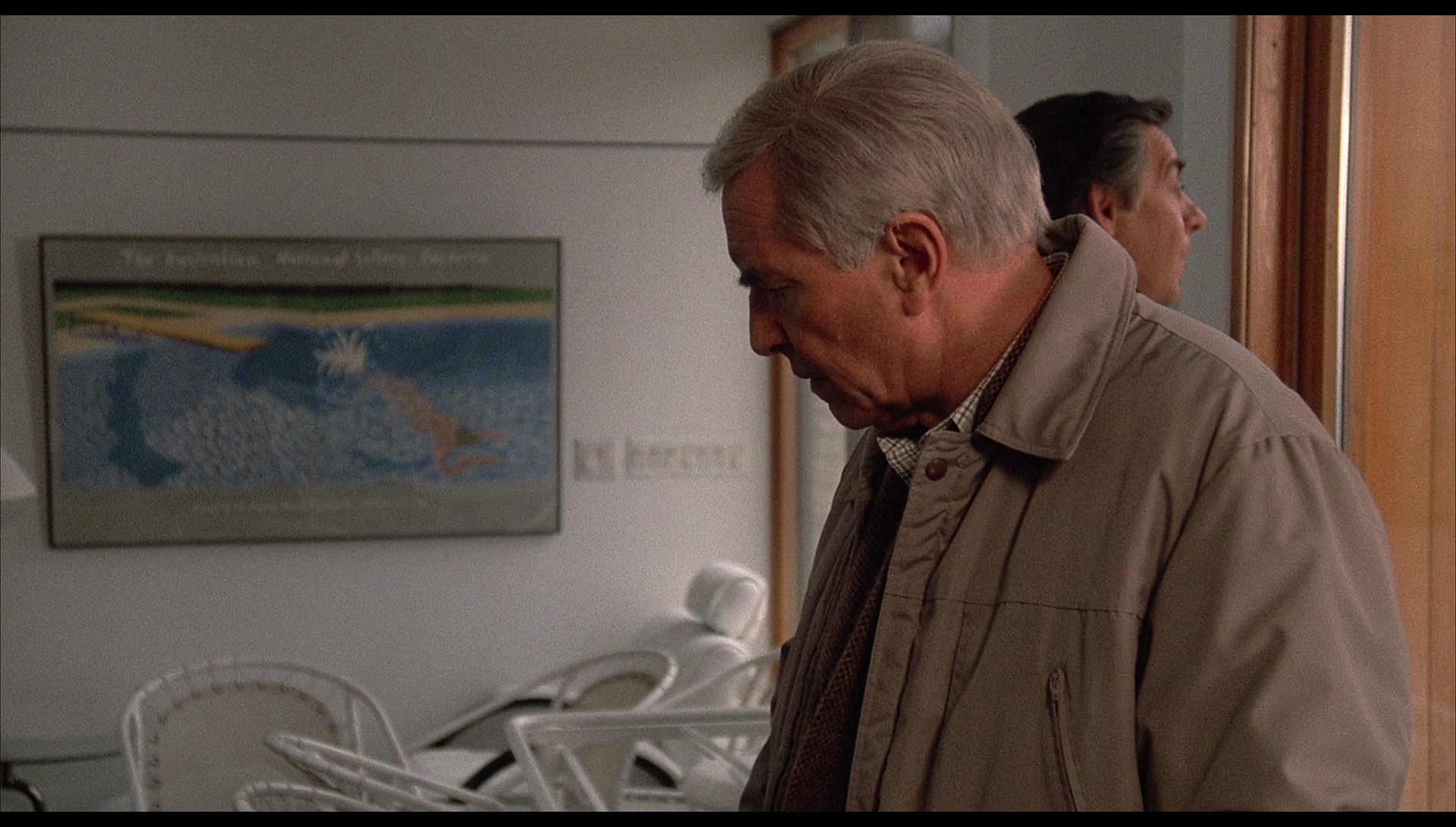 Cliff begins to fall in love with Halley and nurses a fantasy that he will pluck up the courage to leave Wendy and start a new life. However, when Professor Levy commits suicide, news of this seems to scupper Cliff’s planned documentary. Cliff suffers a further setback when he makes a pass at Halley and she quietly rejects him. Cliff displeases Lester when he turns in his final cut of the documentary about Lester, in which a ranting Lester is intercut with archive footage of Mussolini. Lester is angered at this piece of character assassination and fires Lester from the project. With seemingly nothing to lose, Cliff asks Halley to marry him, but Halley responds by telling Cliff she plans to leave the country. Cliff begins to fall in love with Halley and nurses a fantasy that he will pluck up the courage to leave Wendy and start a new life. However, when Professor Levy commits suicide, news of this seems to scupper Cliff’s planned documentary. Cliff suffers a further setback when he makes a pass at Halley and she quietly rejects him. Cliff displeases Lester when he turns in his final cut of the documentary about Lester, in which a ranting Lester is intercut with archive footage of Mussolini. Lester is angered at this piece of character assassination and fires Lester from the project. With seemingly nothing to lose, Cliff asks Halley to marry him, but Halley responds by telling Cliff she plans to leave the country.
Four months later, Cliff and Judah are in attendance at a party thrown by Ben. At the party, Cliff is disheartened to discover that Halley has returned to the US and is now in a relationship with Lester. A dejected Cliff retires to a quiet room where he meets Judah who, on realising that Lester is a documentary filmmaker, ‘pitches’ his story to Cliff as if selling a movie script. Judah suggests that he has learnt to live with his part in the murder of Dolores and that the events no longer prick his conscience.
Where Judah is respectable, his bother Jack is a criminal; Judah seeks to have Dolores removed from his life, and Jack responds by suggesting that Judah pay to have Dolores murdered. Within this meeting, Jack acknowledges that the only reason why Judah would approach him is if Judah wanted to commission a criminal act: ‘You called me because you needed some dirty work done’, Jack tells his brother, ‘That’s all you ever call me for’. There is a wonderful shot featuring Judah and his brother, facing in the opposite direction to one another, one in front of the other; the shot makes these two brothers look like Janus, the two-faced Roman god of thresholds. The shot is openly symbolic, reminding us that whilst he considers asking his brother to kill Dolores, Judah is standing on a threshold – about to embark on a journey from which he cannot return. The shot might also remind the viewer of Bergman’s use of shots of overlapping faces in Persona (1966).
 Our first introduction to Cliff is a scene in which he is watching Hitchcock’s Mr and Mrs Smith (1941) with his niece Jenny (Jenny Nichols); Jenny is the daughter of Cliff’s deceased brother, and Cliff tells her ‘I promised your father on his death bed that I’d give you a well-grounded education’ – but this ‘education’ is largely focused on trips to the cinema to see classic films. Cliff sneers at Lester’s productions for television, channeling the snobbish distrust of radio that Joe’s parents exhibit in Radio Days and the antipathy towards lowest common denominator television programming that’s present in a number of Allen’s other films, including Alice: ‘I can’t watch his [Lester’s] stuff’, Cliff complains, ‘It’s sub-mental’. However, Lester offers Cliff the opportunity to make some money shooting a documentary about Lester and his plans to build a new studio in New York; but Lester makes it clear that he’s ‘doing this strictly as a favour for Wendy. You [Cliff] haven’t worked in a long time; it’s embarrassing’. Nursing his dream project, a documentary about Professor Levy, Cliff shoots the biographical piece about Lester, during which Lester makes repeated gnomic assertions (‘Comedy is tragedy plus time’ and ‘If it bends, it’s funny; if it breaks, it’s not funny’). When Halley suggests to Cliff that Lester is ‘an American phenomenon’, Cliff responds by stating ‘Yes, but so is acid rain’. However, ultimately though Cliff looks down upon Lester, he finds the object of his affections (Halley) stolen by his cultural competitor. Our first introduction to Cliff is a scene in which he is watching Hitchcock’s Mr and Mrs Smith (1941) with his niece Jenny (Jenny Nichols); Jenny is the daughter of Cliff’s deceased brother, and Cliff tells her ‘I promised your father on his death bed that I’d give you a well-grounded education’ – but this ‘education’ is largely focused on trips to the cinema to see classic films. Cliff sneers at Lester’s productions for television, channeling the snobbish distrust of radio that Joe’s parents exhibit in Radio Days and the antipathy towards lowest common denominator television programming that’s present in a number of Allen’s other films, including Alice: ‘I can’t watch his [Lester’s] stuff’, Cliff complains, ‘It’s sub-mental’. However, Lester offers Cliff the opportunity to make some money shooting a documentary about Lester and his plans to build a new studio in New York; but Lester makes it clear that he’s ‘doing this strictly as a favour for Wendy. You [Cliff] haven’t worked in a long time; it’s embarrassing’. Nursing his dream project, a documentary about Professor Levy, Cliff shoots the biographical piece about Lester, during which Lester makes repeated gnomic assertions (‘Comedy is tragedy plus time’ and ‘If it bends, it’s funny; if it breaks, it’s not funny’). When Halley suggests to Cliff that Lester is ‘an American phenomenon’, Cliff responds by stating ‘Yes, but so is acid rain’. However, ultimately though Cliff looks down upon Lester, he finds the object of his affections (Halley) stolen by his cultural competitor.
Ironically, Lester’s oft-repeated maxim ‘If it bends, it’s funny; if it breaks, it’s not funny’ is mirrored within and perhaps even validated by the structure of Crimes & Misdemeanors. The film juxtaposes two parallel narratives linked by a common theme of infidelity: the lightness of touch in Allen’s handling of the story of Cliff’s infatuation with Halley and her eventual seduction by his rival Lester is offset by the dark, film noir-esque exploration of issues of morality and faith within the narrative of Judah’s commissioning of the murder of his mistress Dolores. Cliff’s story is a comedy of manners; the story of Judah is one of deepest tragedy. These two narratives eventually come together, intersecting at the end of the film when, at a party, Cliff and Judah meet and Judah proceeds to tell Cliff his story as if it were a pitch for a movie. Where Cliff’s story could be said to ‘bend’, Judah’s story ‘breaks’ – especially with Judah’s final assertion, that he has learnt to live with Dolores’ murder and the debate he previously had with his conscience has passed.
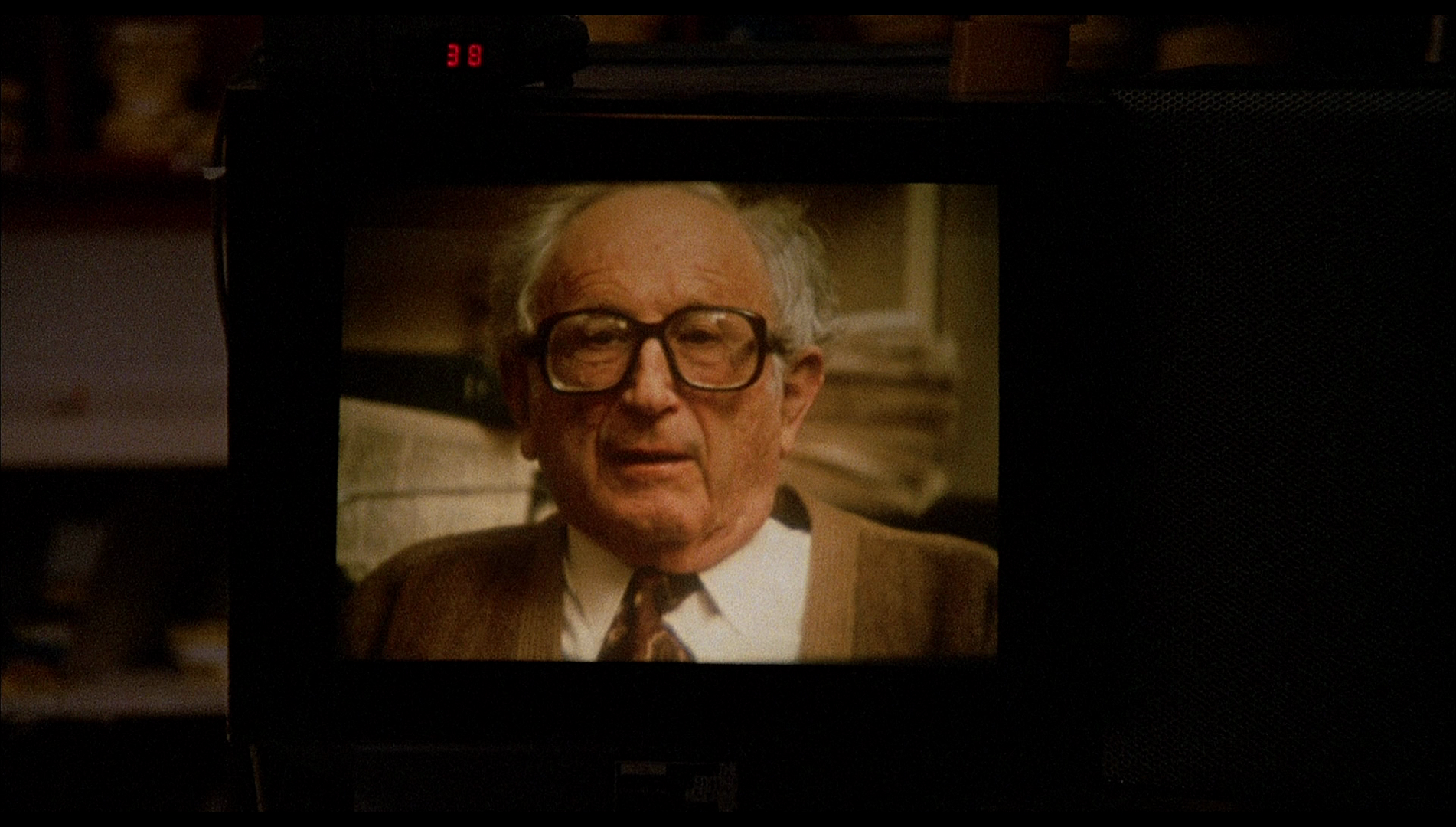 These two stories are linked by Ben, the rabbi who is losing his sight and seeks the help of Judah. Ben is Judah’s patient and the brother of Ben. The narrative contrasts Judah’s faithlessness with Ben’s devotion to his faith. Judah asks Ben for guidance in how to handle Dolores’ attempt at threatening to make public her affair with Judah, and Ben suggests that ‘when there’s real love and acknowledgement of a mistake, there can be forgiveness too’: Ben argues that Judah should get in front of his problem and reveal his relationship with Dolores to Miriam, seeking the forgiveness of his wife. However, Ben is losing his sight: Ben’s blindness becomes symbolic, linked to the references within the dialogue to God’s omniscience an the notion that all actions are committed under the eyes of God. ‘Don’t you think God sees?’, Ben asks Judah. ‘God is a luxury I can’t afford’, Judah responds. ‘Now you’re talking like your brother Jack’, Ben warns Judah. ‘Jack lives in the real world’, Judah says, ‘You live in the kingdom of heaven. I managed to keep free of the real world but suddenly it found me’. Eyes and vision are a recurring motif within the film, represented through Judah’s work as an opthalmologist. When Dolores is murdered, Judah enters her apartment to retrieve evidence that would link him to her; he later comments that the dead Dolores’ eyes revealed nothing but ‘a black void’ and remembers a previous conversation with Dolores in which she asked him if it is true that the eyes are ‘the windows to the soul’, to which Judah responds by stating that ‘It’s not a soul I see’ in the eyes of Dolores. These two stories are linked by Ben, the rabbi who is losing his sight and seeks the help of Judah. Ben is Judah’s patient and the brother of Ben. The narrative contrasts Judah’s faithlessness with Ben’s devotion to his faith. Judah asks Ben for guidance in how to handle Dolores’ attempt at threatening to make public her affair with Judah, and Ben suggests that ‘when there’s real love and acknowledgement of a mistake, there can be forgiveness too’: Ben argues that Judah should get in front of his problem and reveal his relationship with Dolores to Miriam, seeking the forgiveness of his wife. However, Ben is losing his sight: Ben’s blindness becomes symbolic, linked to the references within the dialogue to God’s omniscience an the notion that all actions are committed under the eyes of God. ‘Don’t you think God sees?’, Ben asks Judah. ‘God is a luxury I can’t afford’, Judah responds. ‘Now you’re talking like your brother Jack’, Ben warns Judah. ‘Jack lives in the real world’, Judah says, ‘You live in the kingdom of heaven. I managed to keep free of the real world but suddenly it found me’. Eyes and vision are a recurring motif within the film, represented through Judah’s work as an opthalmologist. When Dolores is murdered, Judah enters her apartment to retrieve evidence that would link him to her; he later comments that the dead Dolores’ eyes revealed nothing but ‘a black void’ and remembers a previous conversation with Dolores in which she asked him if it is true that the eyes are ‘the windows to the soul’, to which Judah responds by stating that ‘It’s not a soul I see’ in the eyes of Dolores.
The film’s structure is dialectical but never mechanical, the two narratives weaving organically around one another. The stories of Cliff and Judah come together at the end of the film when, at a party, Judah tells Cliff his story, pitching it as if it were an idea for a film. Unaware that the story is based in Judah’s experience, Cliff suggests that the ending of the story should be changed: ‘I’d have him turn himself in’, Cliff says of the protagonist, ‘That’s tragedy’. ‘But that’s fiction’, Judah responds, ‘That’s movies. You see too many movies. I’m talking about reality’. Judah leaves Cliff with the suggestion that Judah’s conscience is no longer bothered by the fact that he commissioned the murder of Dolores. (In fact, one might be reminded of the final chapter of Bret Easton Ellis’ novel American Psycho, published the same year as the release of Crimes and Misdemeanors, and its final line: ‘This is not an exit’.) The film ends on a recorded interview with Professor Levy, who observes that ‘We define ourselves by the choices we have made. We are in fact the sum total of our choices’.
 Alice (1990) Alice (1990)
Alice (Mia Farrow) is a privileged but bored housewife who has sacrificed herself to become wife of her husband Doug (William Hurt) and mother to their children. Unfulfilled, Alice begins to fantasise about a stranger whose children attend the same school as Alice’s; this stranger, Joe (Joe Mantegna), is a musician. Alice dreams of approaching him and beginning a torrid affair with this man.
Seeking relief from chronic back pain, Alice visits Dr Yang (Keye Luke), a specialist in Chinese herbal medicine. She also tells Yang of her personal problems. Yang gives Alice an herbal medicine which has the effect of giving her a boost in confidence, and whilst collecting her children from school the next day, Alice is surprised to find herself speaking to Joe and asking him on a date. She arranges to meet Joe at the zoo but has a last minute change of heart.
Returning to Dr Yang, Alice is given a different set of herbs. These herbs make her invisible; Alice follows Joe to his office, where she discovers that Joe has sex with his wife fairly regularly. Meanwhile, seeking to give her life purpose and meaning, Alice decides that she might take up writing and approaches her friend Nancy Brill (Cybill Shepherd), who has recently been made commission editor of a television production company. However, Nancy shrugs off Alice’s ideas for television scripts, suggesting that they aren’t sensationalistic or explicit enough to warrant interest.
 Dr Yang gives Alice some more herbs; these allow her to be visited by the ghost of her former lover Eddie (Alec Baldwin), who died in a car crash. Eddie takes Alice to some of their former ‘haunts’ and persuades her to ‘find out how you feel about Joe’. Tentatively, Alice begins an affair with Joe, and she also takes a class in writing. Taking the invisibility herbs again, Alice discovers that Doug is a philanderer, and she makes the decision to follow in the footsteps of her heroine, Mother Teresa. Dr Yang gives Alice some more herbs; these allow her to be visited by the ghost of her former lover Eddie (Alec Baldwin), who died in a car crash. Eddie takes Alice to some of their former ‘haunts’ and persuades her to ‘find out how you feel about Joe’. Tentatively, Alice begins an affair with Joe, and she also takes a class in writing. Taking the invisibility herbs again, Alice discovers that Doug is a philanderer, and she makes the decision to follow in the footsteps of her heroine, Mother Teresa.
Owing a great deal to Fellini’s Juliet of the Spirits (1965), Alice treads explicitly into the realms of fantasy fiction, in its use of the herbs that Dr Yang provides for Alice which allow her to become invisible and to speak with the ghost of Eddie. The film alludes to Lewis Carroll’s classic children’s novel Alice’s Adventures in Wonderland (1865), in both the naming of its central character and her slippage between the ‘real’ world and a world of fantasy, and Charles Dickens’ A Christmas Carol (1843). Alice’s allusions to Dickens’ novella become particularly evidence towards the end of the film, when Alice is visited by the ghost of Eddie (who functions essentially as the Ghost of Christmas Past).
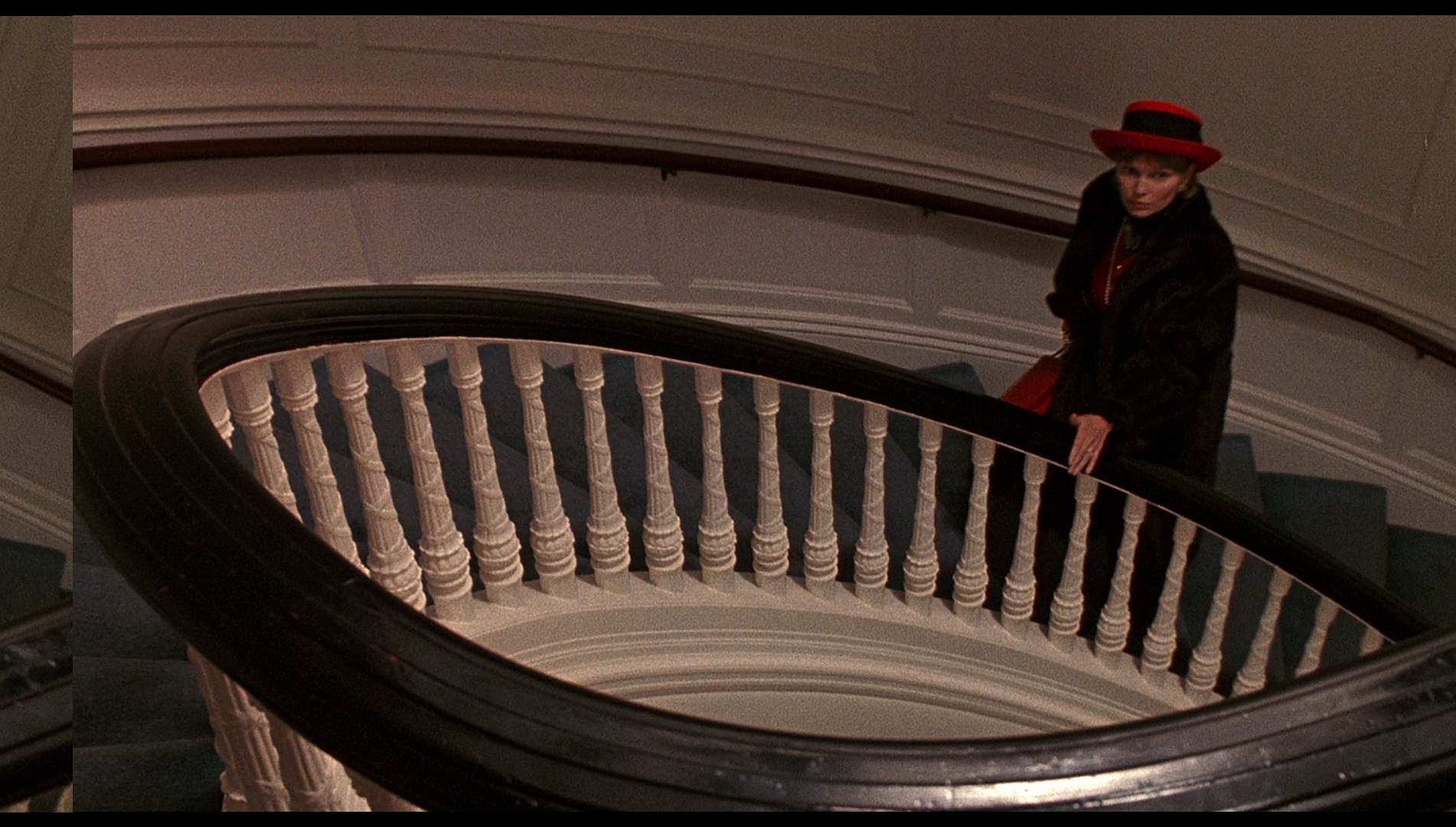 Alice struggles to give her life purpose beyond her role as Doug’s wife and the mother of their children. When we first meet Alice, she is depicted as having a busy but meaningless life – her schedule is packed with meetings with interior designers and personal trainers. ‘I’ve become one of those women who shops all day and gets pedicures’, she tells Dr Yang, ‘I want more; there’s more to me’. She is distraught that ‘Now I spend hours trying so hard to hold on to my youth’. She is a lapsed Catholic who as a young girl dreamed of being a nun and, when watching footage of Mother Teresa in Calcutta, decides to journey to Calcutta to assist her heroine. When she returns to New York at the end of the film, she begins a distinctly proletarian – but much happier – life, having shucked off the materialistic trappings of her life with Doug. Towards the end of the picture, Alice tells Doug ‘I’m tired of all this. I’m tired of facelifts and pedicures and gossip about who’s in bed with who [….] I want [the children] growing up with deeper values, with something else’. Alice struggles to give her life purpose beyond her role as Doug’s wife and the mother of their children. When we first meet Alice, she is depicted as having a busy but meaningless life – her schedule is packed with meetings with interior designers and personal trainers. ‘I’ve become one of those women who shops all day and gets pedicures’, she tells Dr Yang, ‘I want more; there’s more to me’. She is distraught that ‘Now I spend hours trying so hard to hold on to my youth’. She is a lapsed Catholic who as a young girl dreamed of being a nun and, when watching footage of Mother Teresa in Calcutta, decides to journey to Calcutta to assist her heroine. When she returns to New York at the end of the film, she begins a distinctly proletarian – but much happier – life, having shucked off the materialistic trappings of her life with Doug. Towards the end of the picture, Alice tells Doug ‘I’m tired of all this. I’m tired of facelifts and pedicures and gossip about who’s in bed with who [….] I want [the children] growing up with deeper values, with something else’.
For a while, Alice flirts with the idea of writing television scripts and approaches her friend Nancy Brill with this idea. However, she is astonished to discover that Nancy isn’t interested in any of Alice’s ideas for scripts unless they are ‘blood and guts stuff, not subtle’ or are ‘lurid, sexual [and] perverse’. For his part, Doug scoffs at Alice’s notion of becoming a writer, telling her ‘You can’t just “decide” to write [….] You need a background’. Through this narrative development, Allen offers an indictment of the landscape of television and the emphasis on lowest common denominator programming, linking this film to his examination of television culture in Crimes and Misdemeanors and his consideration of the era of radio broadcasting in Radio Days.
 Shadows and Fog (1991) Shadows and Fog (1991)
In an unspecified location, lowly clerk Kleinman (Woody Allen) is awoken from his sleep by a vigilante group who are intent on prowling the streets to capture ‘the strangler’. ‘The strangler’ is a serial killer who has claimed a number of victims. Reluctantly, Kleinman agrees to join the vigilante group and prowl the nighttime streets in search of the murderer.
Meanwhile, a traveling circus has stopped at the village. Clown Paul (John Malkovich) and sword swallower Irmy (Mia Farrow) come to blows when Paul is caught cheating on Irmy with the high-wire artist, the wife of the circus’ strongman. Following this argument, Irmy decides to leave the circus; wandering the streets, she encounters a prostitute (Lily Tomlin) who warns Irmy of the prowling strangler and takes her to a brothel where Irmy is made welcome by the other ‘ladies of the night’. A group of university students arrive at the brothel, and one of them, Jack (John Cusack), offers Irmy $700 if she will sleep with him. Irmy resists at first but, persuaded by the money, ultimately agrees to Jack’s proposition.
Kleinman visits the doctor (Donald Pleasence), who insists that if given the chance to study the body of the killer, he will be able to explain why the killer was driven to murder people. However, after Kleinman leaves the doctor is visited by the killer, who pursues the doctor into an alleyway before killing him.
Kleinman witnesses an escalation of the violence committed by the vigilante mob, who round on a Jewish family (the father performs ‘quality circumcisions’, Kleinman asserts). When Kleinman reports this to the chief of police (Greg Stebner), the official displays little interest, telling Kleinman simply that ‘Nobody lumps you in with the Mintzes [the persecuted family]. You’re fine; so don’t get your nose dirty’.
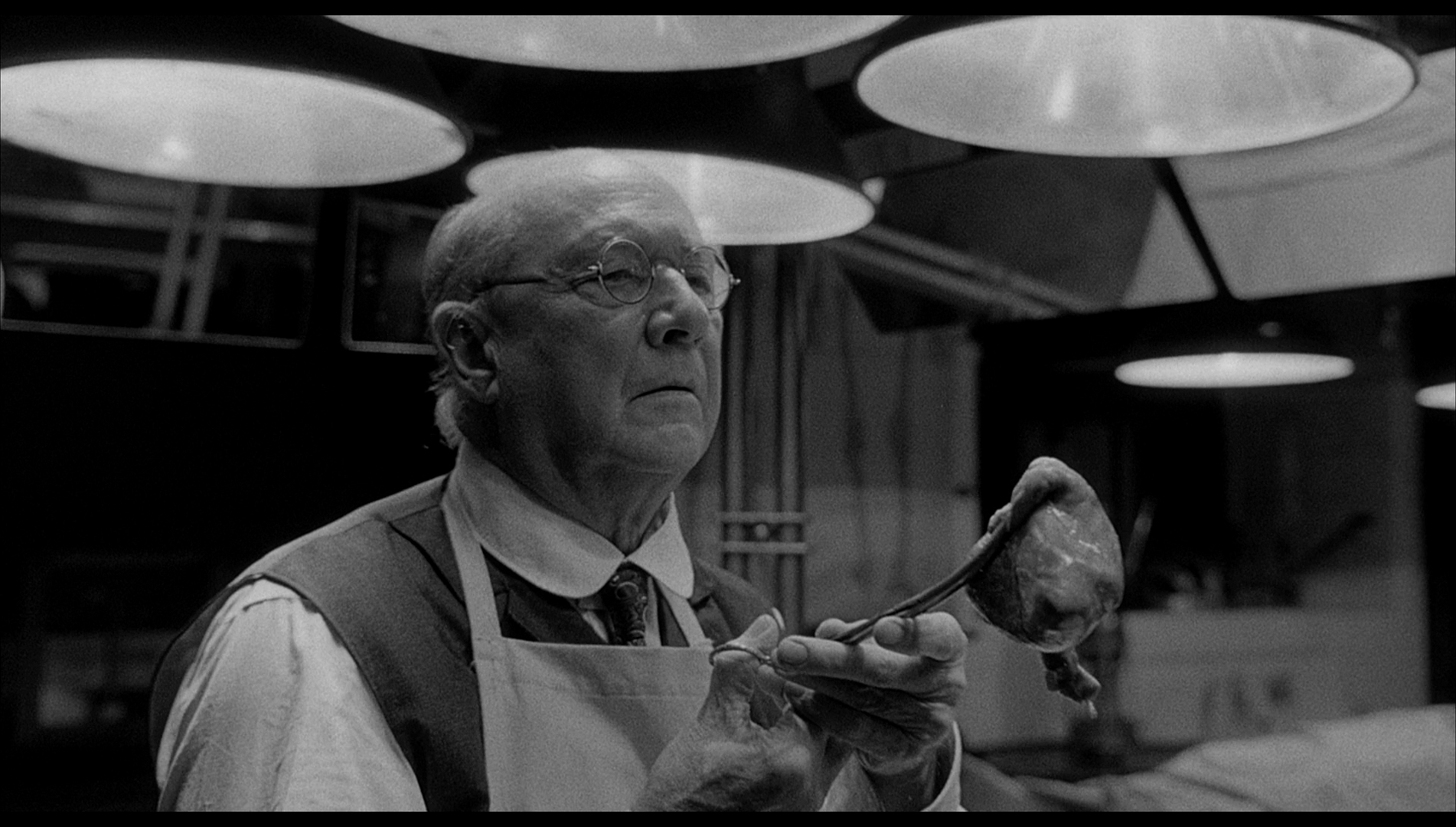 Whilst at the police station, Kleinman meets Irmy, who has been arrested for prostitution without a licence. After leaving the police station, they walk through the streets together and encounter a woman with a baby. Shortly afterwards, Kleinman is approached by one of the vigilantes (Kurtwood Smith), who tells Kleinman that the vigilantes have split into opposing groups and are now battling one another. Whilst at the police station, Kleinman meets Irmy, who has been arrested for prostitution without a licence. After leaving the police station, they walk through the streets together and encounter a woman with a baby. Shortly afterwards, Kleinman is approached by one of the vigilantes (Kurtwood Smith), who tells Kleinman that the vigilantes have split into opposing groups and are now battling one another.
Kleinman is faced with the vigilantes, who have sought the aid of a psychic named Spiro (Charles Cragin). Spiro sniffs Kleinman and suggest that he knows who the killer is; Kleinman is chased through the streets by the mob, first seeking refuge (unsuccessfully) with his former fiancée who he abandoned at the altar, and then fleeing to the circus where he is threatened by the strangler before assisting the magician Almstead (Kenneth Mars) in outwitting the killer.
Shadows and Fog is Allen’s homage to German Expressionism and the work of Franz Kafka. As such, the picture has some similarities with Steven Soderbergh’s Kafka, released the same year (1991). Soderbergh’s film attempted to mix elements of the life of Kafka with his fiction, Soderbergh’s cinematographer Walt Lloyd shooting the film on monochrome stock, making strong and expressive use of chiaroscuro low-key lighting and the use of shadow. Both Kafka and Shadows and Fog offer a nightmarish depiction of an individual caught within the cogs of the social machine, taking some inspiration from Orson Welles’ 1962 adaptation of Kafka’s The Trial. Noticeably, like Welles’ film Shadows and Fog opens on its protagonist in a scene which features him being awoken and interrogated.
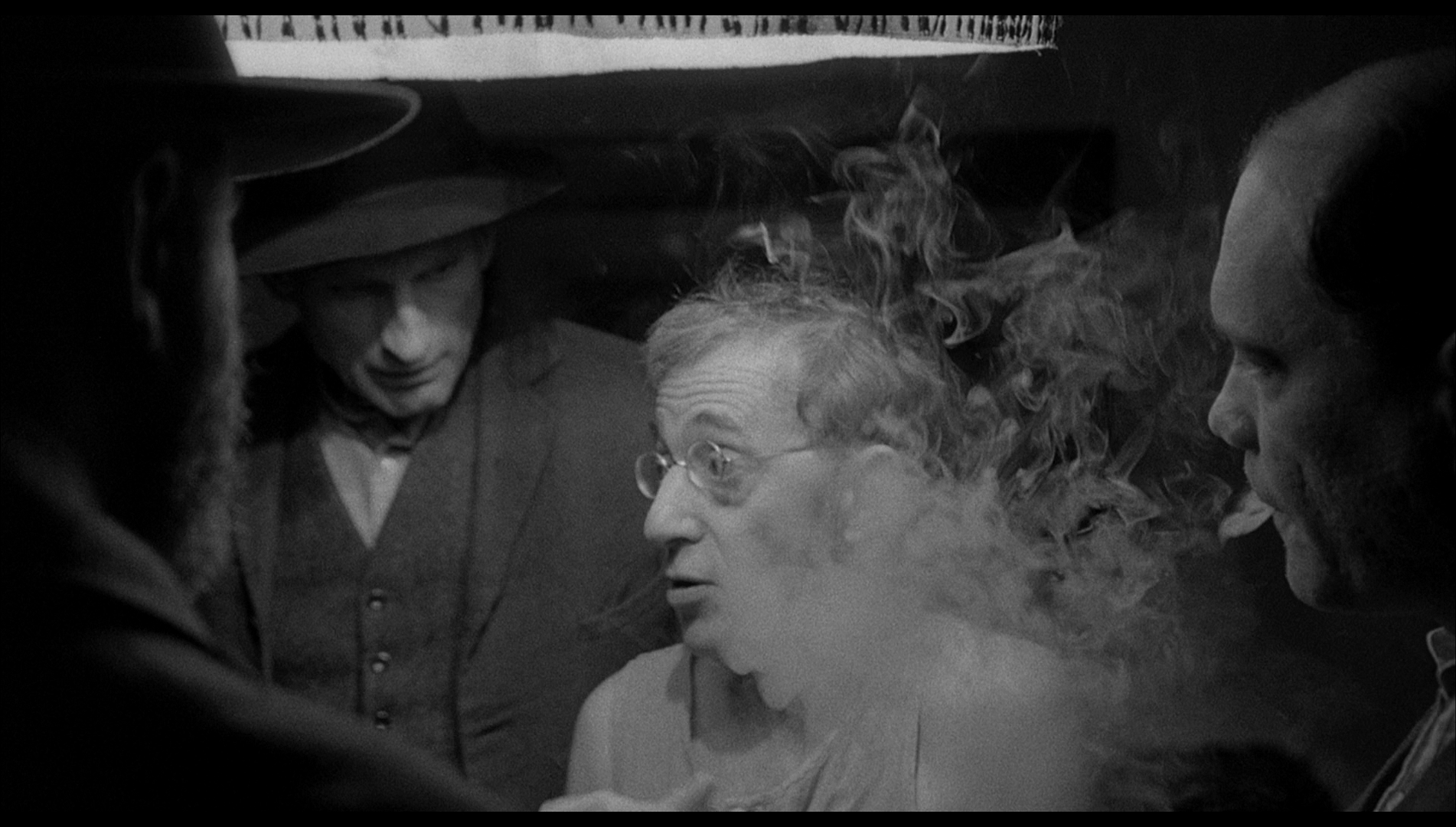 Shadows and Fog has humour of the blackest sort. When Kleinman is awoken by the vigilantes in the film’s opening sequence, he is told that two sisters have been found murdered, ‘throats cut from ear to ear’. ‘I thought you said he was a strangler’, Kleinman observes in reference to the killer. ‘Does it matter who he kills?’, one of the vigilante group asks angrily. As Kleinman prepares to leave with the vigilante group, his landlady gives him some pepper and tells him, if he becomes cornered, to blow it in the killer’s eyes. ‘Okay, I’ll ward him off with the seasoning’, Kleinman quips. Shadows and Fog has humour of the blackest sort. When Kleinman is awoken by the vigilantes in the film’s opening sequence, he is told that two sisters have been found murdered, ‘throats cut from ear to ear’. ‘I thought you said he was a strangler’, Kleinman observes in reference to the killer. ‘Does it matter who he kills?’, one of the vigilante group asks angrily. As Kleinman prepares to leave with the vigilante group, his landlady gives him some pepper and tells him, if he becomes cornered, to blow it in the killer’s eyes. ‘Okay, I’ll ward him off with the seasoning’, Kleinman quips.
Though the exact setting of the story in terms of time and place is ambiguous, certain elements within the narrative suggest that the story takes place in the late 19th or early 20th Centuries – particularly the references that are made to eugenics and, specifically, the idea that psychological disturbance is accompanied by, or perhaps even caused by, physical defects in the subject. Played in utterly deadpan fashion by Donald Pleasence, the doctor expresses to Kleinman his desire to dissect the killer in order to find an answer to the question of what causes evil. When Kleinman suggests, quite rationally (to a modern audience, at least), that there may be something ‘you can’t see under the microscope’ that is the cause of the strangler’s impulse to kill, the doctor scoffs at this notion: ‘What are you implying?’, the doctor asks, ‘A spiritual element? A soul that lives on after we’re dead?’ When the doctor is confronted by the killer, the doctor protests: ‘Why are you doing this?’, then questions himself by declaring ‘What a question to ask an irrational mind [….] I’m only interested in where sanity stops and evil begins’.
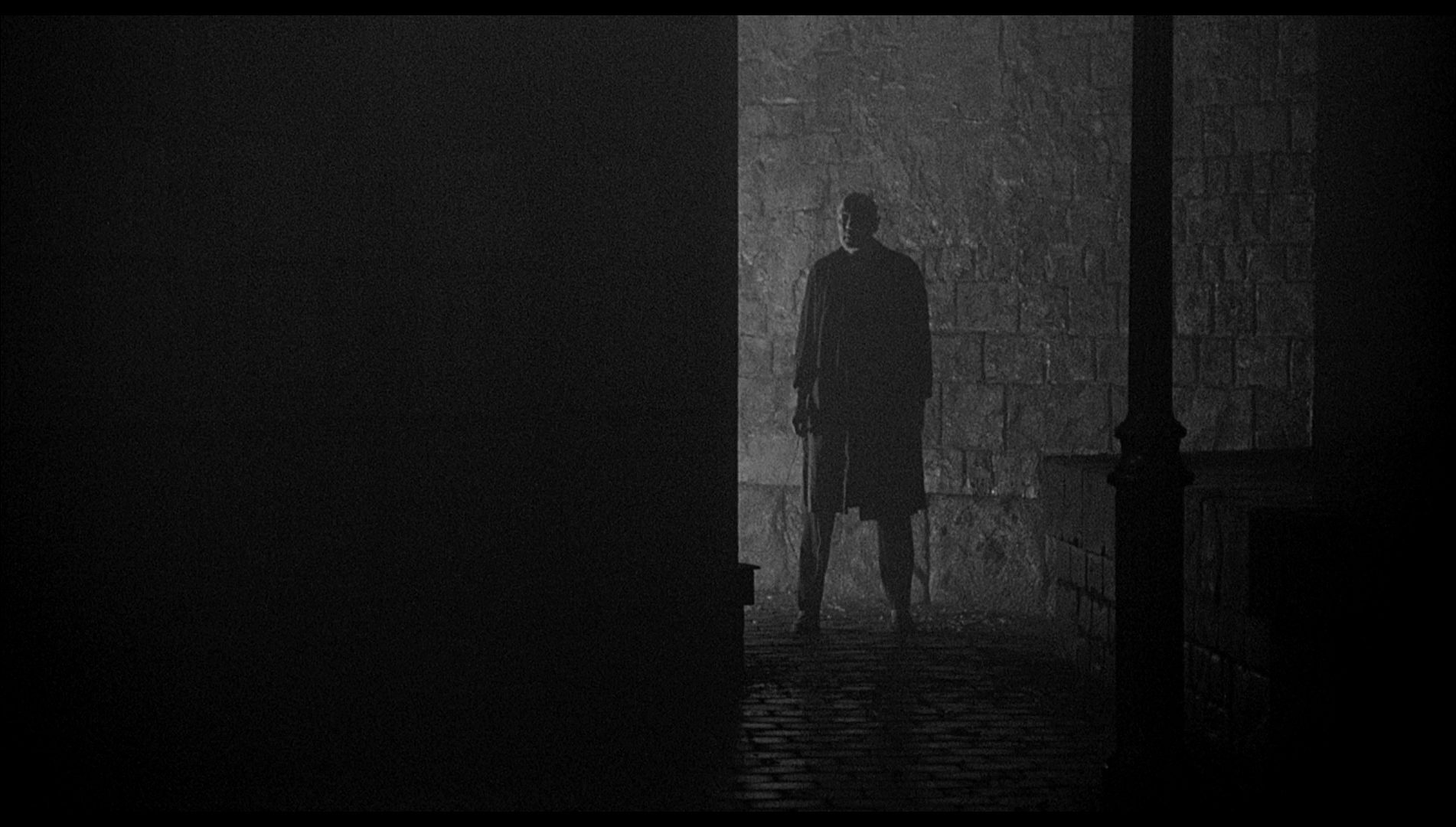 As is likely to be expected, evil doesn’t begin and end with the strangler: the vigilante groups are presented as an example of groupthink. The violence of the vigilante groups escalates; they target an innocent Jewish family, the Mintzes, and then begin to turn on one another. Kleinman is approached by one of the vigilantes, played by Kurtwood Smith, who tells Kleinman that the original group has split into two rival factions (over a ‘disagreement in how to handle things’) and these factions are now killing one another’s members. ‘We’re all here arguing and there’s an enemy out there killing us’, Kleinman says in response to this, ‘Soon we’re gonna be doing his killing for him’. As is likely to be expected, evil doesn’t begin and end with the strangler: the vigilante groups are presented as an example of groupthink. The violence of the vigilante groups escalates; they target an innocent Jewish family, the Mintzes, and then begin to turn on one another. Kleinman is approached by one of the vigilantes, played by Kurtwood Smith, who tells Kleinman that the original group has split into two rival factions (over a ‘disagreement in how to handle things’) and these factions are now killing one another’s members. ‘We’re all here arguing and there’s an enemy out there killing us’, Kleinman says in response to this, ‘Soon we’re gonna be doing his killing for him’.
Interestingly, Allen refuses to provide a sense of closure to the story of the strangler and the vigilantes’ hunt for him: the strangler is not detained, and though trapped by Almstead and Kleinman he manages to escape and disappear into the night. Instead, in the film’s final sequence, Allen focuses on providing a resolution to the story of Kleinman via his decision to run away with the circus and become an apprentice to the magician Almstead (Kenneth Mars). The story is clearly that of Kleinman and his encounters with groupthink, persecution and mob violence – rather than the narrative of the strangler and his capture.
Video
 The films are all given 1080p presentations that use the AVC codec; all of the films are presented in their shared original aspect ratio of 1.85:1. All of the films are housed on separate discs. The films are all given 1080p presentations that use the AVC codec; all of the films are presented in their shared original aspect ratio of 1.85:1. All of the films are housed on separate discs.
Radio Days takes up 26Gb of space on its disc and runs for 88:33 mins; Hannah and Her Sisters fills 31Gb of space on its disc and runs for 106:59 mins; September takes up 25Gb of space and has a running time of 82:47 mins; Another Woman fills 25Gb of space and runs for 81:08 mins; Crimes and Misdemeanors takes of 31Gb of space and runs for 104:07 mins; Alice has a running time of 106:20 mins and fills 31Gb of space on its disc; Shadows and Fog is 85:40 mins long and takes up 25Gb of space on its disc.
All of the films were shot on colour 35mm stock, barring Shadows and Fog which was shot on monochrome 35mm stock. The presentations of all of the films are consistently pleasing. Fine detail is present and the image within each picture is crisp. Colour reproduction, in the films shot in colour, is solid throughout. Radio Days, Hannah and Her Sisters, Crimes and Misdemeanours and Alice have a fairly naturalistic palette; Another Woman and September make interesting use of amber hues, giving the impression that everything – including interior scenes – has been shot at ‘magic hour’ and in autumnal sunshine. Radio Days has some interesting use of neon signs and lights which are carried nicely in this presentation, offsetting the naturalism of the majority of the film’s photography; likewise, Alice makes expressive and symbolic use of bold colour within its predominantly naturalistic palette: for example, the bright, vibrant crimson of Alice’s hat which features prominently in a number of scenes, and in one scene Alice and Joe are lit by a pulsing red light as if they are in a Mario Bava picture. Contrast levels are balanced very nicely throughout, with defined midtones and balanced highlights. Alice also features quite a lot of low light photography, with characters shot in silhouette and ringed by light, which also fares nicely in this presentation. Shot in monochrome and influenced by German Expressionist cinema, Shadows and Fog features much use of chiaroscuro lighting, and again this is carried very well in the presentation on this disc.
Damage is limited throughout the films but present on a very minor scale: white flecks and specks suggesting debris on the negative can be seen in Hannah and Her Sisters, and Shadows and Fog has a few scenes in which there is some fluctuation in the density of the emulsions of the film stock which is made noticeable owing to the lighting used in the film. (Shadows and Fog also has one or two very brief moments that seem to be patched in from a lesser source: these brief shots have crushed blacks and are softer in texture; there are only one or two instances of this, and they’re fleeting, but they are present nonetheless.) All of the discs carry excellent encodes which ensure that the presentations retain the structure of 35mm film.
Radio Days
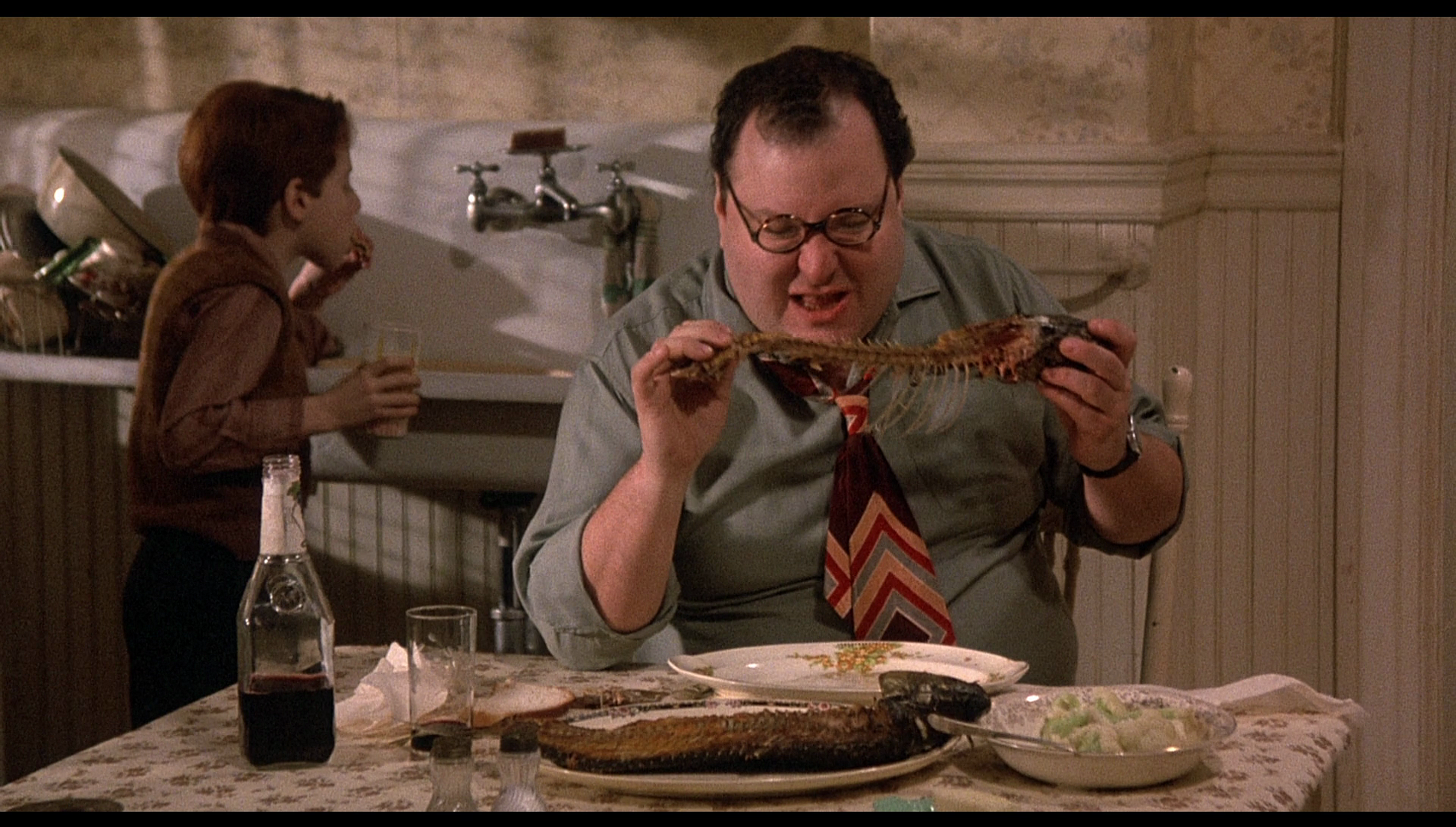  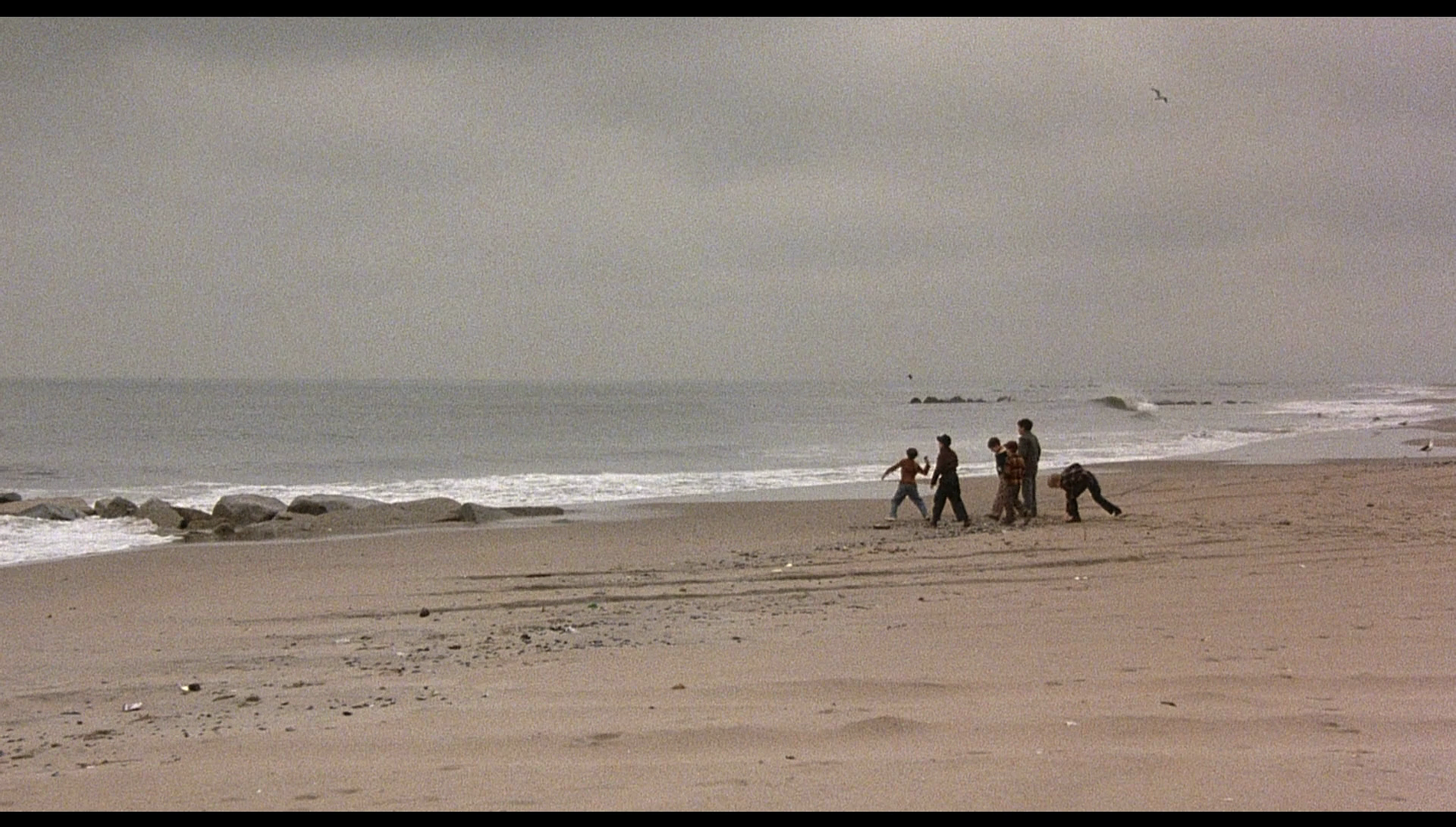
Hannah and Her Sisters
 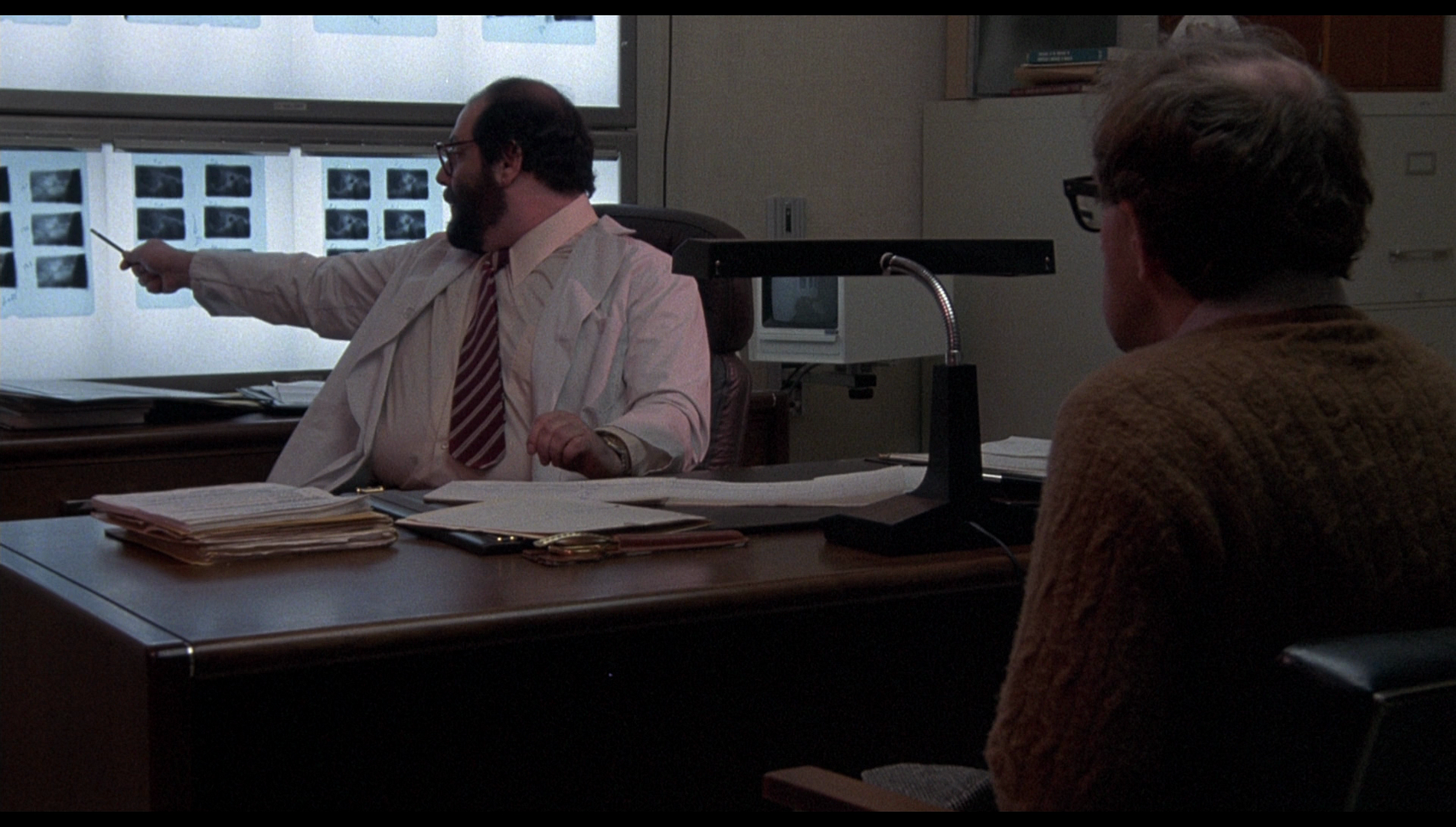 
September
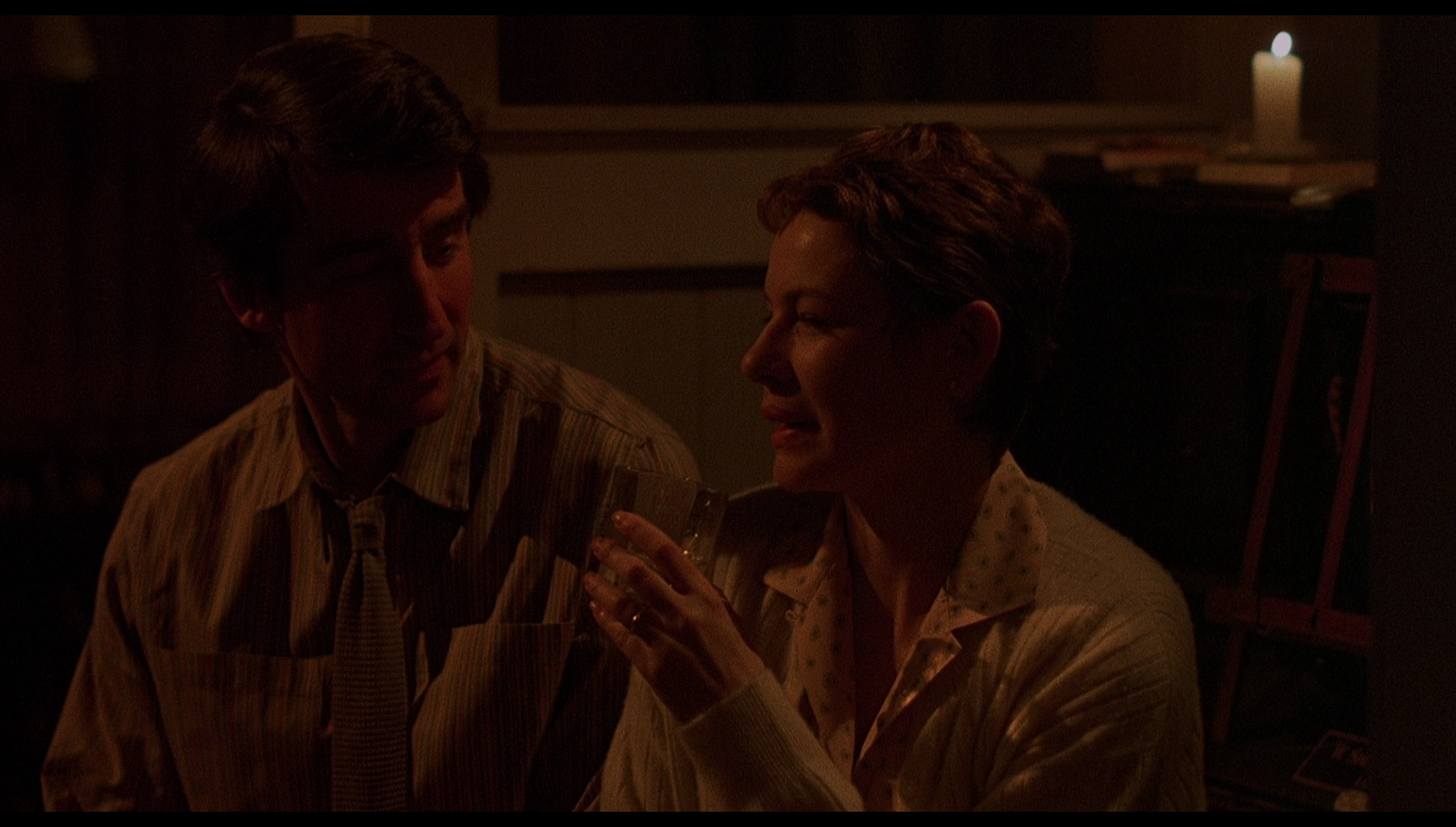  
Another Woman
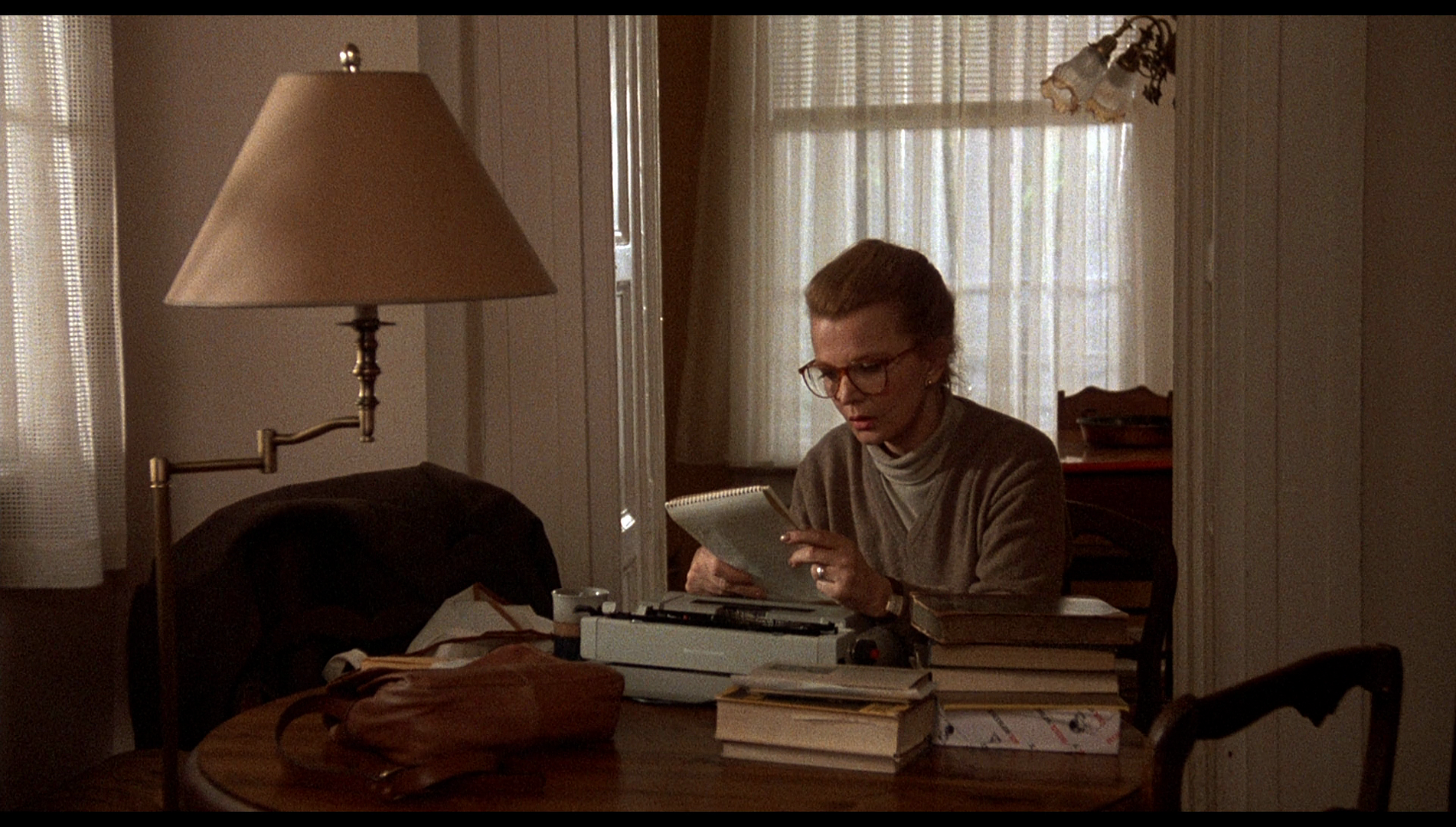 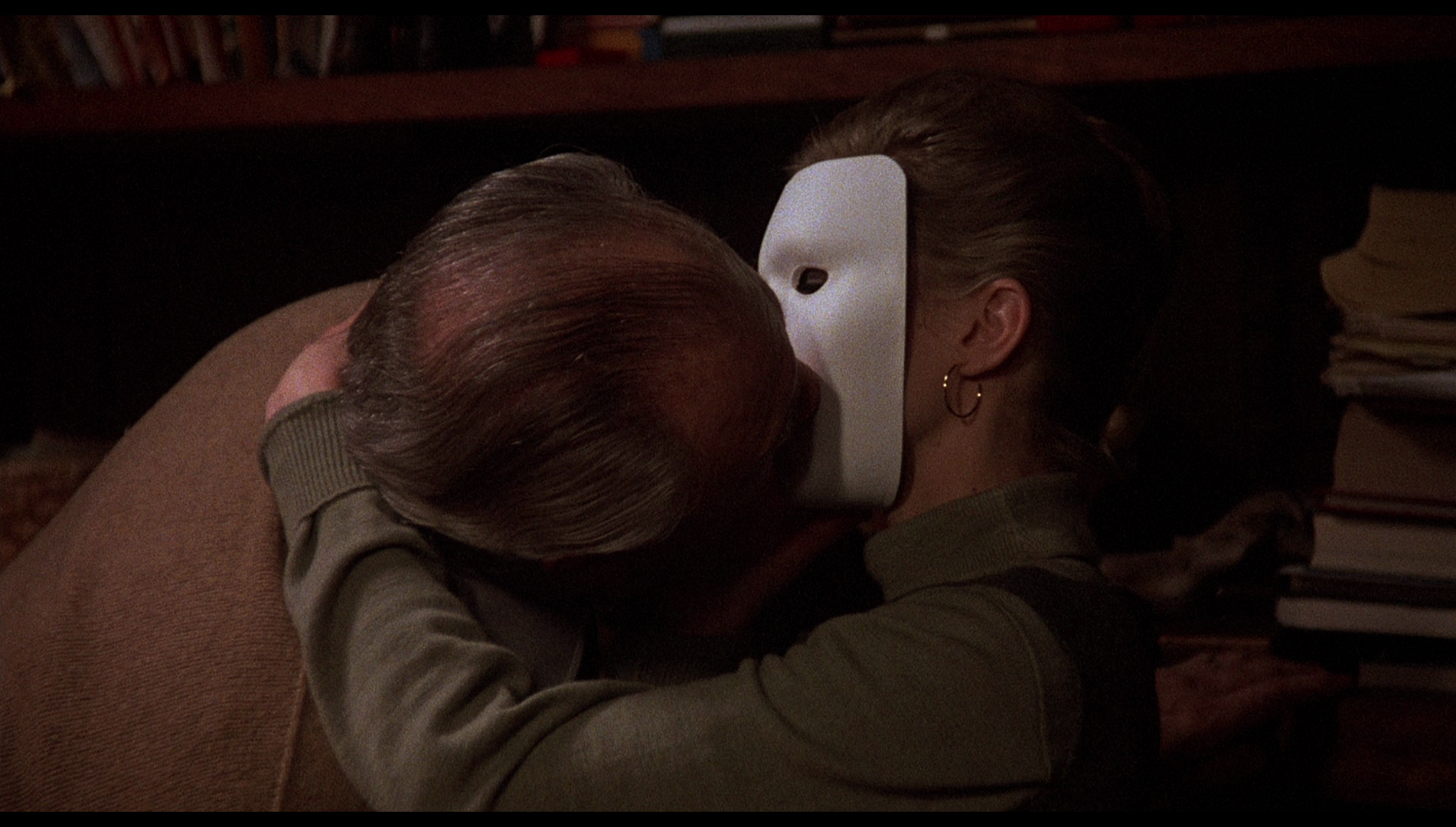 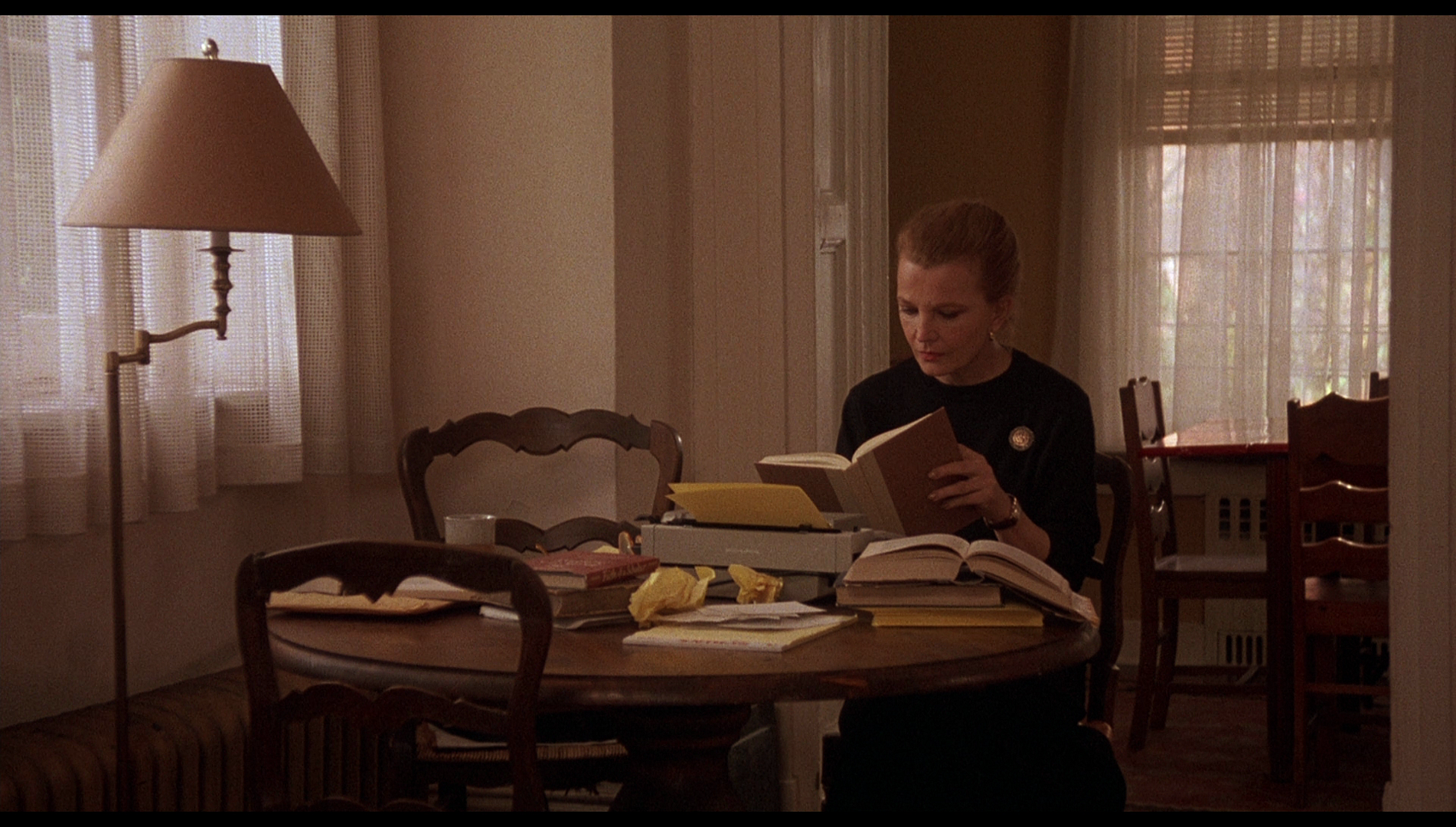
Crimes and Misdemeanors
 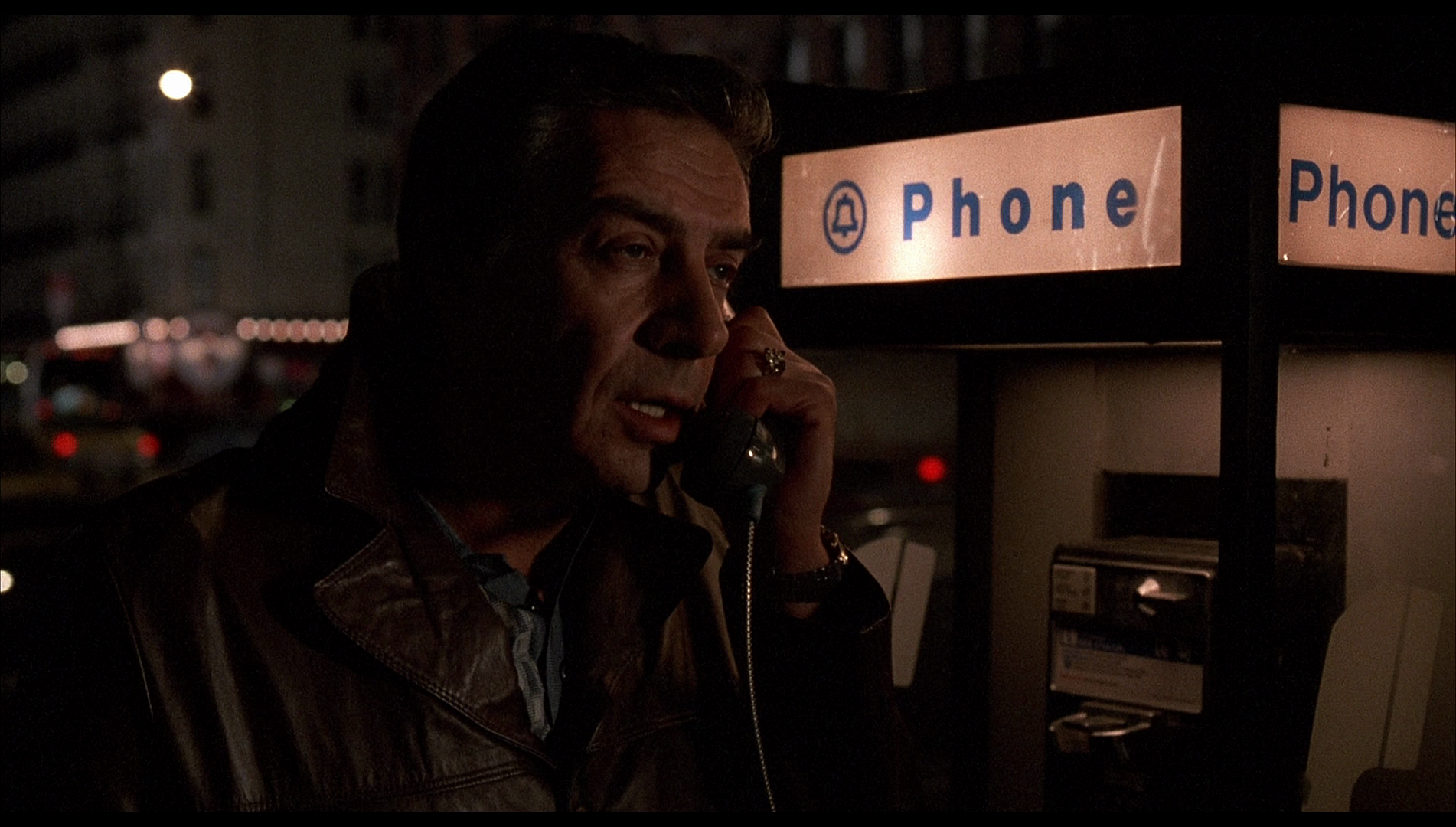 
Alice
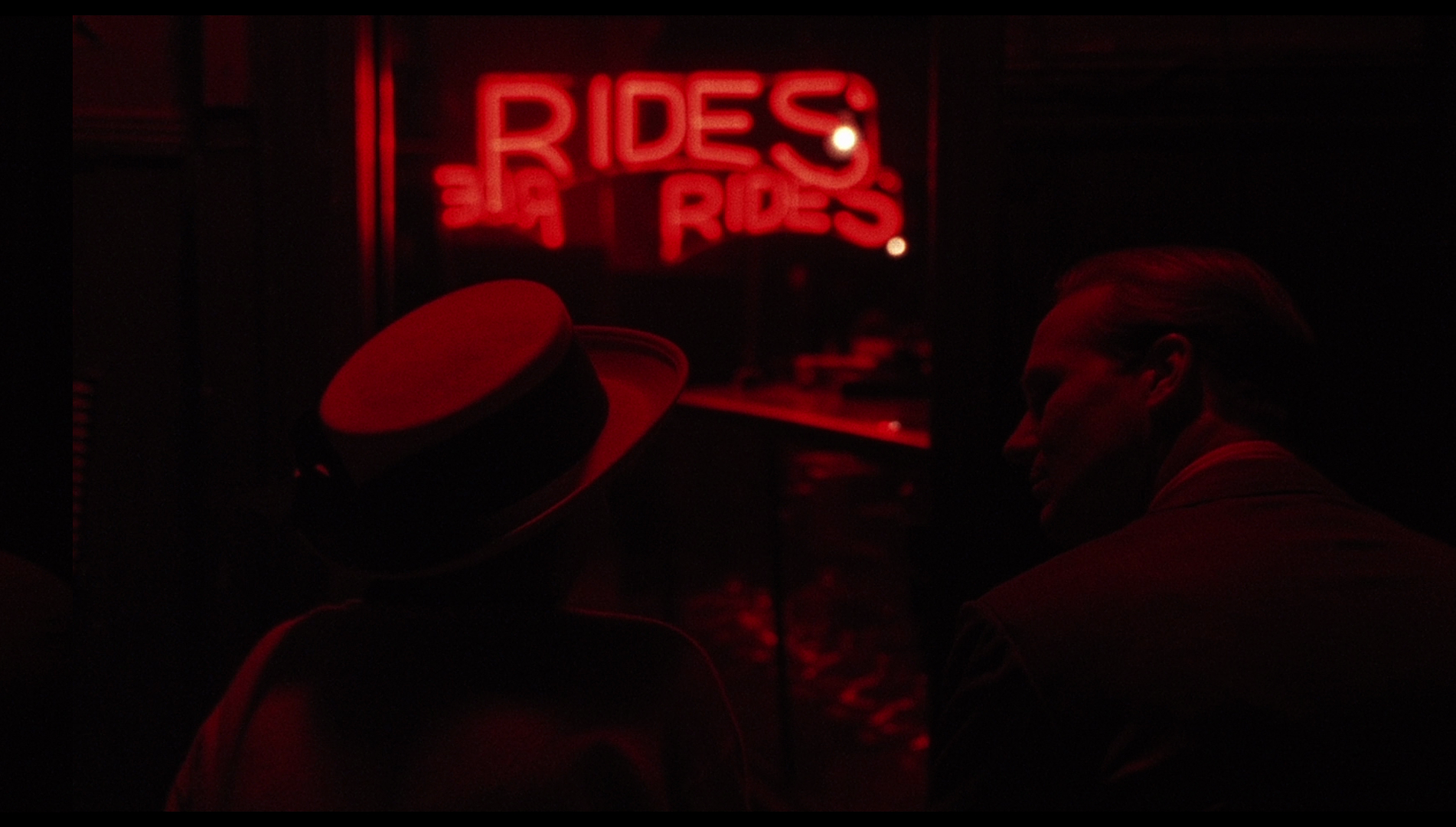  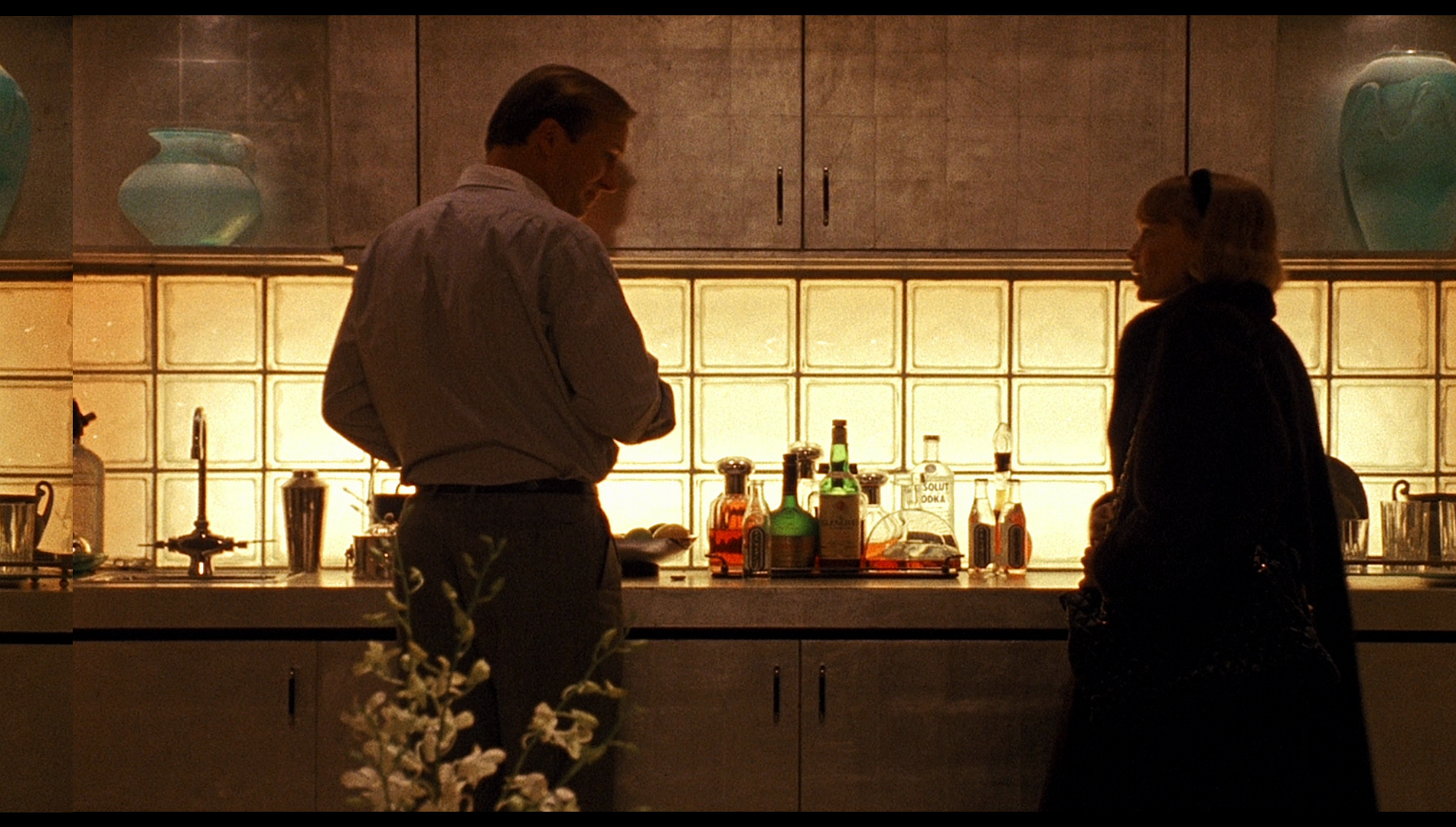
Shadows and Fog
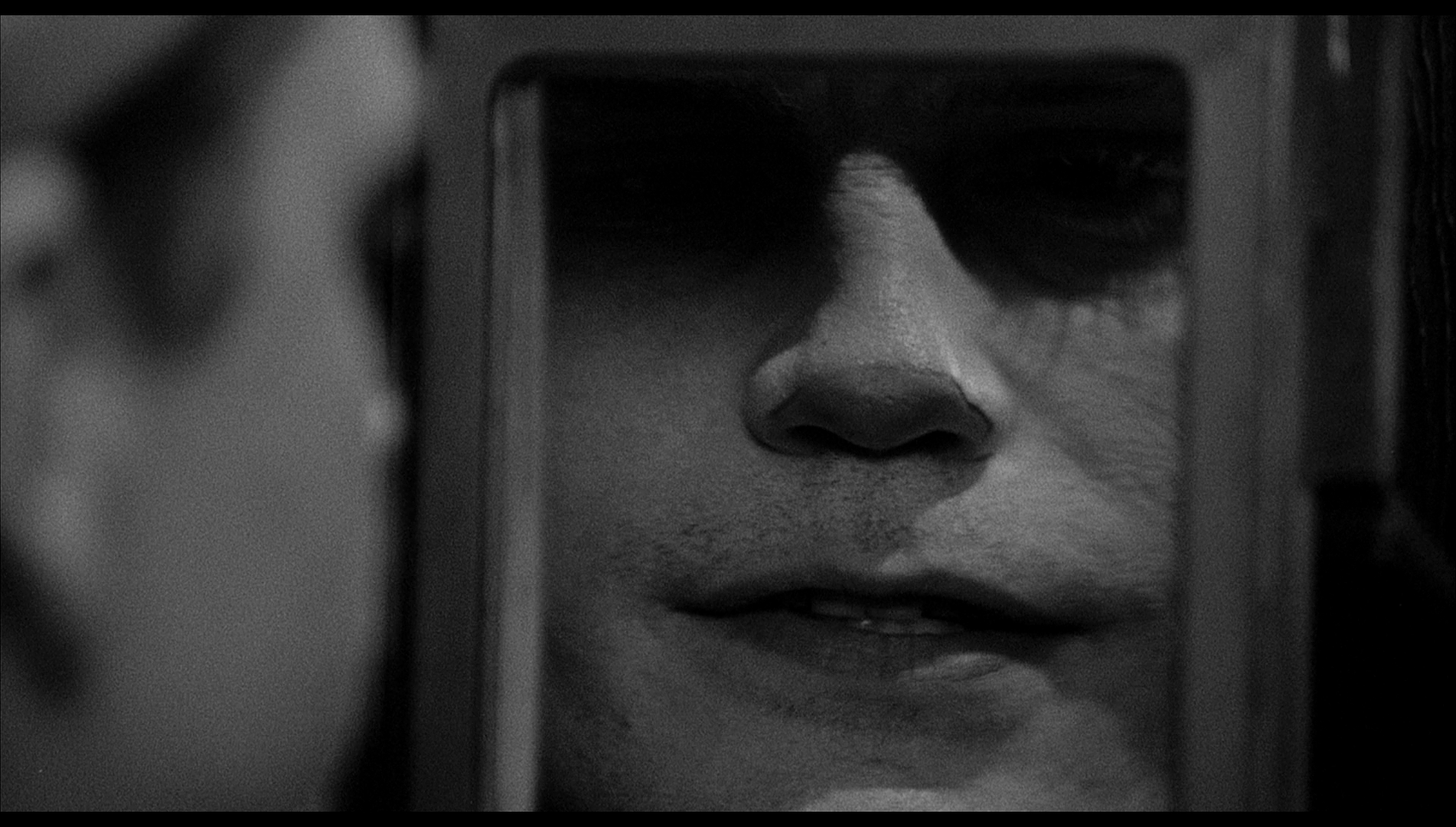 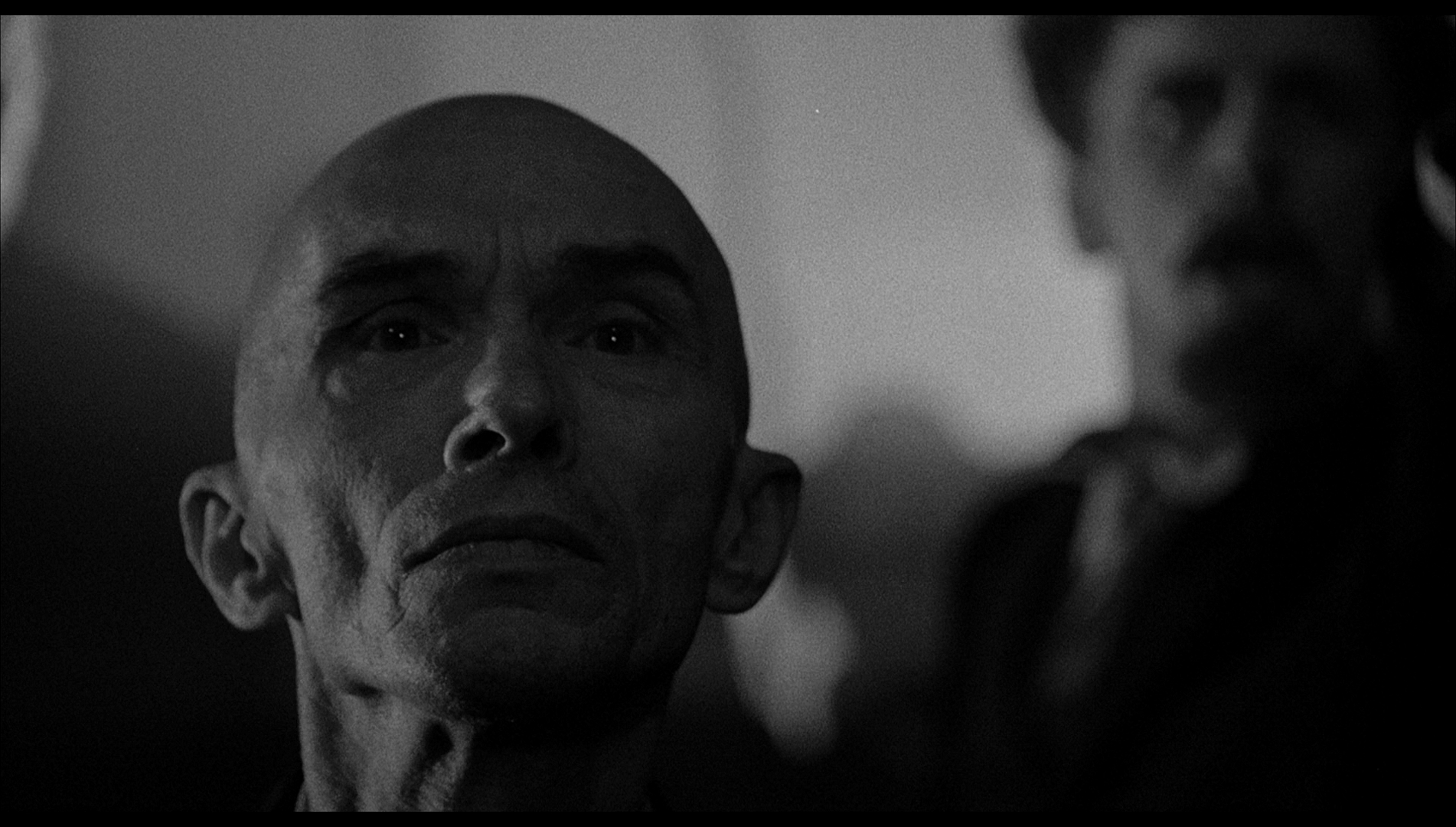 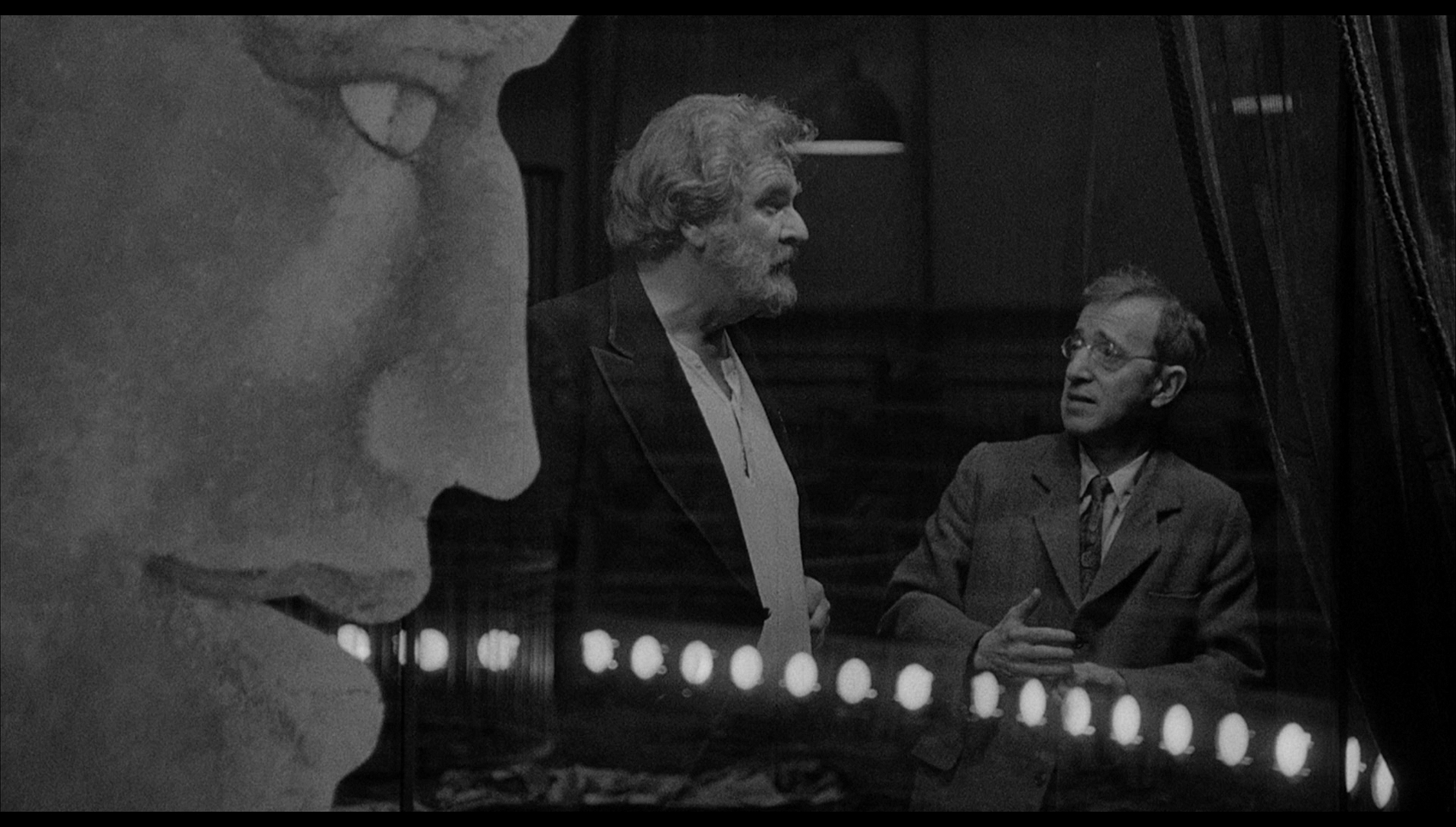
NB. Larger screen grabs are included at the bottom of this review.
Audio
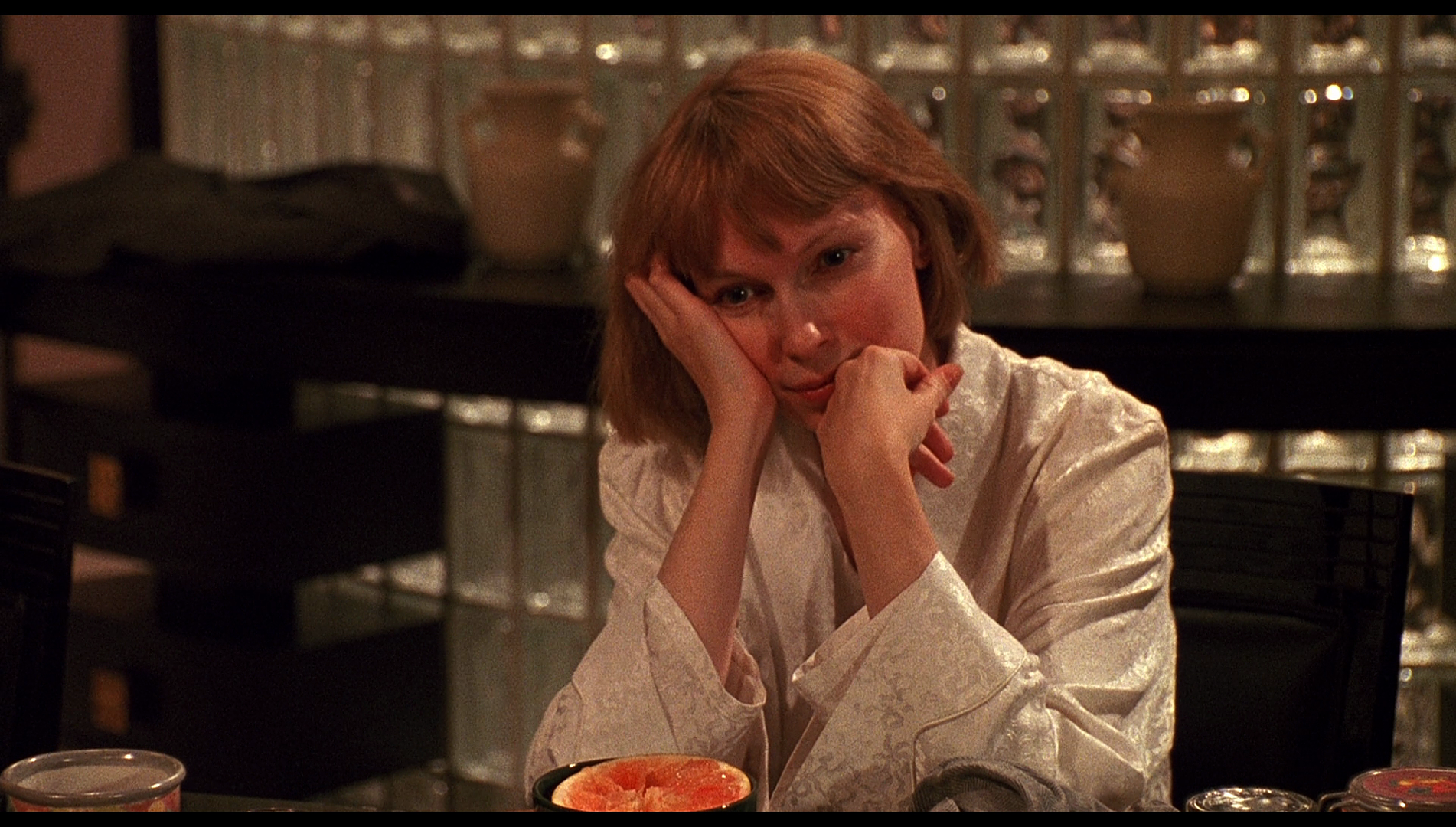 All of the films are presented with English LPCM 2.0 stereo tracks. These audio tracks are clean and clear throughout, dialogue always audible, and display good range when they need to. None of the tracks are in any way ‘showy’, but they’re represented excellently on these discs. All of the films are presented with English LPCM 2.0 stereo tracks. These audio tracks are clean and clear throughout, dialogue always audible, and display good range when they need to. None of the tracks are in any way ‘showy’, but they’re represented excellently on these discs.
All of the films are accompanied by English subtitles for the Hard of Hearing. These are accurate and easy to read.
Extras
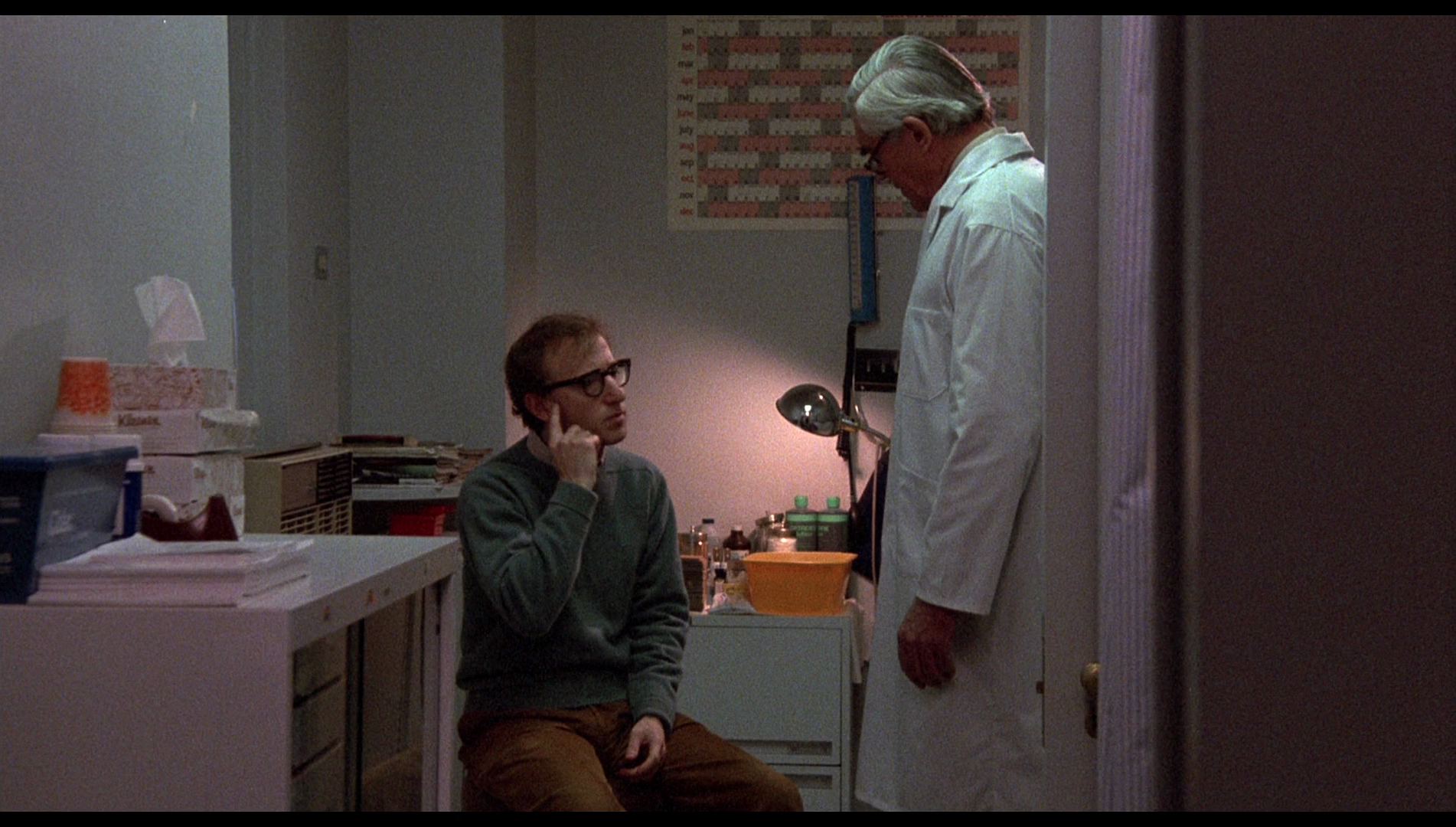 The only extra on each disc is a trailer for the film. The disc contents are as follows: The only extra on each disc is a trailer for the film. The disc contents are as follows:
DISC ONE: Radio Days
* The Film (88:23)
- Trailer (2:26)
DISC TWO: Hannah and Her Sisters
* The Film (106:59)
- Trailer (1:37)
DISC THREE: September
* The Film (82:47)
- Trailer (0:56)
DISC FOUR: Another Woman
* The Film (81:08)
- Trailer (1:30)
DISC FIVE: Crimes and Misdemeanors
* The Film (104:07)
- Trailer (1:31)
DISC SIX: Alice
* The Film (106:20)
- Trailer (0:46)
DISC SEVEN: Shadows and Fog
* The Film (85:40)
- Trailer (1:02)
Retail copies also include a book containing new and archival writing about the films.
Overall
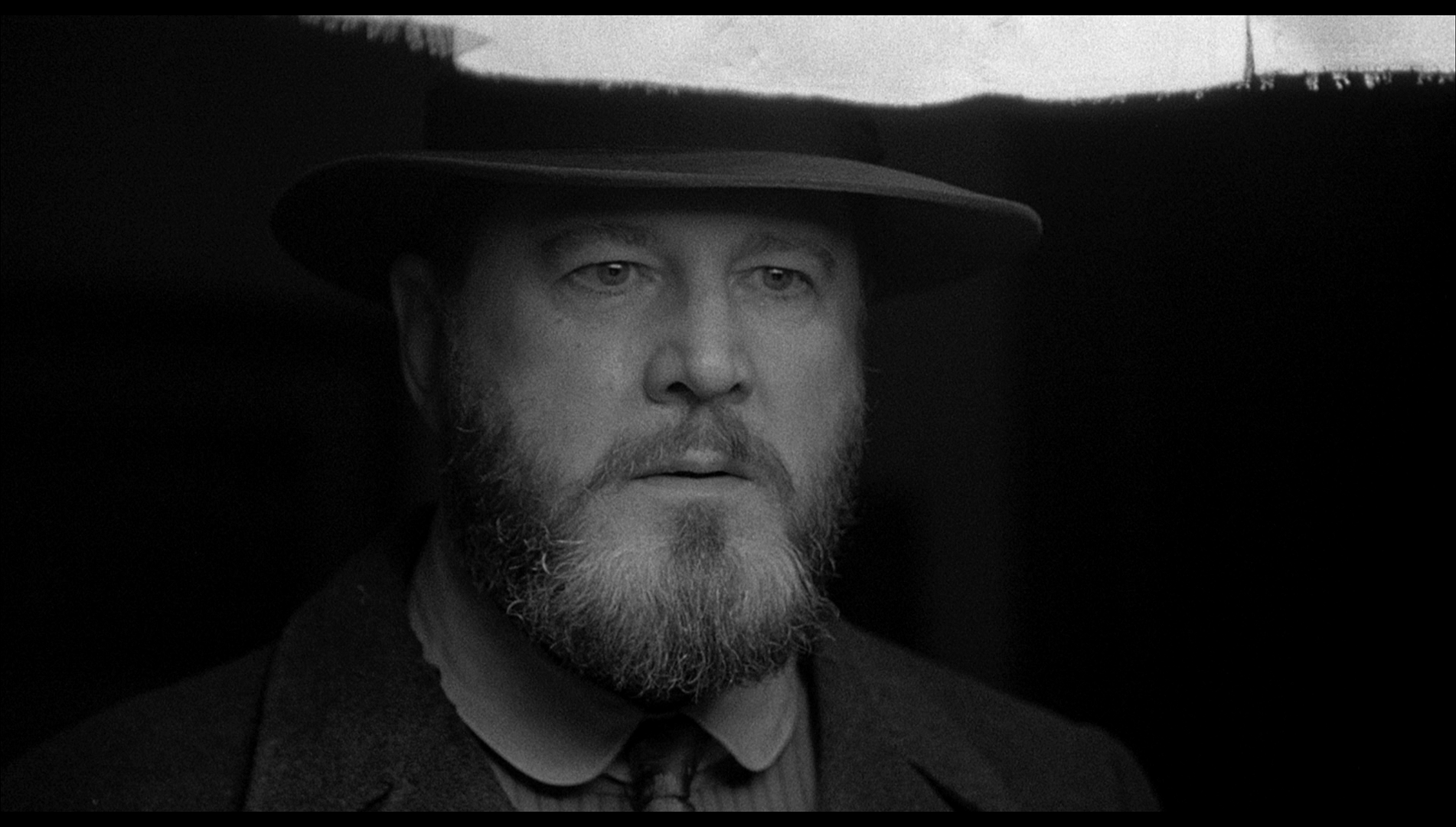 A compulsory purchase for Woody Allen fans, this boxed set contains films from one of Allen’s most acclaimed periods within his filmmaking career. These films show Allen moving further towards the Ingmar Bergman style of drama that characterised Interiors and away from the more outré humour of most of his 1970s pictures. For this reason, some of the films here received mix receptions upon their original releases – though others received near-unanimous acclaim. Speaking personally, in retrospect the most interesting films are perhaps the ones which were derided at the time of their cinema releases: watched again, almost 20 years after its first release, Another Woman is a striking, subtly unsettling film that is made glacial by Sven Nykvist’s superb photography. It’s a beautifully shot picture, Nykvist making the limited, ‘stagey’ sets work to his advantage. Shadows and Fog is also much better than its initial reception might suggest; in retrospect, it’s easy to see the relationships between this film and the then-burgeoning fascination with neo-noir, and Allen’s film makes a fascinating companion piece to Soderbergh’s Kafka, in particular (and, arguably, Scott McGehee and David Siegel’s similarly paranoid Suture (1993). A compulsory purchase for Woody Allen fans, this boxed set contains films from one of Allen’s most acclaimed periods within his filmmaking career. These films show Allen moving further towards the Ingmar Bergman style of drama that characterised Interiors and away from the more outré humour of most of his 1970s pictures. For this reason, some of the films here received mix receptions upon their original releases – though others received near-unanimous acclaim. Speaking personally, in retrospect the most interesting films are perhaps the ones which were derided at the time of their cinema releases: watched again, almost 20 years after its first release, Another Woman is a striking, subtly unsettling film that is made glacial by Sven Nykvist’s superb photography. It’s a beautifully shot picture, Nykvist making the limited, ‘stagey’ sets work to his advantage. Shadows and Fog is also much better than its initial reception might suggest; in retrospect, it’s easy to see the relationships between this film and the then-burgeoning fascination with neo-noir, and Allen’s film makes a fascinating companion piece to Soderbergh’s Kafka, in particular (and, arguably, Scott McGehee and David Siegel’s similarly paranoid Suture (1993).
This is an excellent set which is an essential purchase for fans of this director. All of the films get very pleasing presentations on their respective discs. The only audiovisual ‘extras’ are trailers for each of the pictures, but like the previous volumes of Allen’s work released by Arrow retail copies of the boxed set also include a book containing new and archival writing about the films. The films are also available individually, however.
References:
Girgus, Sam B, 2002: The Films of Woody Allen. Cambridge University Press
Lax, Eric, 1987: ‘For Woody Allen, 60 Days Hath September’. New York Times (6 December, 1987)
Radio Days

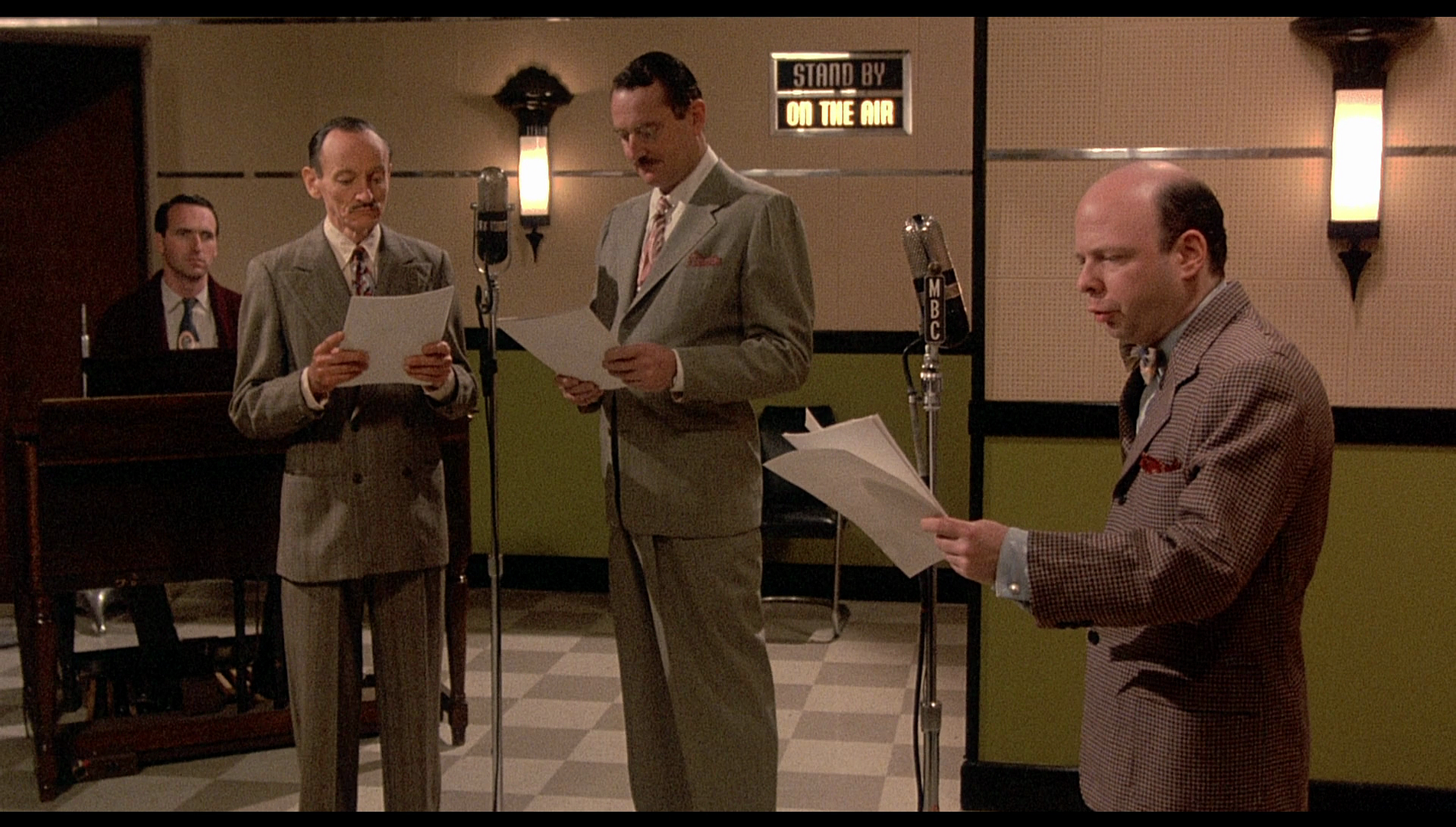

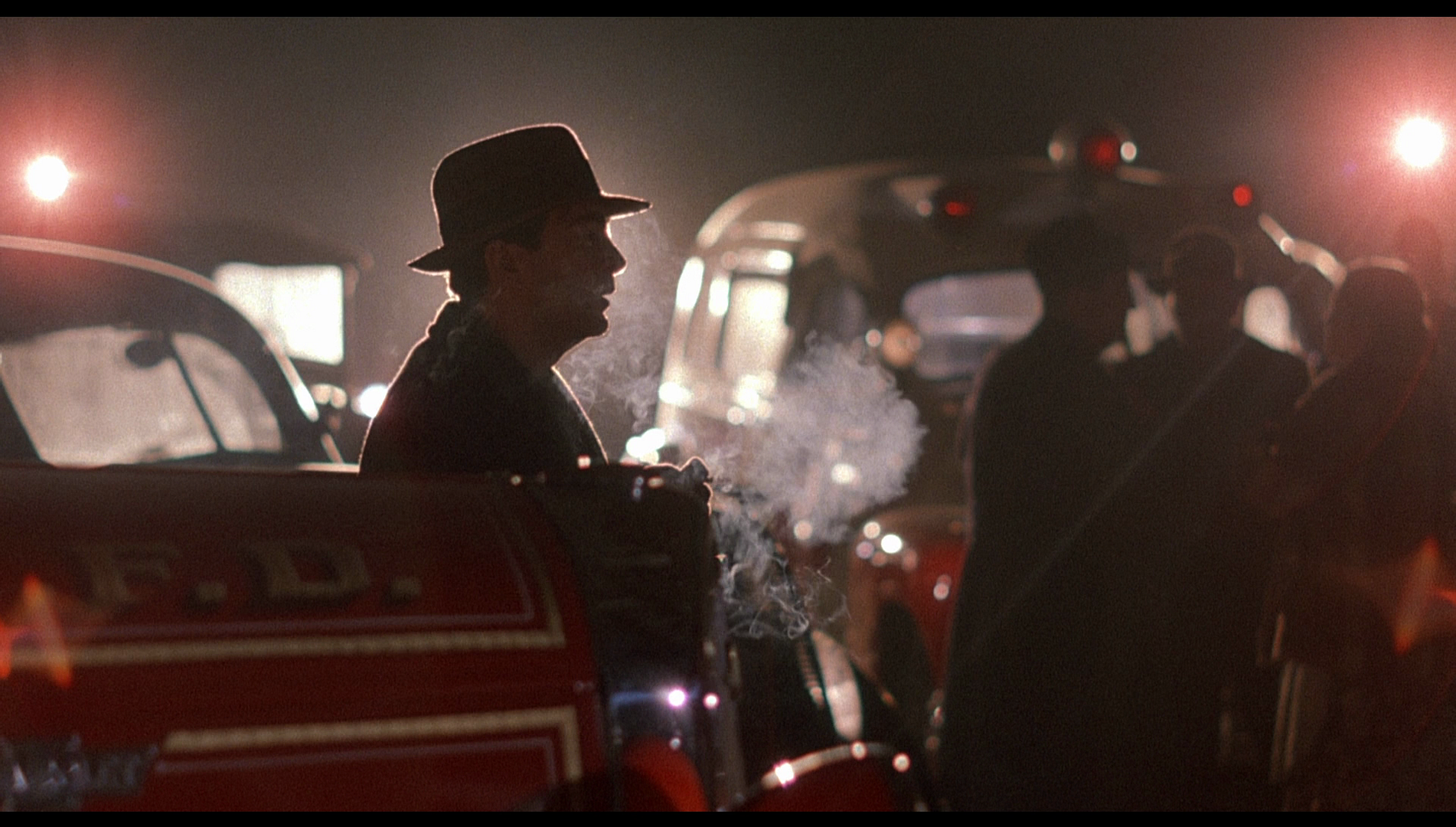
Hannah and Her Sisters
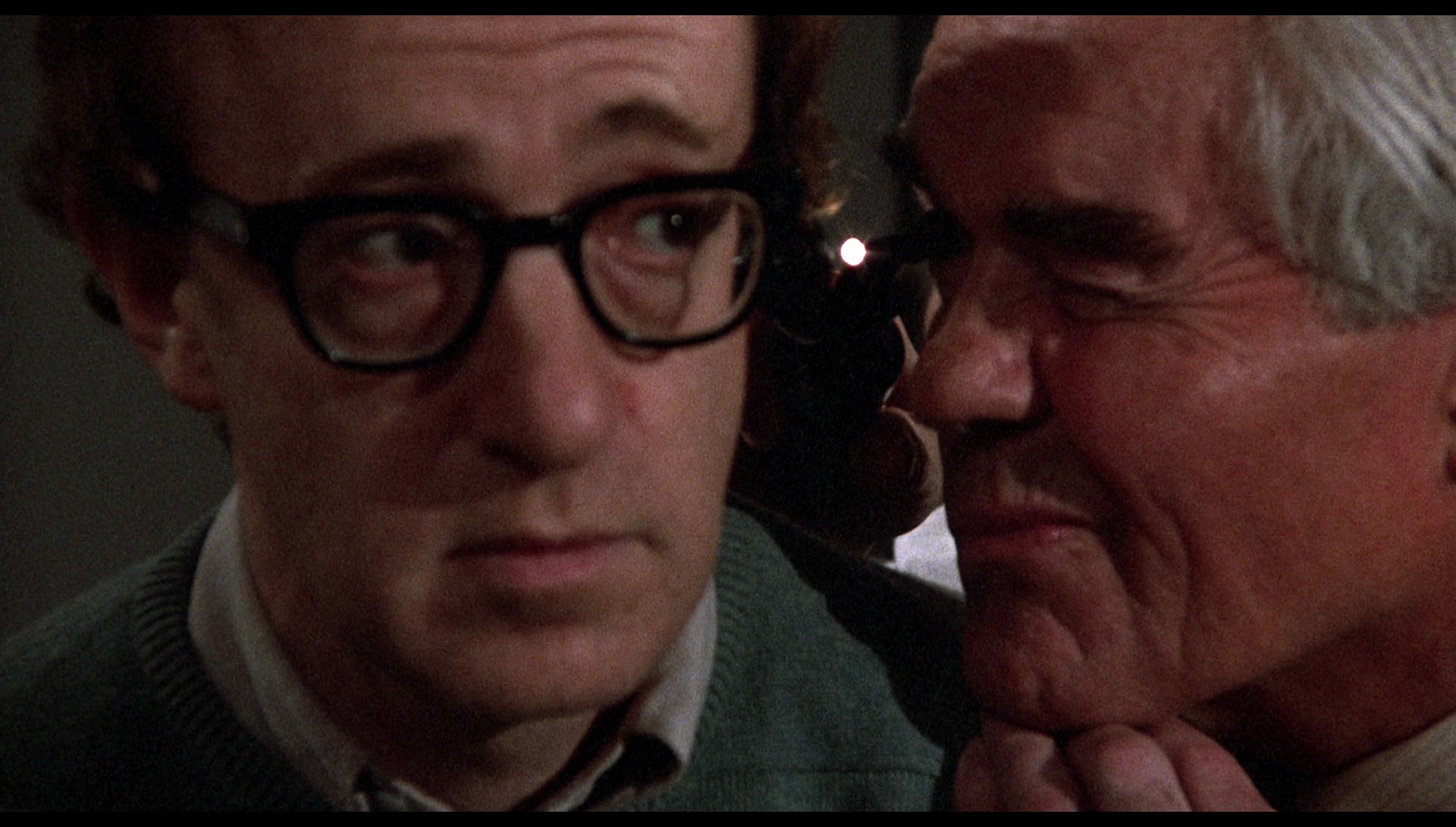
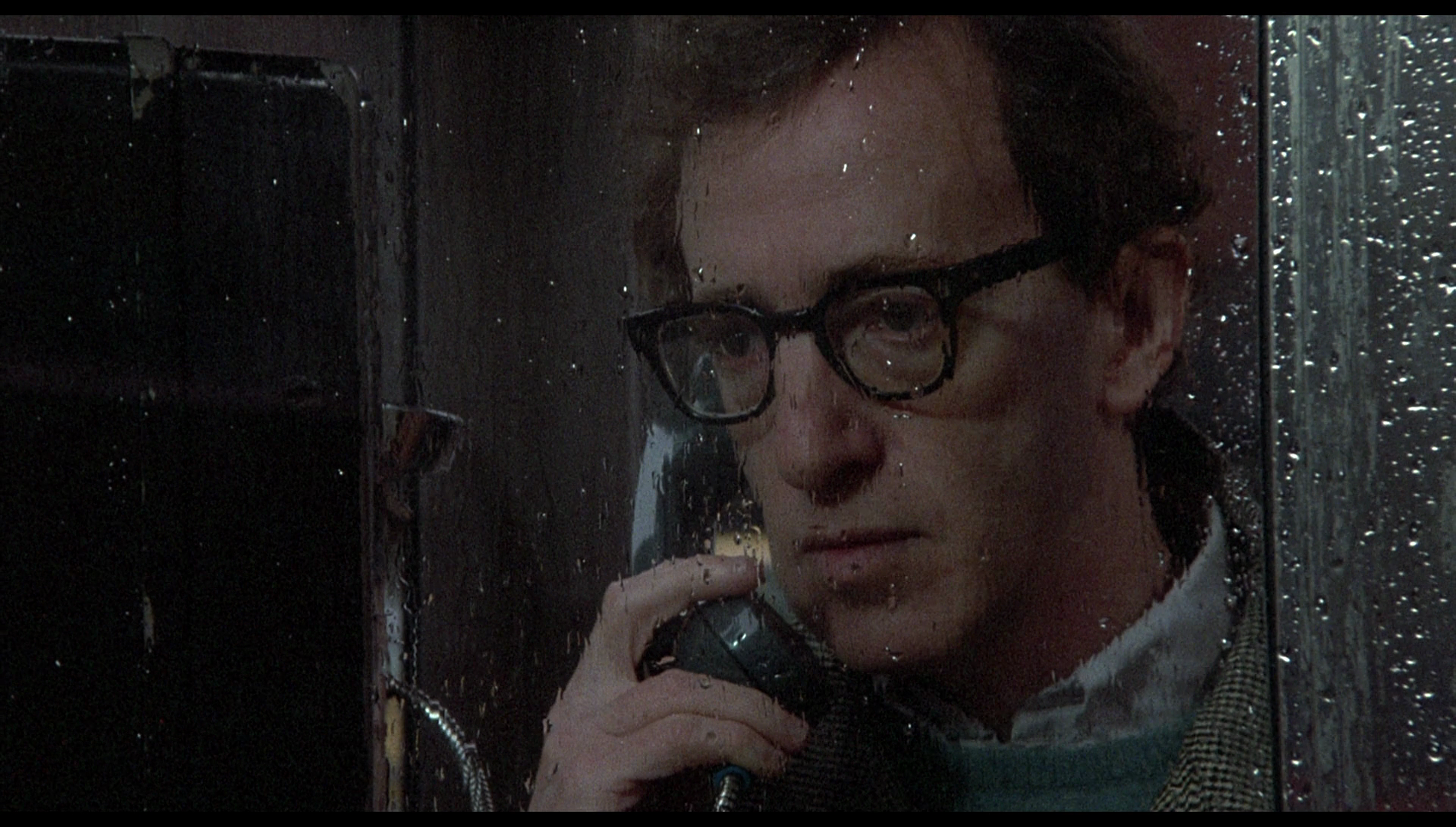
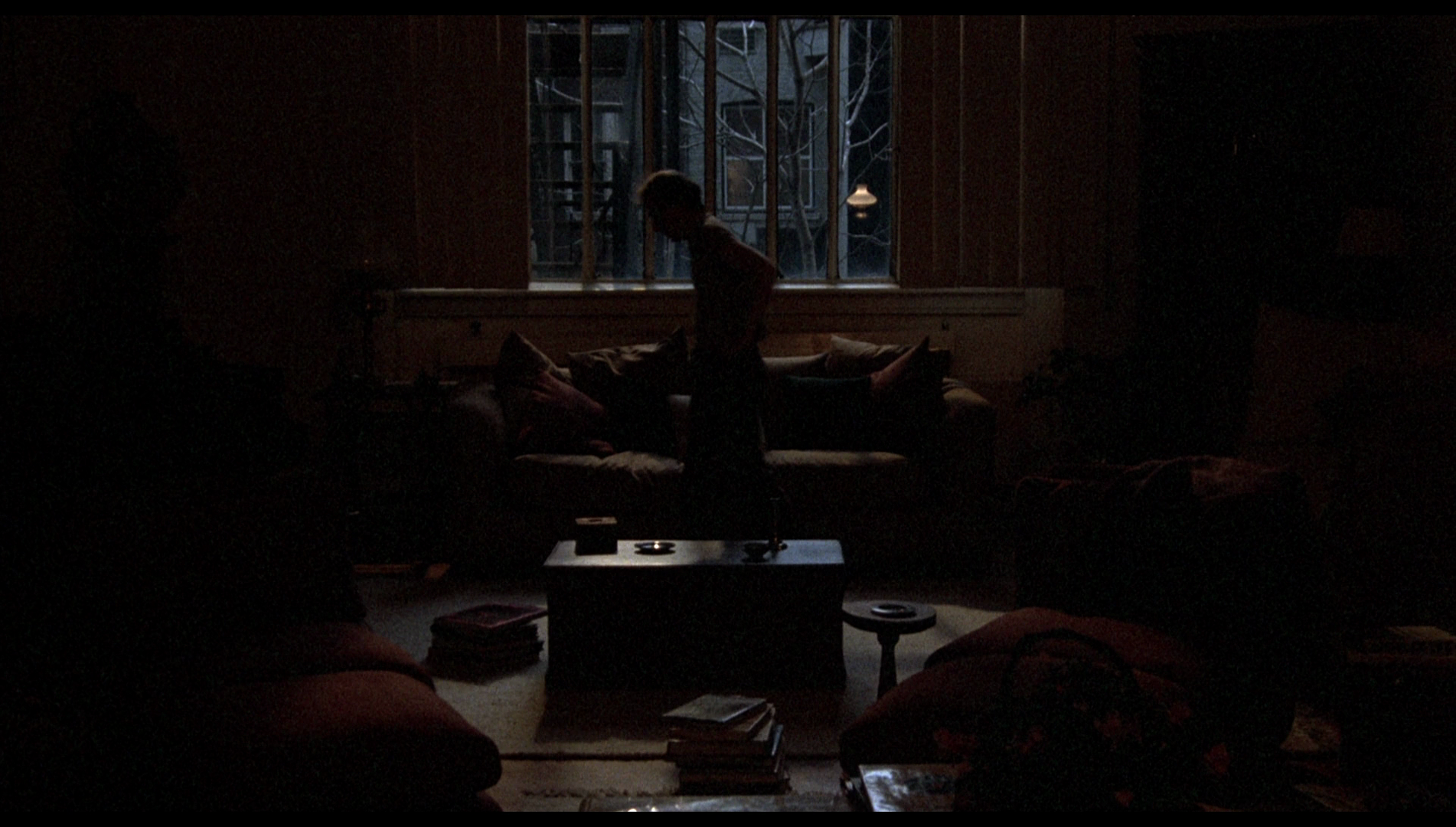

September
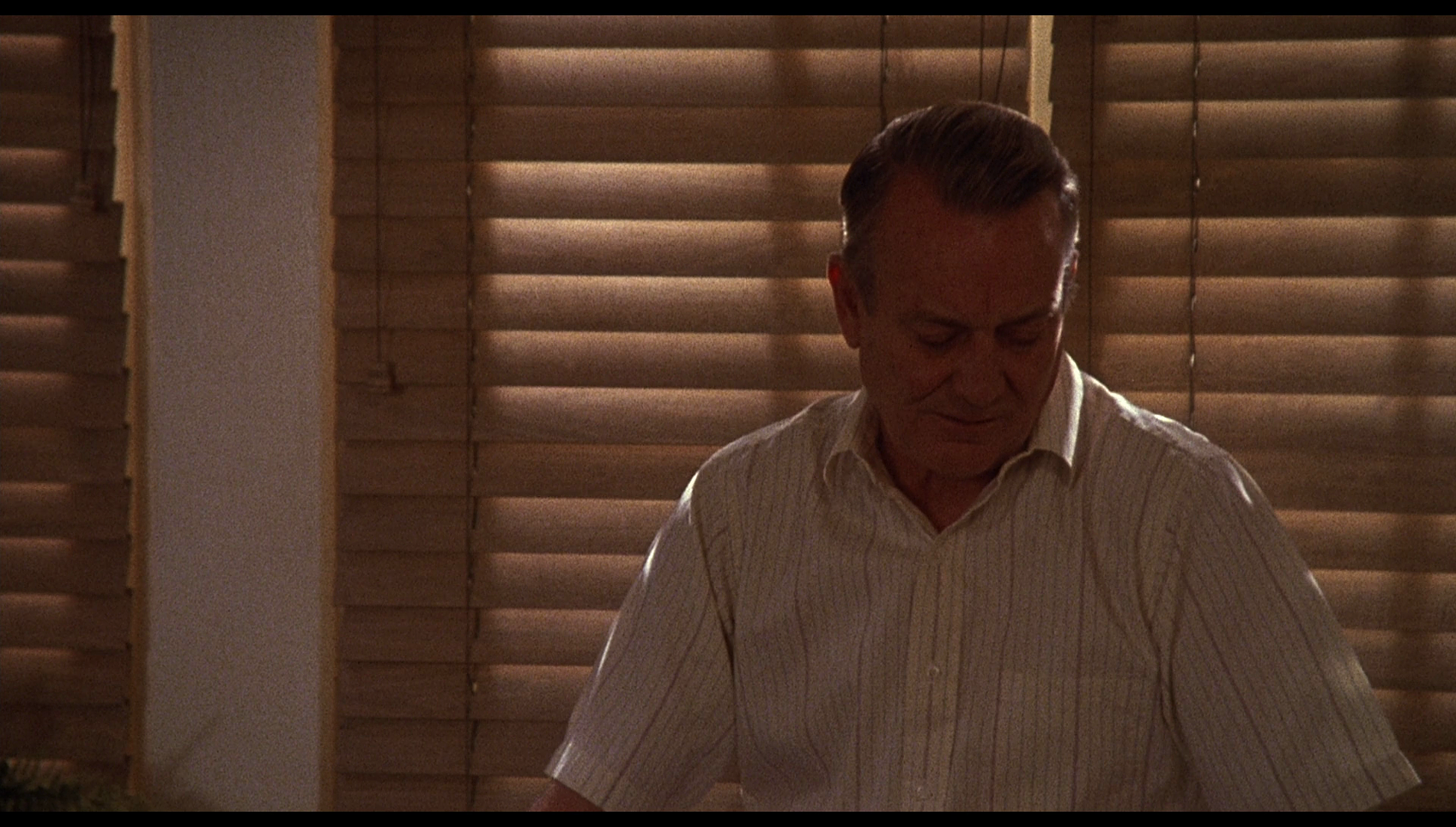
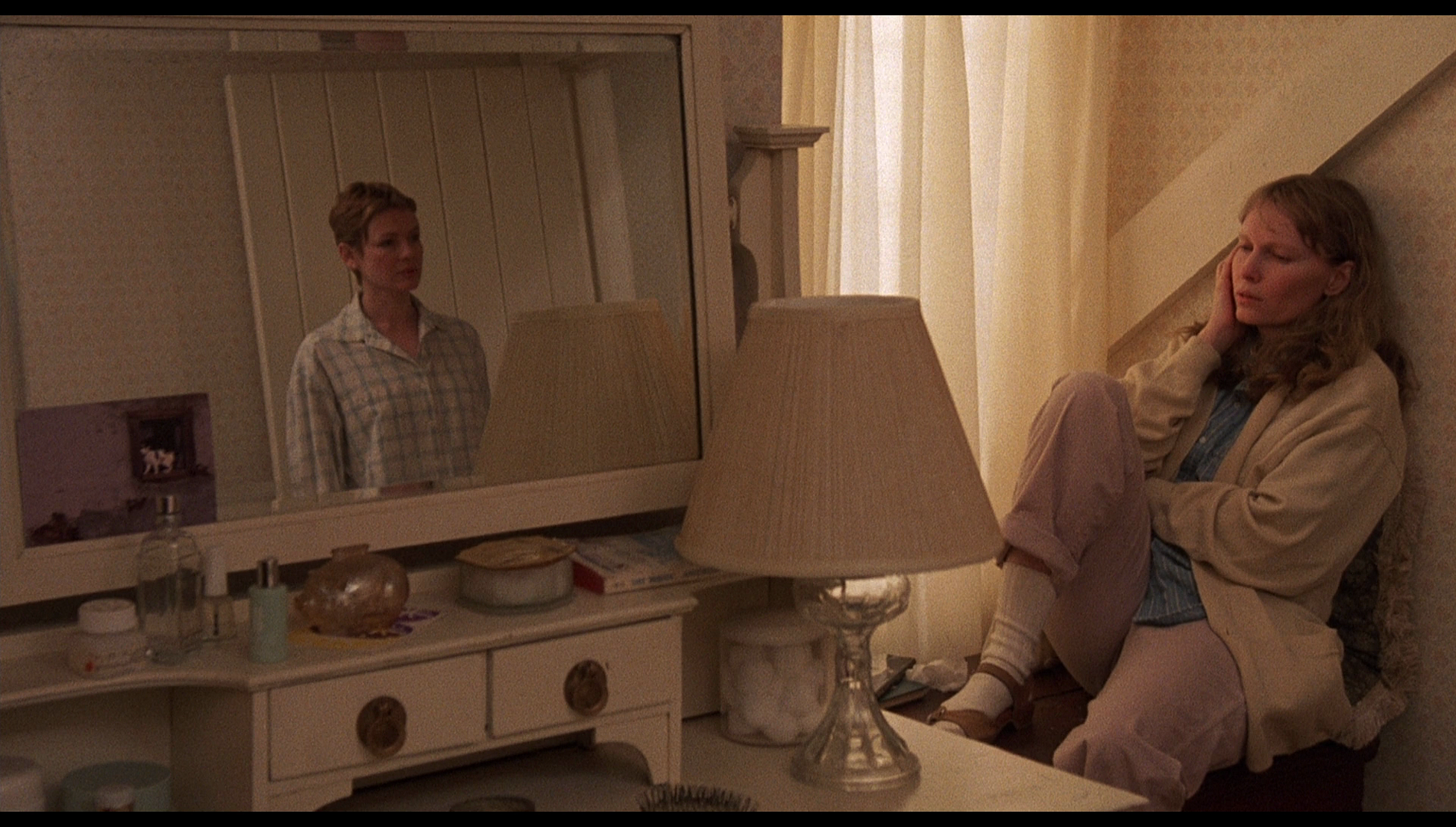
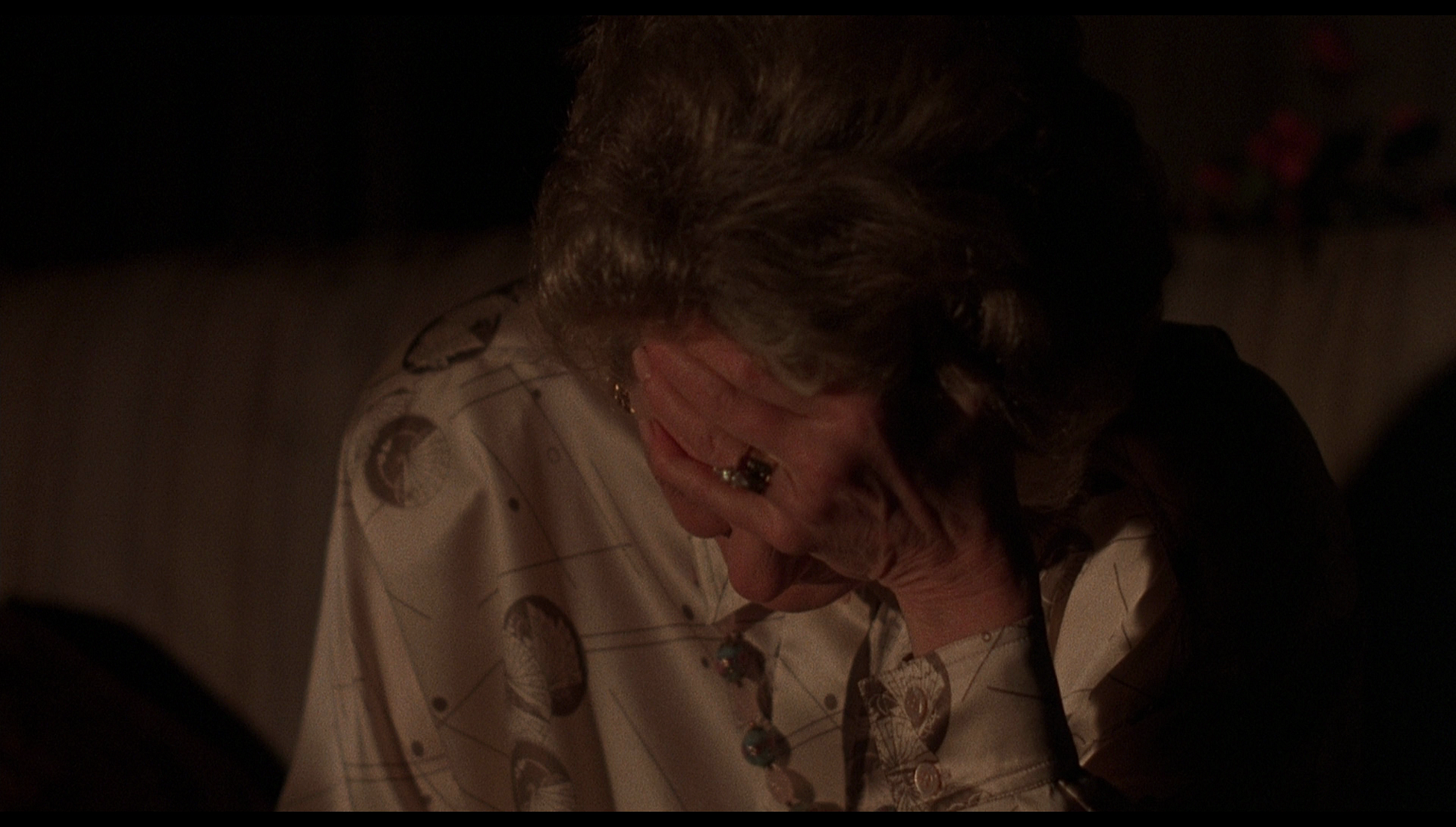
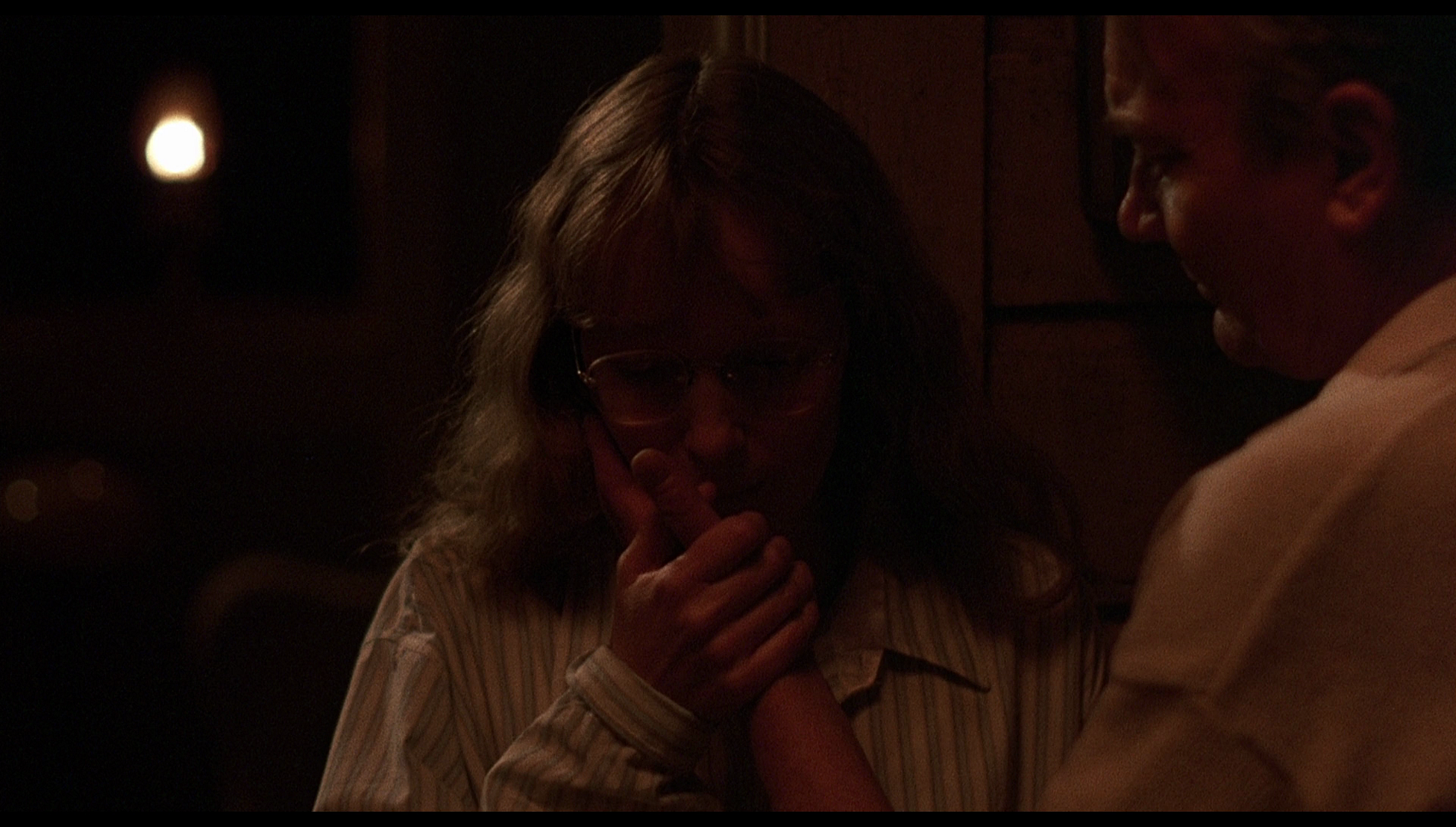
Crimes and Misdemeanors
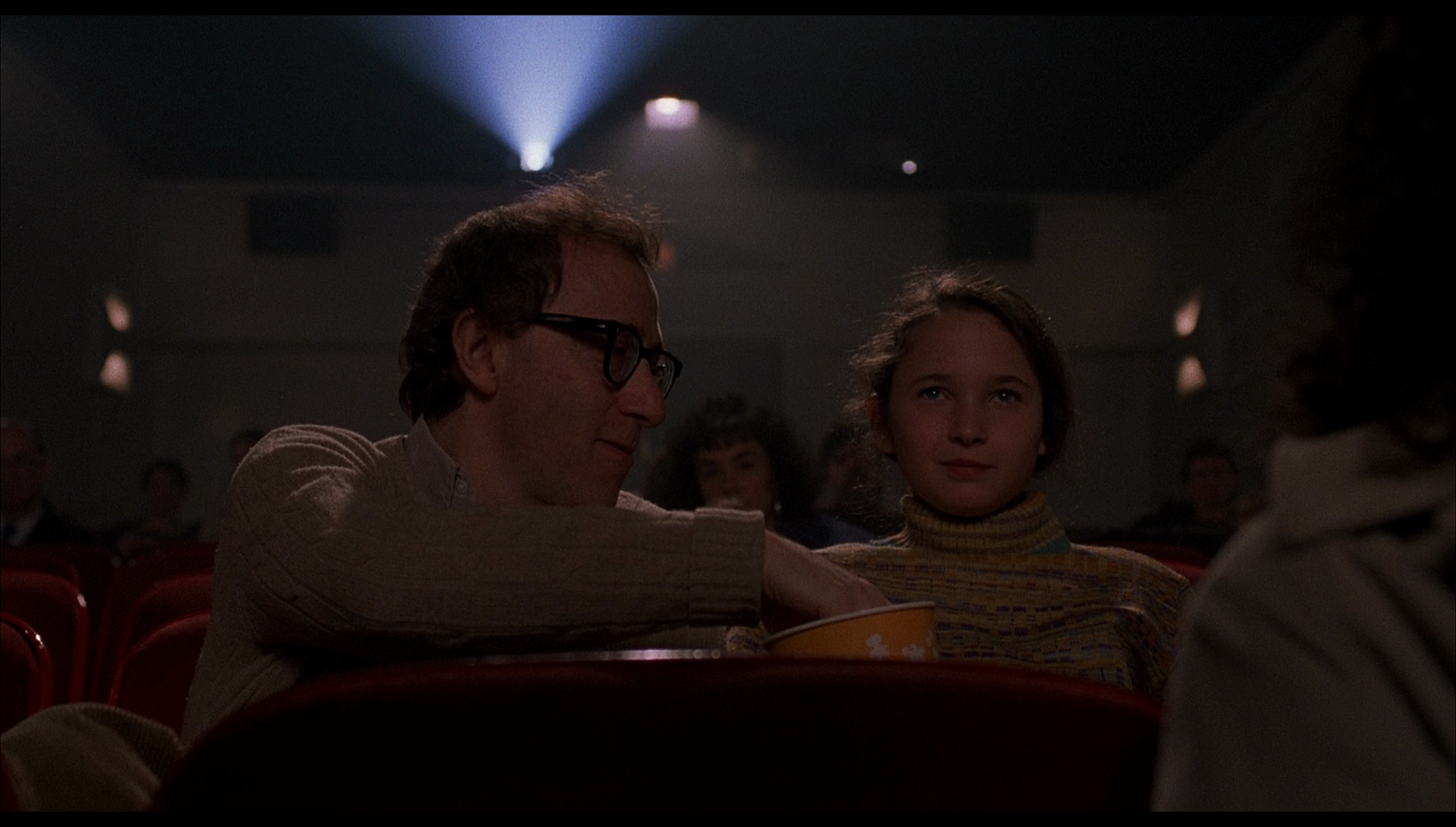
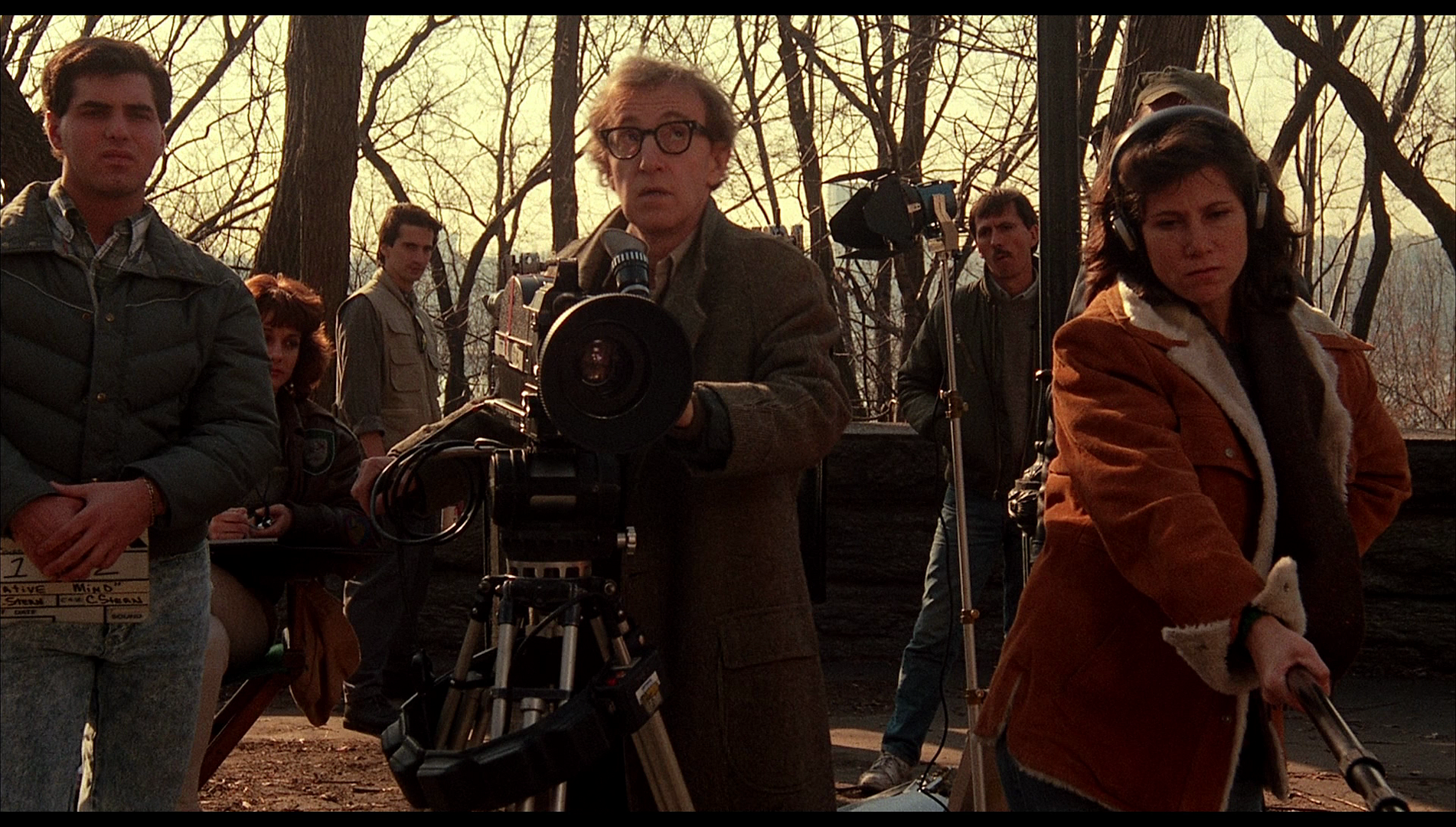
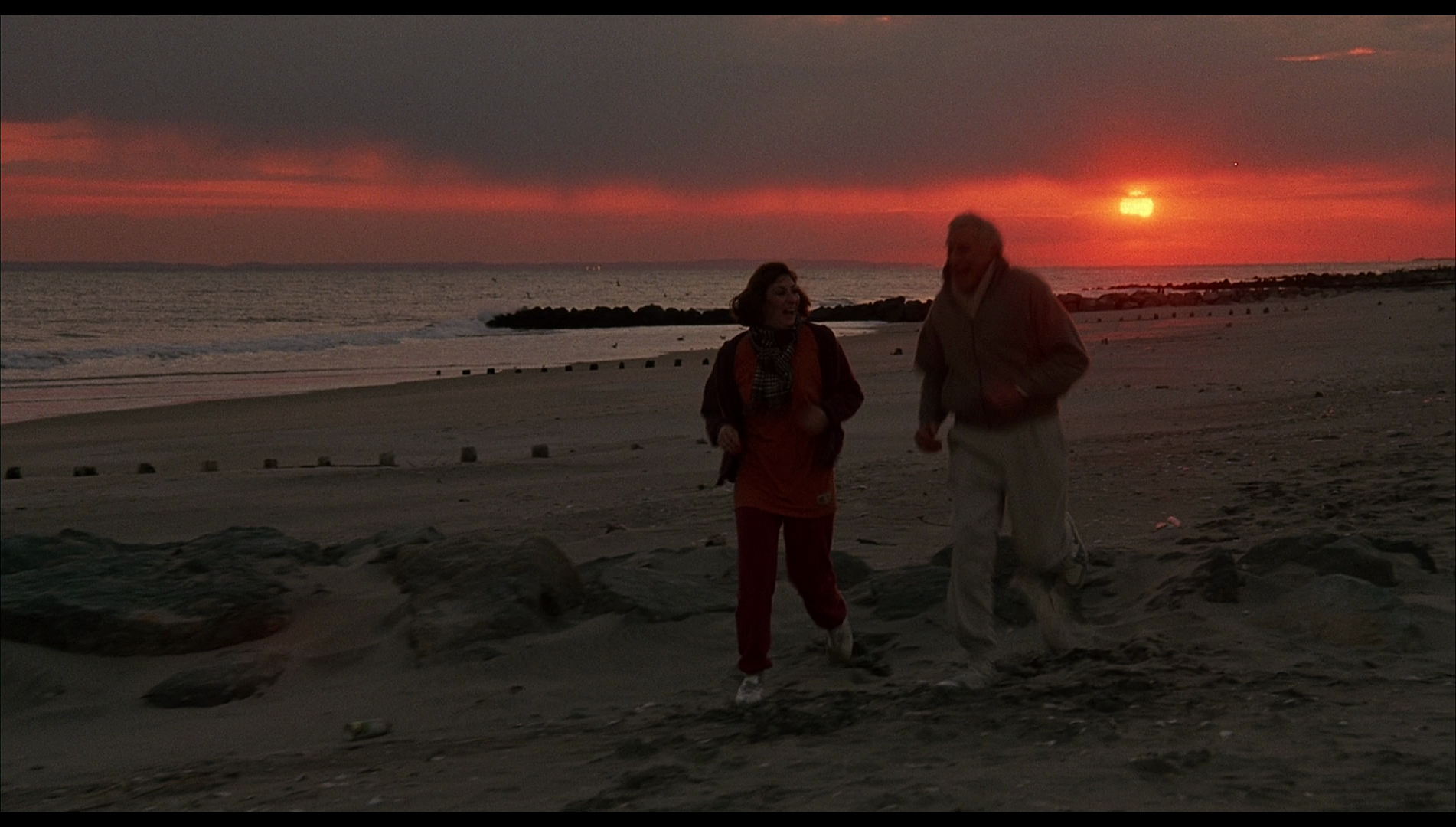
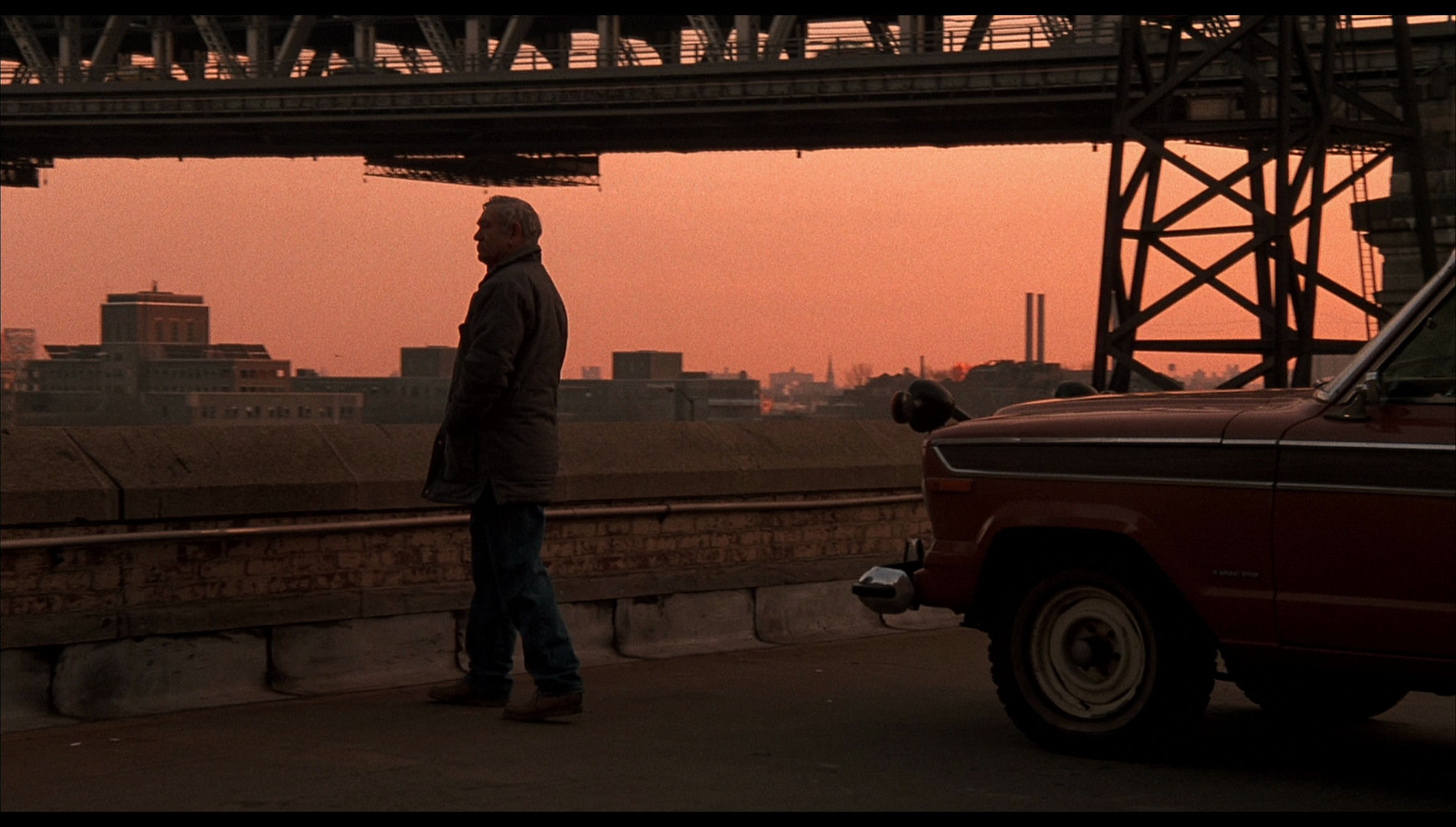
Another Woman
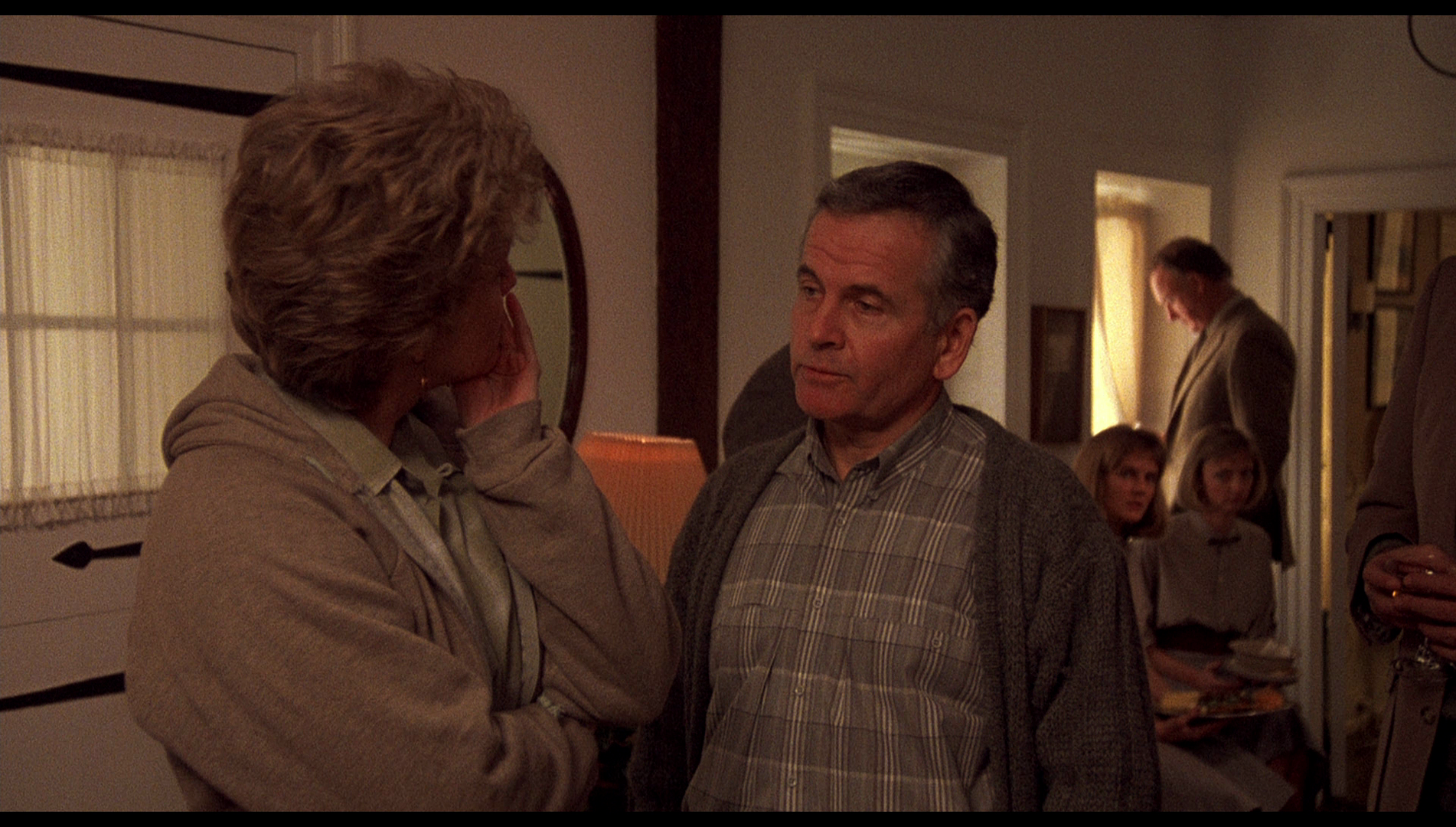
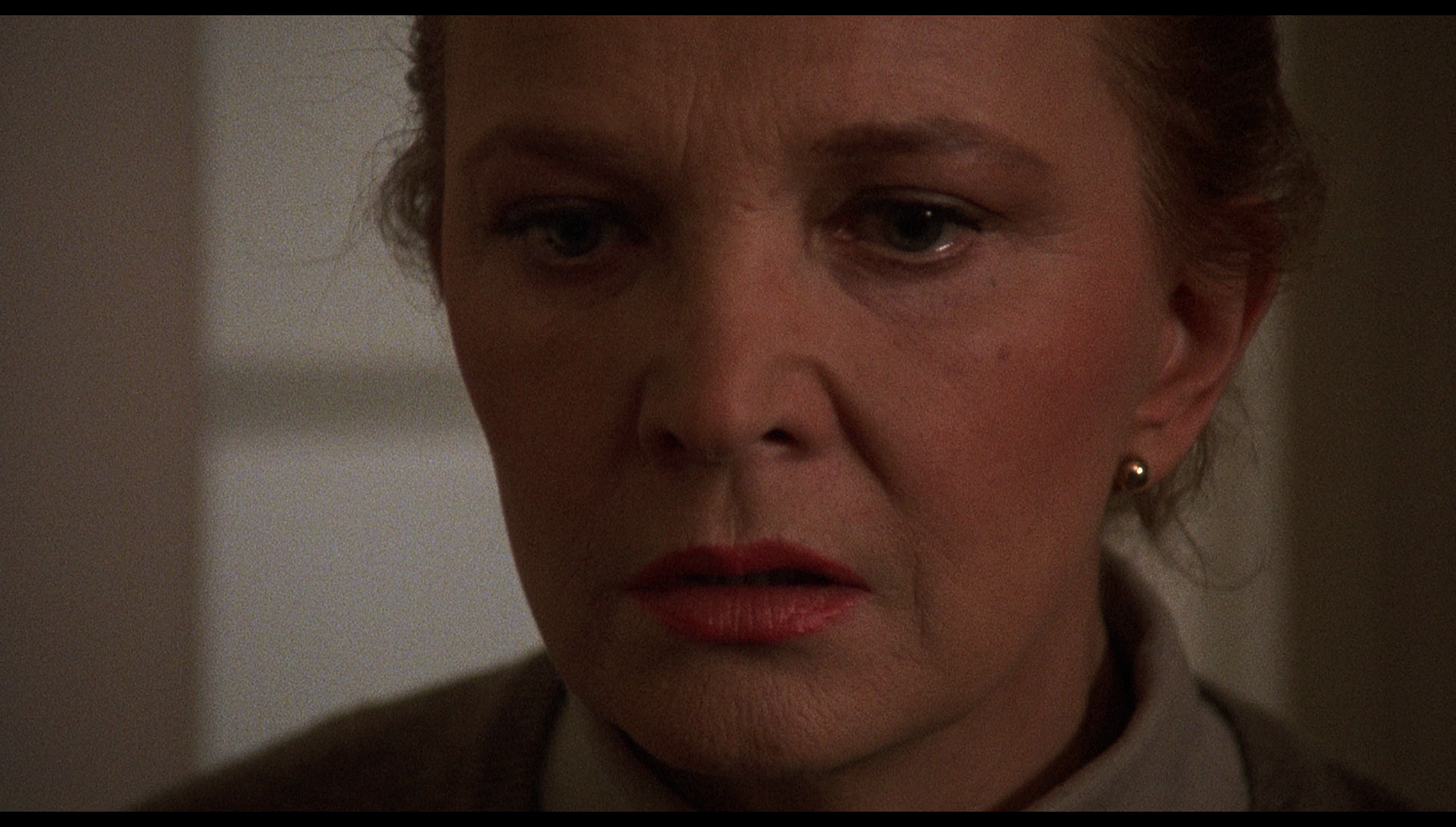

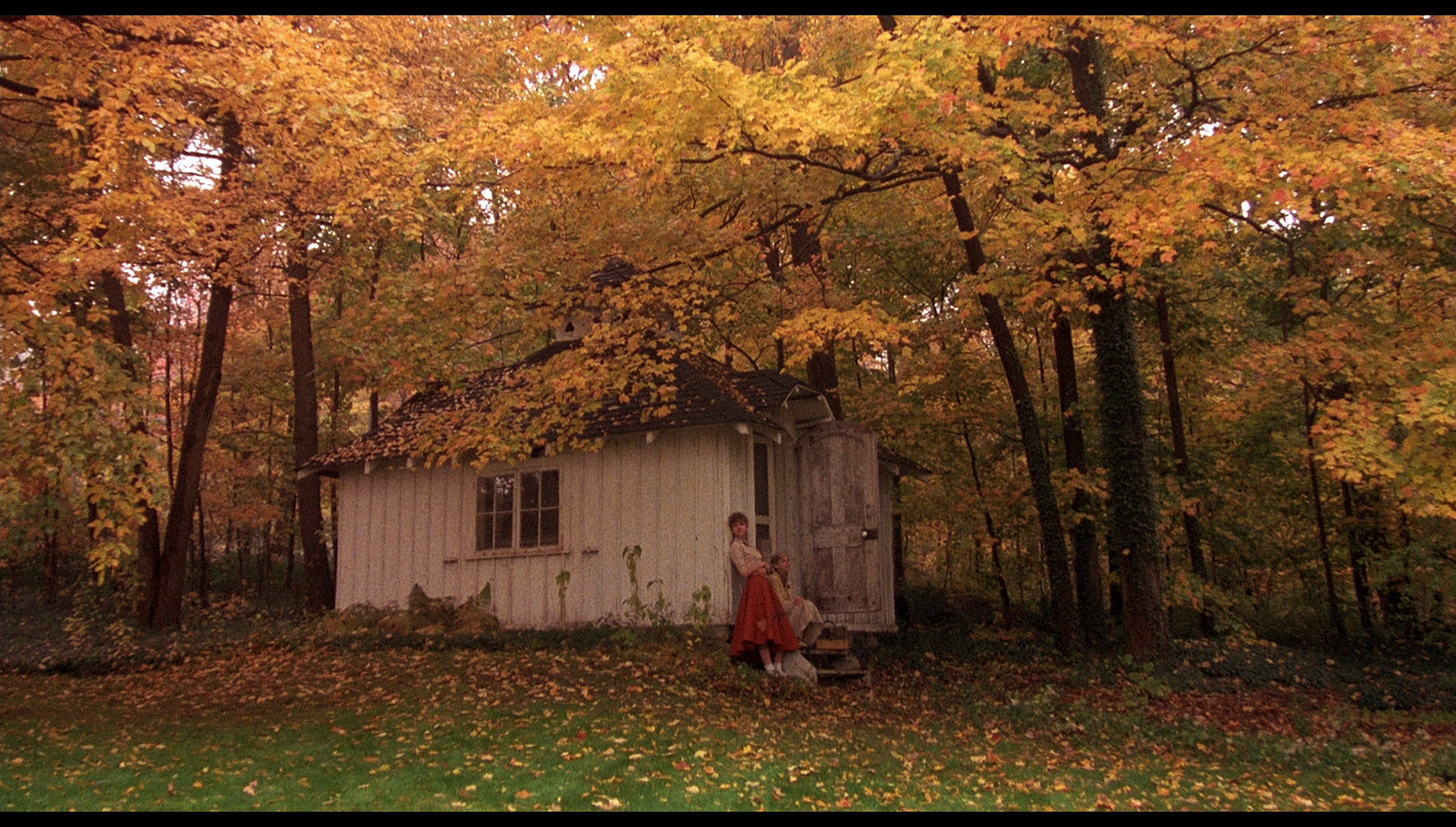
Alice
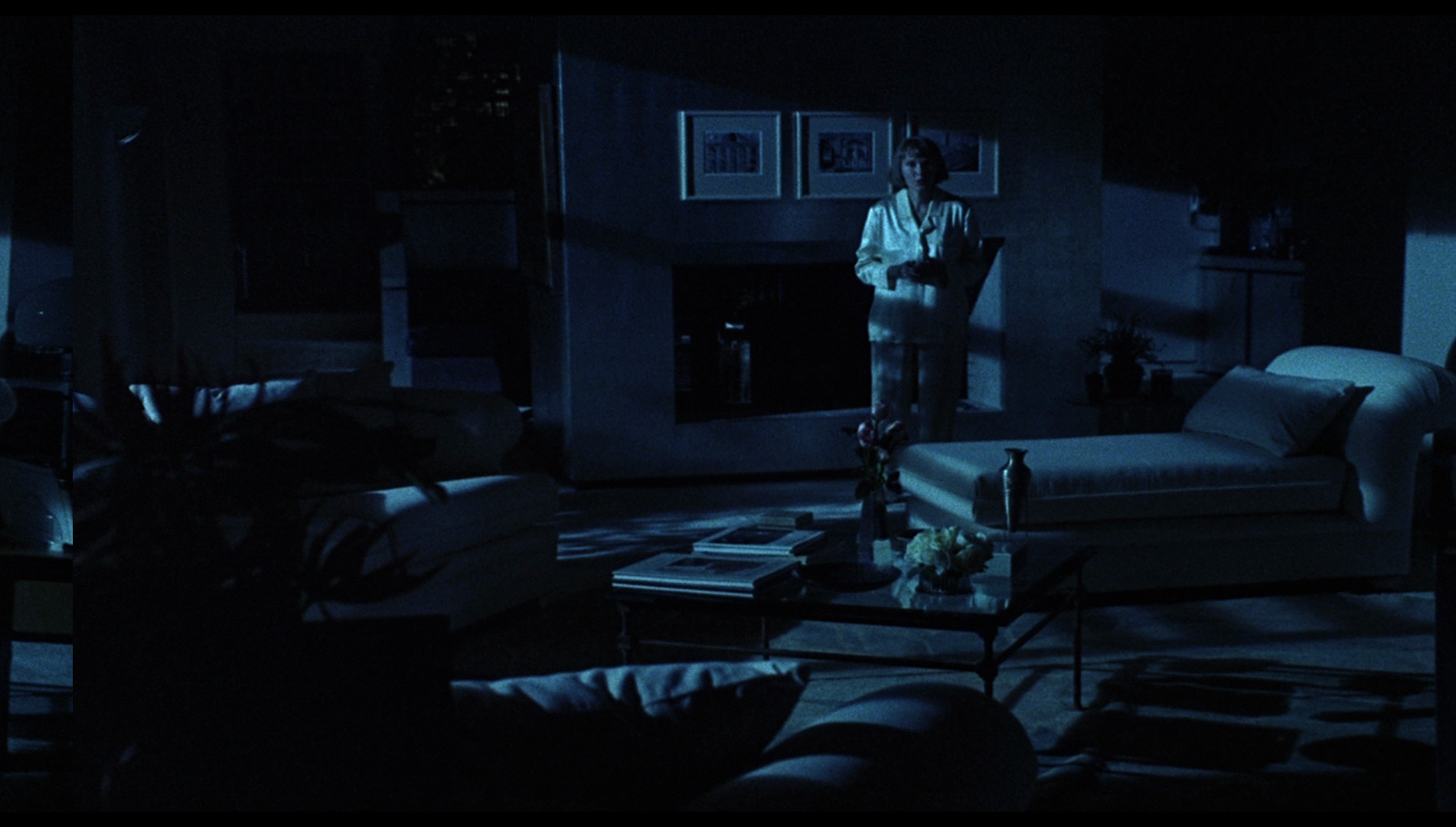

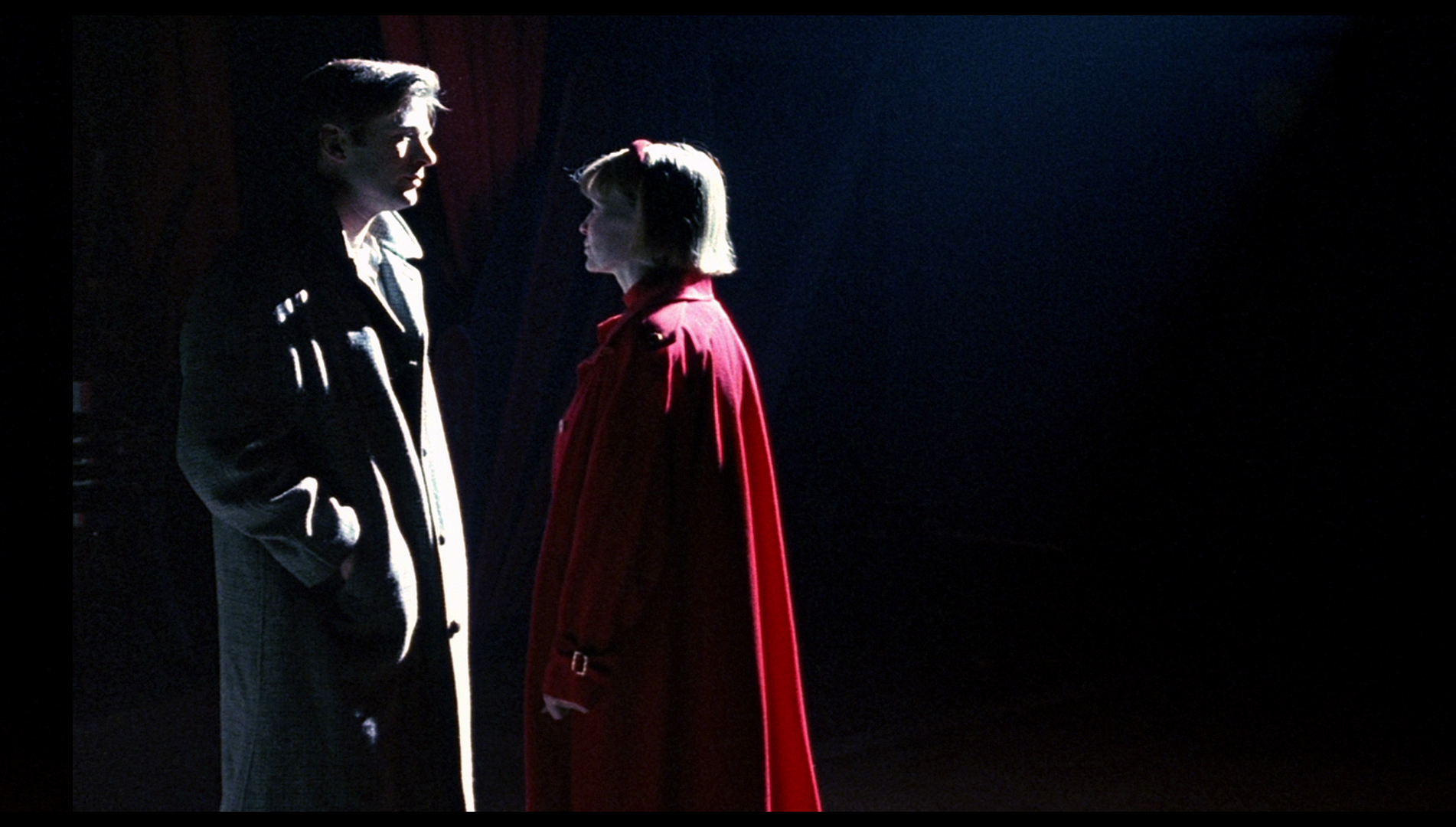
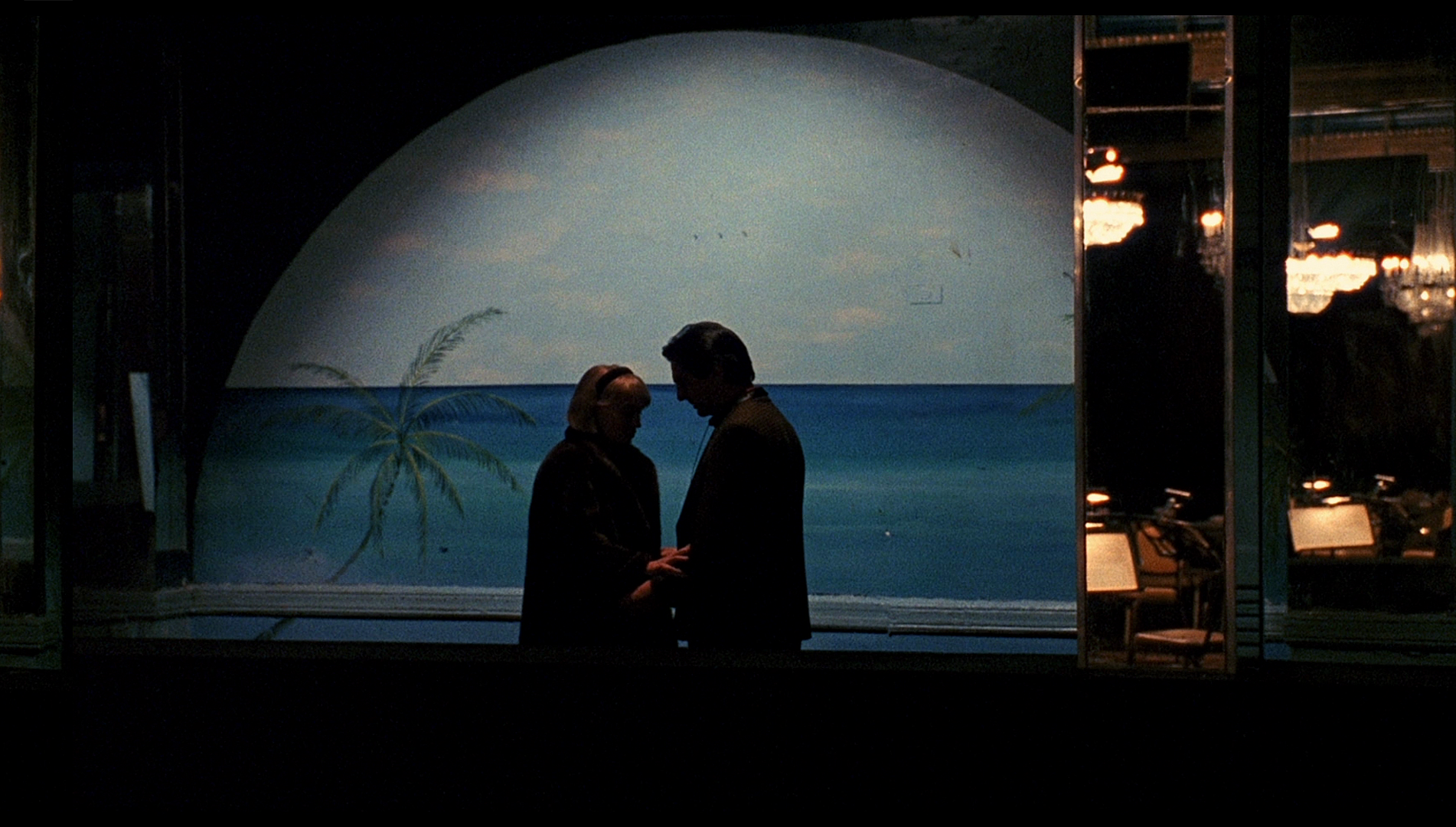
Shadows and Fog
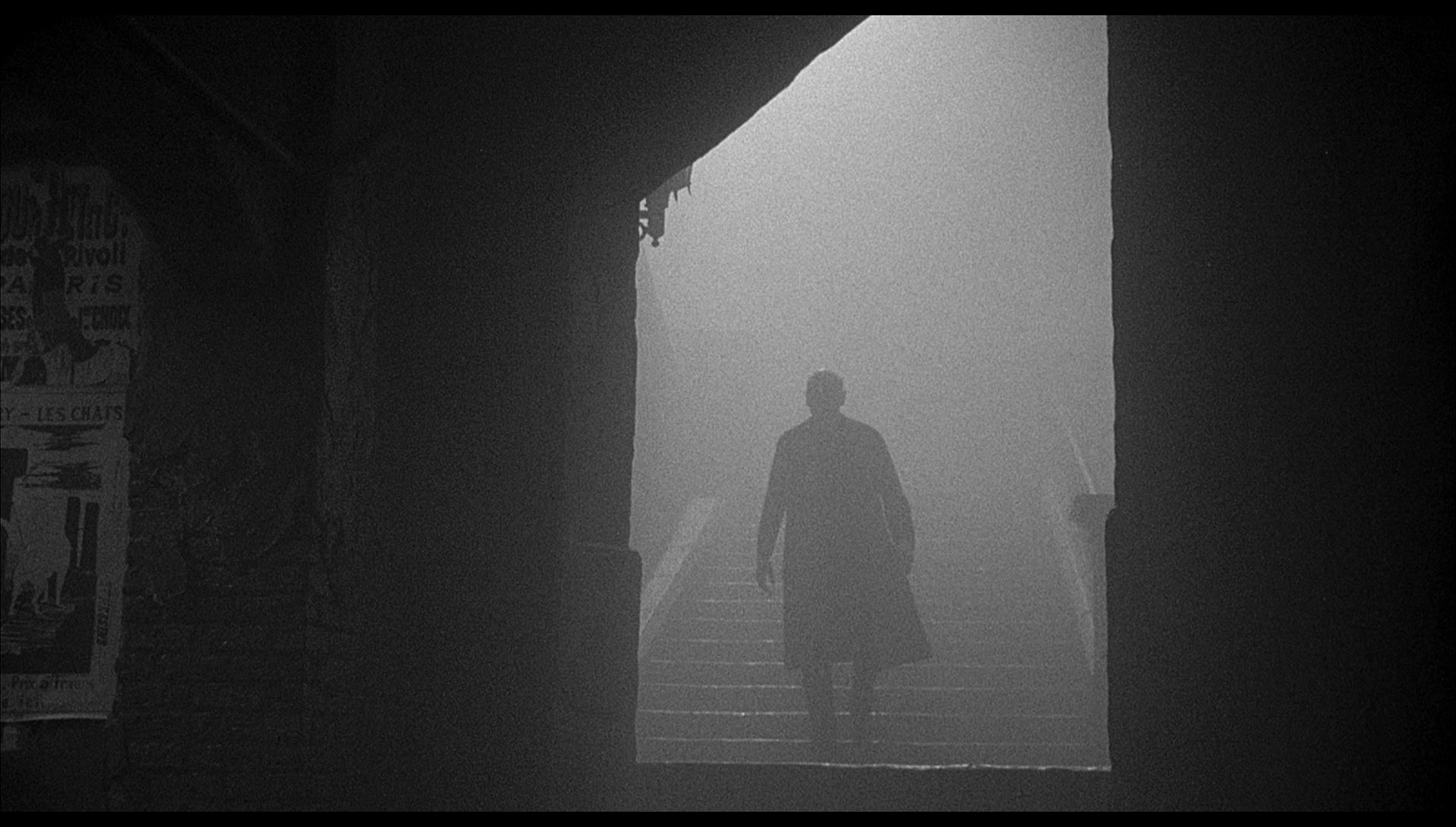
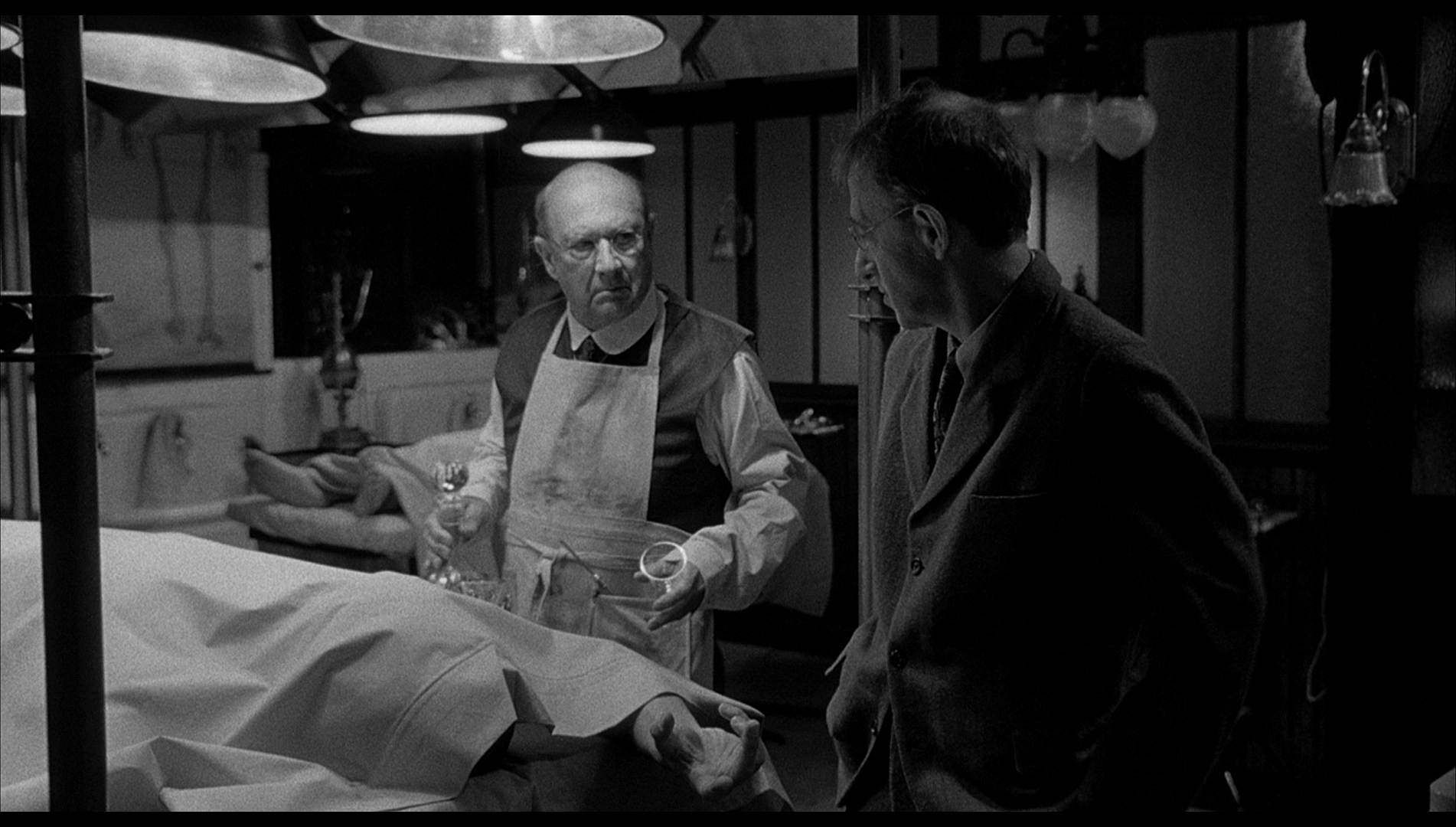
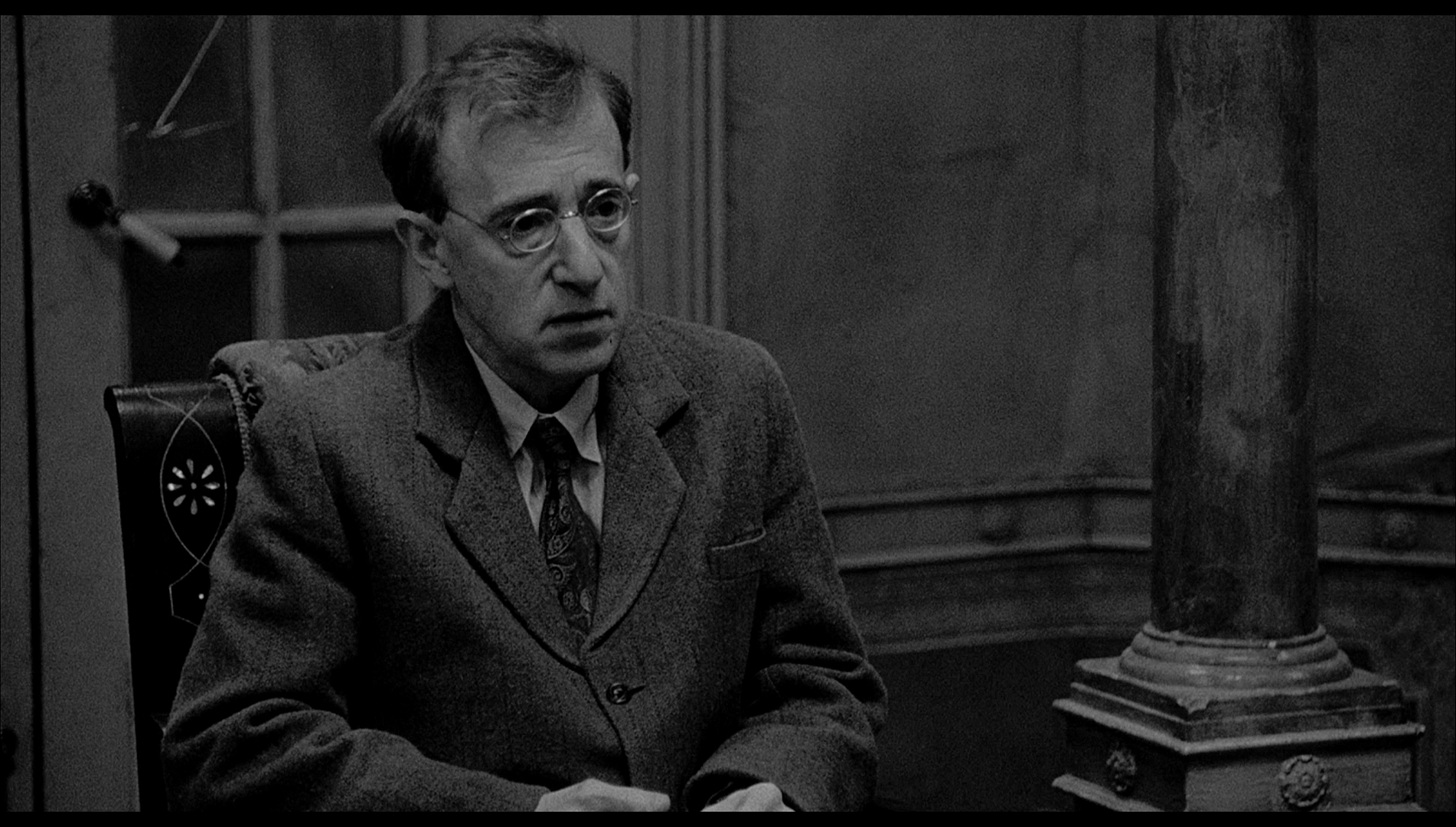
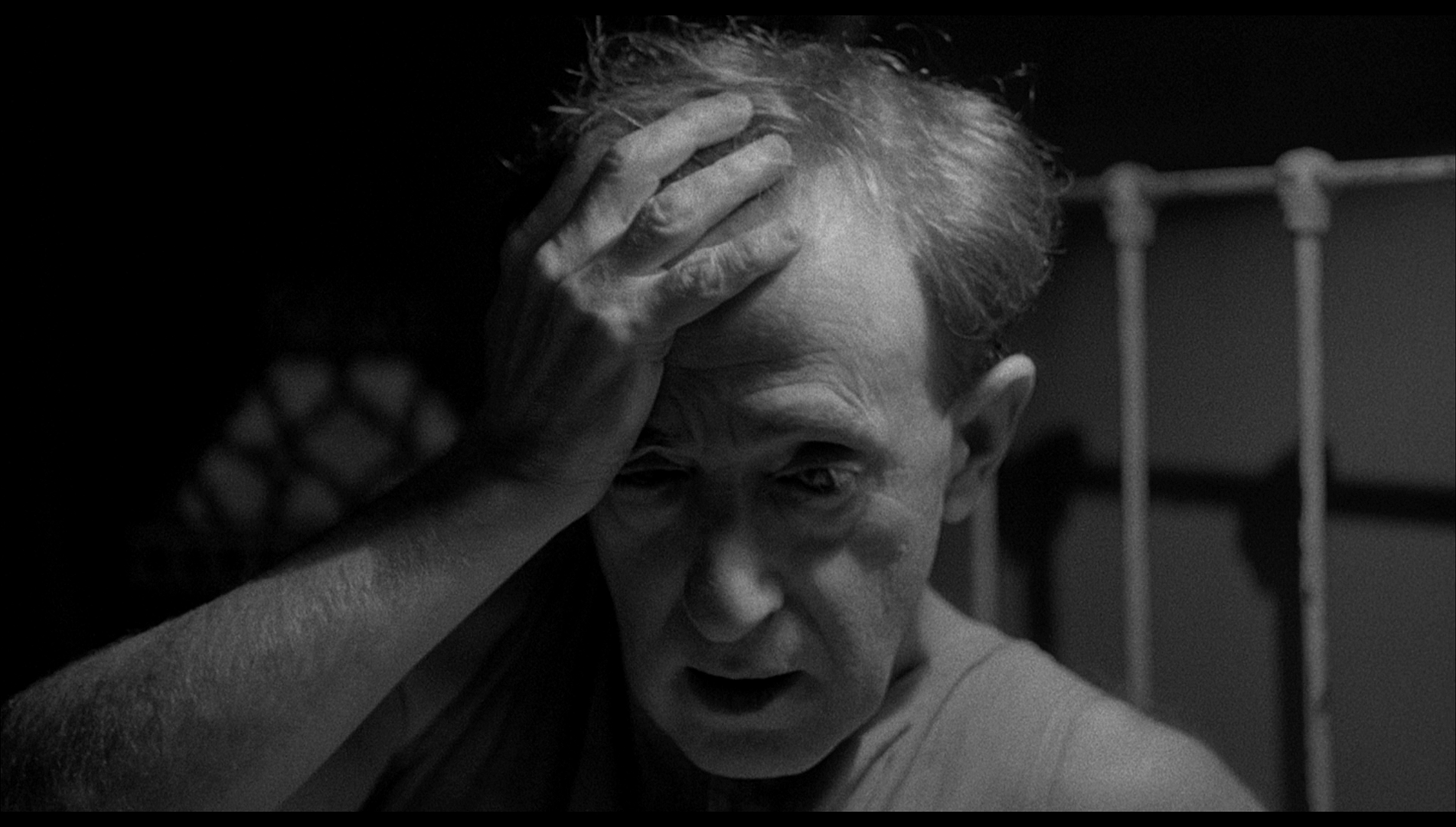
|


